Quick filters:
Vexans Stock Photos and Images
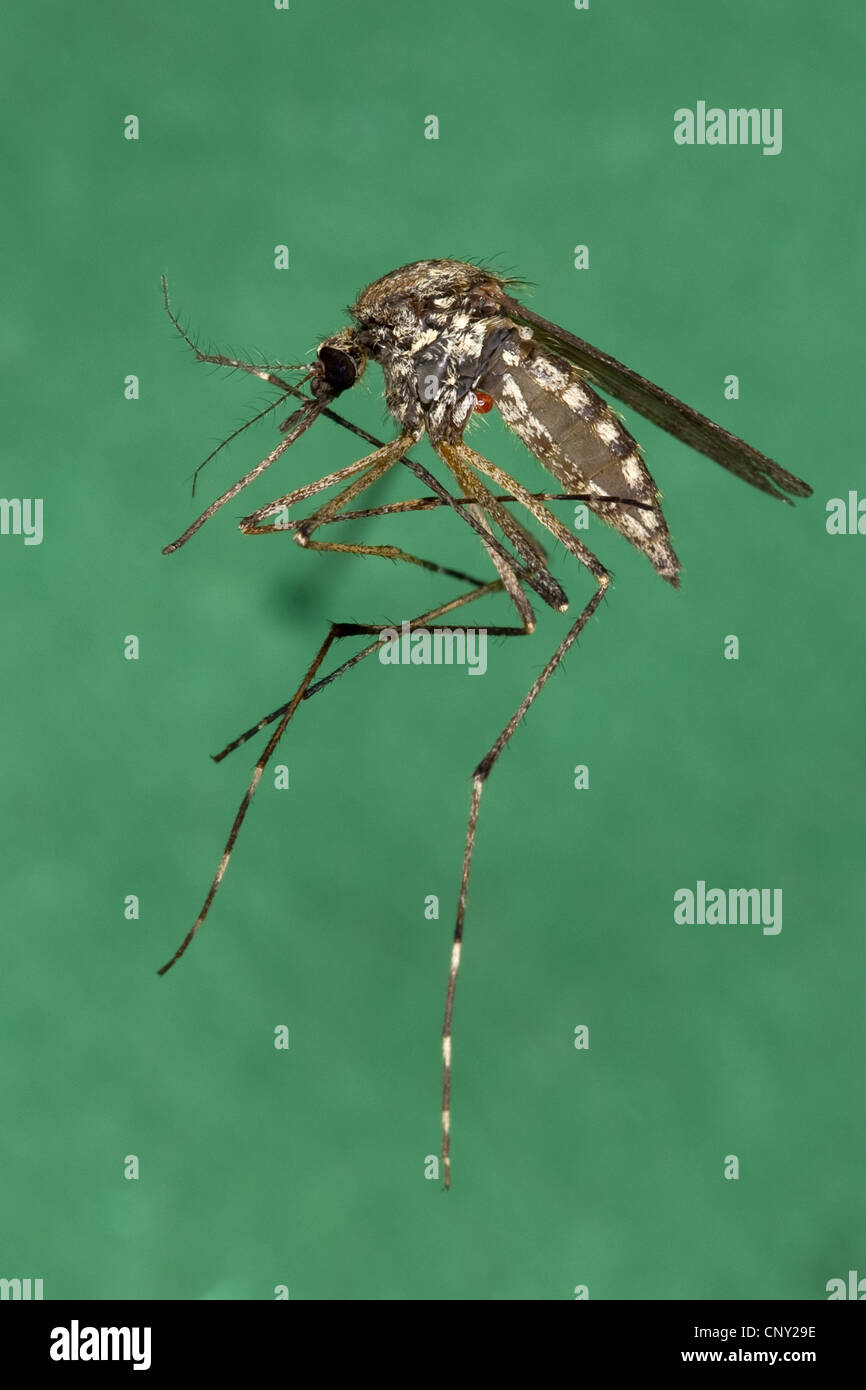 Mosquito, Gnat (Aedes cf. vexans), female, Germany Stock Photohttps://www.alamy.com/image-license-details/?v=1https://www.alamy.com/stock-photo-mosquito-gnat-aedes-cf-vexans-female-germany-47923050.html
Mosquito, Gnat (Aedes cf. vexans), female, Germany Stock Photohttps://www.alamy.com/image-license-details/?v=1https://www.alamy.com/stock-photo-mosquito-gnat-aedes-cf-vexans-female-germany-47923050.htmlRMCNY29E–Mosquito, Gnat (Aedes cf. vexans), female, Germany
 CLOSE UP OF INLAND FLOODWATER MOSQUITO (AEDES VEXANS) ON METAL SCREEN Stock Photohttps://www.alamy.com/image-license-details/?v=1https://www.alamy.com/close-up-of-inland-floodwater-mosquito-aedes-vexans-on-metal-screen-image207680300.html
CLOSE UP OF INLAND FLOODWATER MOSQUITO (AEDES VEXANS) ON METAL SCREEN Stock Photohttps://www.alamy.com/image-license-details/?v=1https://www.alamy.com/close-up-of-inland-floodwater-mosquito-aedes-vexans-on-metal-screen-image207680300.htmlRFP1TJ9G–CLOSE UP OF INLAND FLOODWATER MOSQUITO (AEDES VEXANS) ON METAL SCREEN
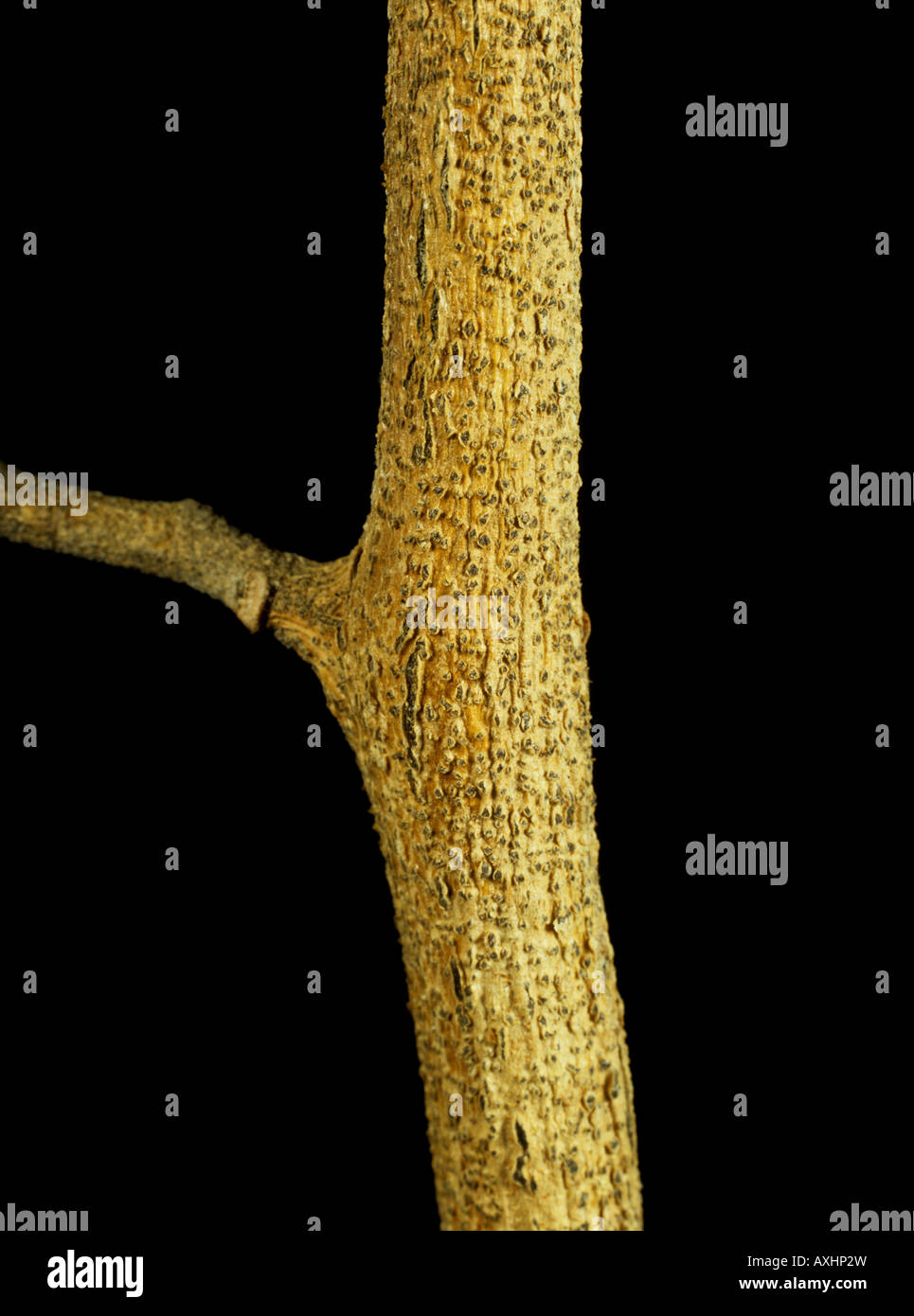 Stem blight Phomopsis vexans lesion on an aubergine or eggplant stem Stock Photohttps://www.alamy.com/image-license-details/?v=1https://www.alamy.com/stock-photo-stem-blight-phomopsis-vexans-lesion-on-an-aubergine-or-eggplant-stem-16850880.html
Stem blight Phomopsis vexans lesion on an aubergine or eggplant stem Stock Photohttps://www.alamy.com/image-license-details/?v=1https://www.alamy.com/stock-photo-stem-blight-phomopsis-vexans-lesion-on-an-aubergine-or-eggplant-stem-16850880.htmlRMAXHP2W–Stem blight Phomopsis vexans lesion on an aubergine or eggplant stem
 Inland floodwater mosquito, Ades vexans, Satara, Maharashtra, India Stock Photohttps://www.alamy.com/image-license-details/?v=1https://www.alamy.com/inland-floodwater-mosquito-ades-vexans-satara-maharashtra-india-image438914943.html
Inland floodwater mosquito, Ades vexans, Satara, Maharashtra, India Stock Photohttps://www.alamy.com/image-license-details/?v=1https://www.alamy.com/inland-floodwater-mosquito-ades-vexans-satara-maharashtra-india-image438914943.htmlRF2GE28DK–Inland floodwater mosquito, Ades vexans, Satara, Maharashtra, India
 Aedes vexans Family Culicidae Genus Aedes Inland floodwater mosquito Tomguito wild nature insect photography, picture, wallpaper Stock Photohttps://www.alamy.com/image-license-details/?v=1https://www.alamy.com/aedes-vexans-family-culicidae-genus-aedes-inland-floodwater-mosquito-tomguito-wild-nature-insect-photography-picture-wallpaper-image605790805.html
Aedes vexans Family Culicidae Genus Aedes Inland floodwater mosquito Tomguito wild nature insect photography, picture, wallpaper Stock Photohttps://www.alamy.com/image-license-details/?v=1https://www.alamy.com/aedes-vexans-family-culicidae-genus-aedes-inland-floodwater-mosquito-tomguito-wild-nature-insect-photography-picture-wallpaper-image605790805.htmlRF2X5G49W–Aedes vexans Family Culicidae Genus Aedes Inland floodwater mosquito Tomguito wild nature insect photography, picture, wallpaper
 Pholiotina arrhenii, also known as Conocybe arrhenii, the ringed conecap, wild mushroom from Finland Stock Photohttps://www.alamy.com/image-license-details/?v=1https://www.alamy.com/pholiotina-arrhenii-also-known-as-conocybe-arrhenii-the-ringed-conecap-wild-mushroom-from-finland-image453700039.html
Pholiotina arrhenii, also known as Conocybe arrhenii, the ringed conecap, wild mushroom from Finland Stock Photohttps://www.alamy.com/image-license-details/?v=1https://www.alamy.com/pholiotina-arrhenii-also-known-as-conocybe-arrhenii-the-ringed-conecap-wild-mushroom-from-finland-image453700039.htmlRF2HA3R0R–Pholiotina arrhenii, also known as Conocybe arrhenii, the ringed conecap, wild mushroom from Finland
 20 July 2020, Brandenburg, Frankfurt (Oder): A mosquito of the species Aedes vexans is hanging from a branch. Photo: Patrick Pleul/dpa-Zentralbild/ZB Stock Photohttps://www.alamy.com/image-license-details/?v=1https://www.alamy.com/20-july-2020-brandenburg-frankfurt-oder-a-mosquito-of-the-species-aedes-vexans-is-hanging-from-a-branch-photo-patrick-pleuldpa-zentralbildzb-image366347066.html
20 July 2020, Brandenburg, Frankfurt (Oder): A mosquito of the species Aedes vexans is hanging from a branch. Photo: Patrick Pleul/dpa-Zentralbild/ZB Stock Photohttps://www.alamy.com/image-license-details/?v=1https://www.alamy.com/20-july-2020-brandenburg-frankfurt-oder-a-mosquito-of-the-species-aedes-vexans-is-hanging-from-a-branch-photo-patrick-pleuldpa-zentralbildzb-image366347066.htmlRM2C80FBP–20 July 2020, Brandenburg, Frankfurt (Oder): A mosquito of the species Aedes vexans is hanging from a branch. Photo: Patrick Pleul/dpa-Zentralbild/ZB
 Conocybe arrhenii, also known as Pholiotina arrhenii, the ringed conecap, wild mushroom from Finland Stock Photohttps://www.alamy.com/image-license-details/?v=1https://www.alamy.com/conocybe-arrhenii-also-known-as-pholiotina-arrhenii-the-ringed-conecap-wild-mushroom-from-finland-image395707205.html
Conocybe arrhenii, also known as Pholiotina arrhenii, the ringed conecap, wild mushroom from Finland Stock Photohttps://www.alamy.com/image-license-details/?v=1https://www.alamy.com/conocybe-arrhenii-also-known-as-pholiotina-arrhenii-the-ringed-conecap-wild-mushroom-from-finland-image395707205.htmlRF2DYP0G5–Conocybe arrhenii, also known as Pholiotina arrhenii, the ringed conecap, wild mushroom from Finland
 Agave vexans Trel Agave vexans Trel. Stock Photohttps://www.alamy.com/image-license-details/?v=1https://www.alamy.com/agave-vexans-trel-agave-vexans-trel-image362481345.html
Agave vexans Trel Agave vexans Trel. Stock Photohttps://www.alamy.com/image-license-details/?v=1https://www.alamy.com/agave-vexans-trel-agave-vexans-trel-image362481345.htmlRM2C1MCJ9–Agave vexans Trel Agave vexans Trel.
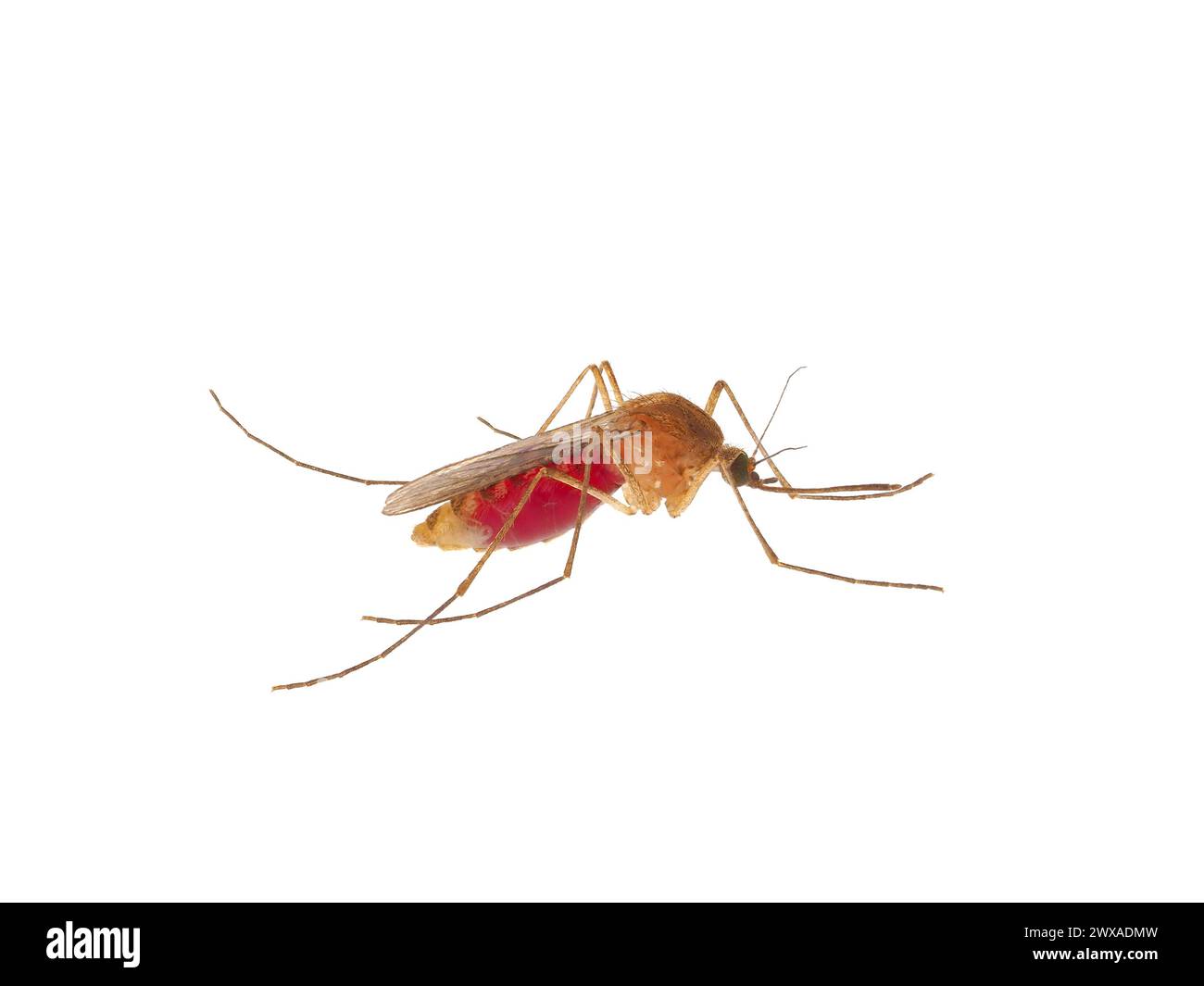 Inland floodwater mosquito full of blood isolated on white background, Aedes vexans Stock Photohttps://www.alamy.com/image-license-details/?v=1https://www.alamy.com/inland-floodwater-mosquito-full-of-blood-isolated-on-white-background-aedes-vexans-image601363865.html
Inland floodwater mosquito full of blood isolated on white background, Aedes vexans Stock Photohttps://www.alamy.com/image-license-details/?v=1https://www.alamy.com/inland-floodwater-mosquito-full-of-blood-isolated-on-white-background-aedes-vexans-image601363865.htmlRF2WXADMW–Inland floodwater mosquito full of blood isolated on white background, Aedes vexans
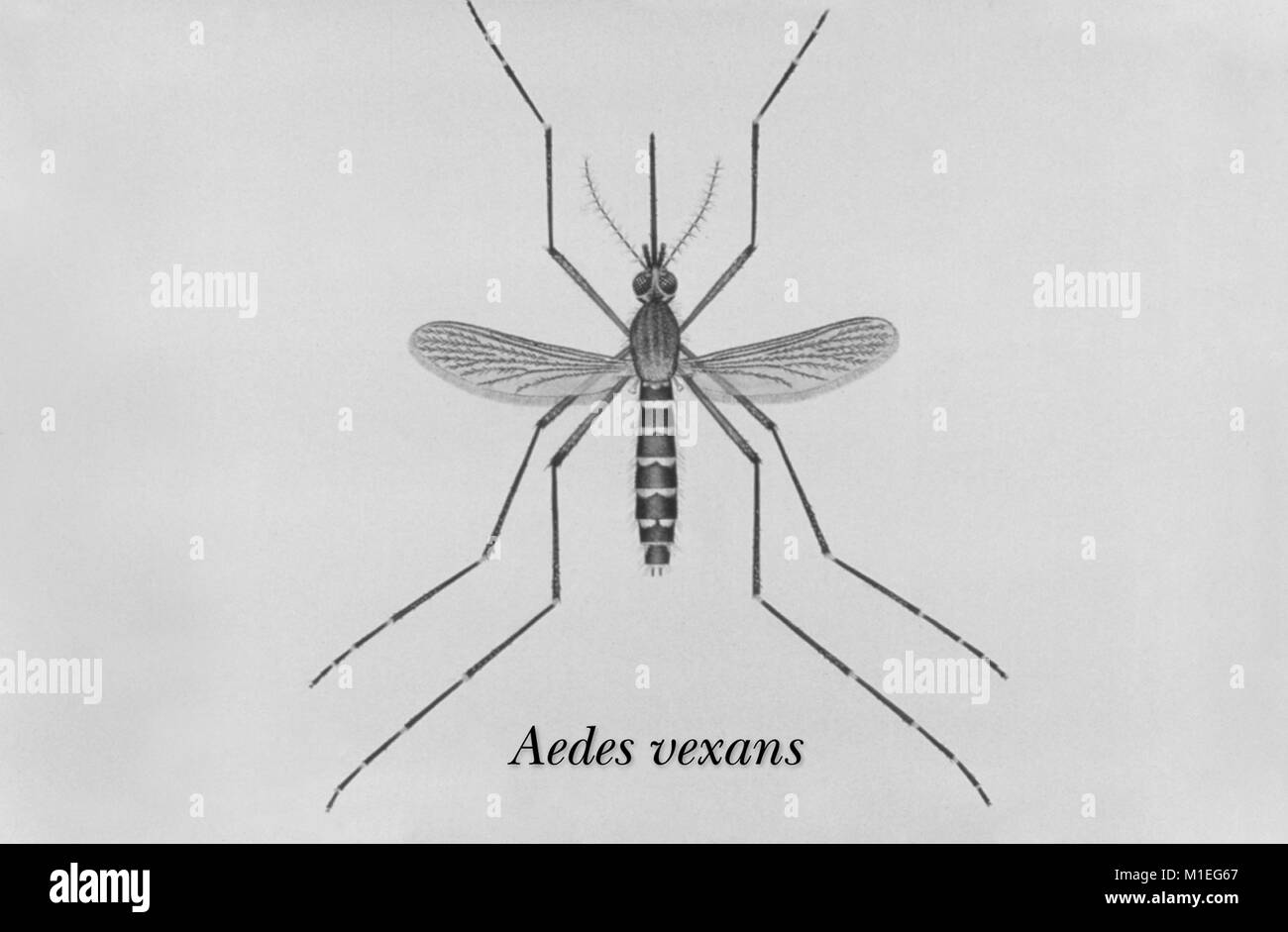 Illustration of an adult Aedes vexans mosquito, one of the mosquito species in which West Nile virus has been found, 1976. Image courtesy CDC/James Stewart. () Stock Photohttps://www.alamy.com/image-license-details/?v=1https://www.alamy.com/stock-photo-illustration-of-an-adult-aedes-vexans-mosquito-one-of-the-mosquito-173038383.html
Illustration of an adult Aedes vexans mosquito, one of the mosquito species in which West Nile virus has been found, 1976. Image courtesy CDC/James Stewart. () Stock Photohttps://www.alamy.com/image-license-details/?v=1https://www.alamy.com/stock-photo-illustration-of-an-adult-aedes-vexans-mosquito-one-of-the-mosquito-173038383.htmlRMM1EG67–Illustration of an adult Aedes vexans mosquito, one of the mosquito species in which West Nile virus has been found, 1976. Image courtesy CDC/James Stewart. ()
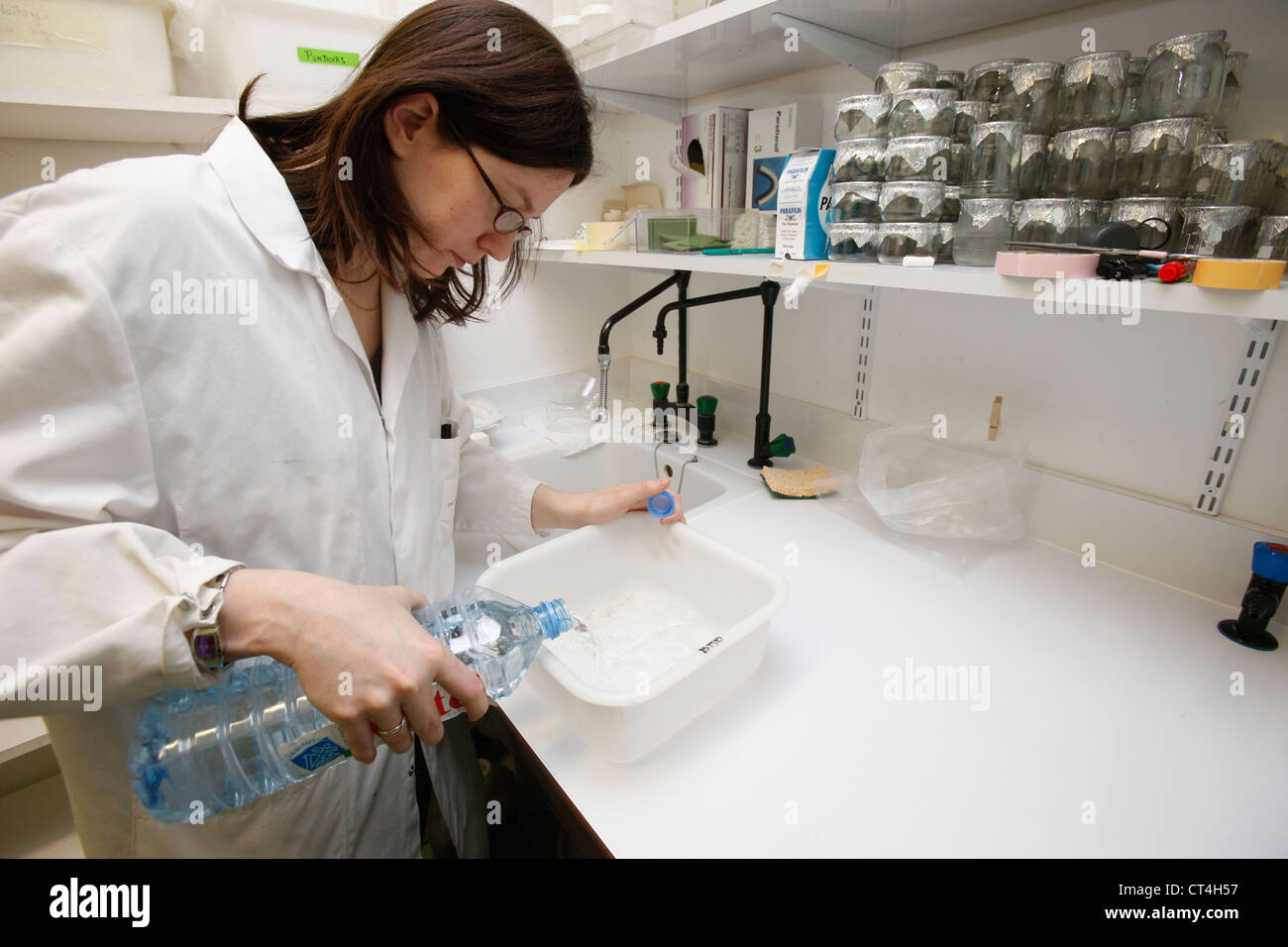 MOSQUITO BREEDING IN LABORATORY Stock Photohttps://www.alamy.com/image-license-details/?v=1https://www.alamy.com/stock-photo-mosquito-breeding-in-laboratory-49273763.html
MOSQUITO BREEDING IN LABORATORY Stock Photohttps://www.alamy.com/image-license-details/?v=1https://www.alamy.com/stock-photo-mosquito-breeding-in-laboratory-49273763.htmlRMCT4H57–MOSQUITO BREEDING IN LABORATORY
 Male mosquito resting on a leaf with green blurred background and copy space Stock Photohttps://www.alamy.com/image-license-details/?v=1https://www.alamy.com/male-mosquito-resting-on-a-leaf-with-green-blurred-background-and-copy-space-image575966899.html
Male mosquito resting on a leaf with green blurred background and copy space Stock Photohttps://www.alamy.com/image-license-details/?v=1https://www.alamy.com/male-mosquito-resting-on-a-leaf-with-green-blurred-background-and-copy-space-image575966899.htmlRF2TD1FJB–Male mosquito resting on a leaf with green blurred background and copy space
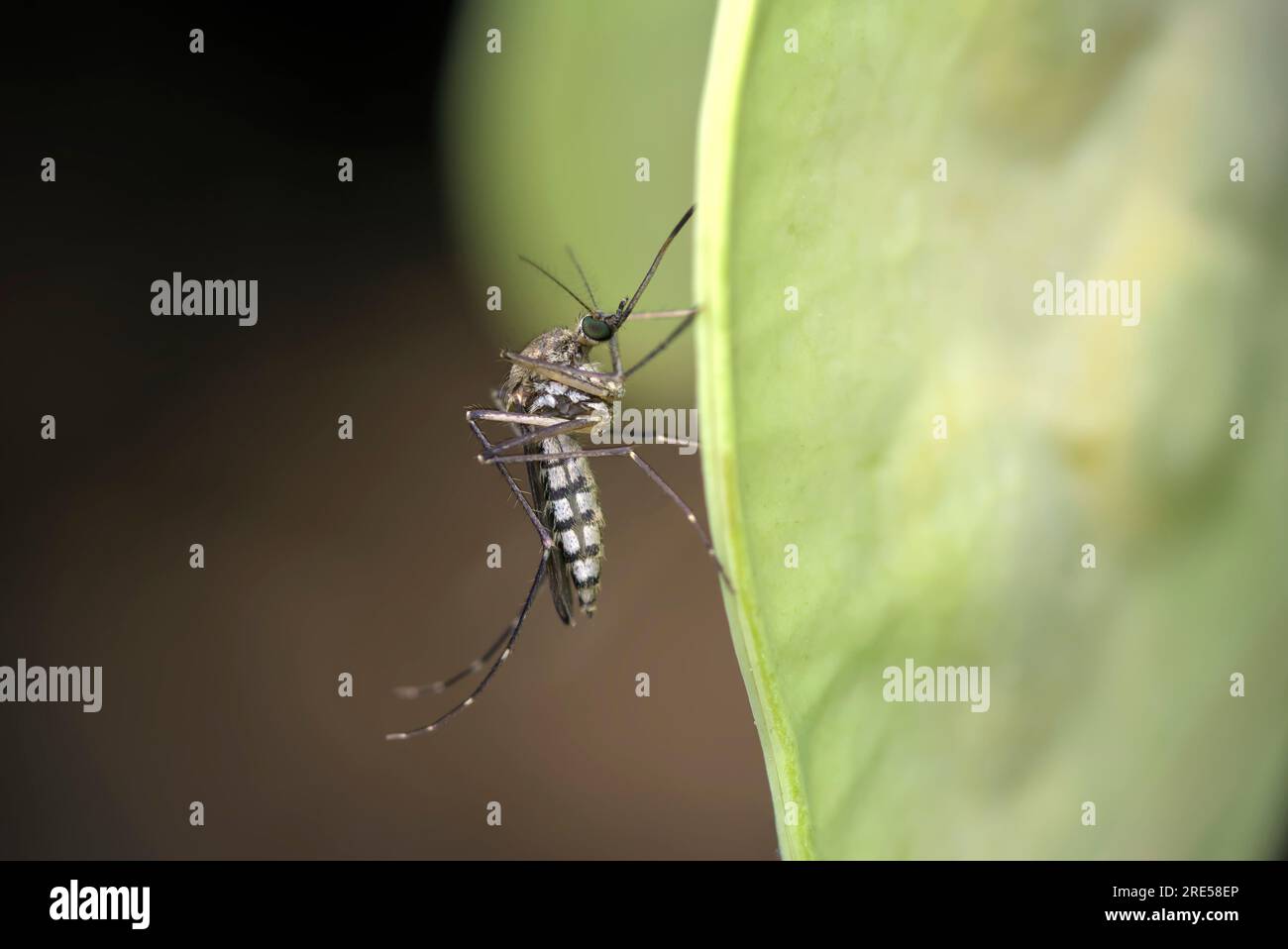 Single mosquito (Aedes sp.) on a leaf, side view, macro photography, insects, biodiversity, vermin, nature Stock Photohttps://www.alamy.com/image-license-details/?v=1https://www.alamy.com/single-mosquito-aedes-sp-on-a-leaf-side-view-macro-photography-insects-biodiversity-vermin-nature-image559453406.html
Single mosquito (Aedes sp.) on a leaf, side view, macro photography, insects, biodiversity, vermin, nature Stock Photohttps://www.alamy.com/image-license-details/?v=1https://www.alamy.com/single-mosquito-aedes-sp-on-a-leaf-side-view-macro-photography-insects-biodiversity-vermin-nature-image559453406.htmlRF2RE58EP–Single mosquito (Aedes sp.) on a leaf, side view, macro photography, insects, biodiversity, vermin, nature
 Mosquito biting through human skin sucking blood Aedes vexans Germany Stock Photohttps://www.alamy.com/image-license-details/?v=1https://www.alamy.com/mosquito-biting-through-human-skin-sucking-blood-aedes-vexans-germany-image6404070.html
Mosquito biting through human skin sucking blood Aedes vexans Germany Stock Photohttps://www.alamy.com/image-license-details/?v=1https://www.alamy.com/mosquito-biting-through-human-skin-sucking-blood-aedes-vexans-germany-image6404070.htmlRFA55WJ7–Mosquito biting through human skin sucking blood Aedes vexans Germany
 Carex vexans FJ Herm Carex vexans FJ Herm. Stock Photohttps://www.alamy.com/image-license-details/?v=1https://www.alamy.com/carex-vexans-fj-herm-carex-vexans-fj-herm-image362298838.html
Carex vexans FJ Herm Carex vexans FJ Herm. Stock Photohttps://www.alamy.com/image-license-details/?v=1https://www.alamy.com/carex-vexans-fj-herm-carex-vexans-fj-herm-image362298838.htmlRM2C1C3T6–Carex vexans FJ Herm Carex vexans FJ Herm.
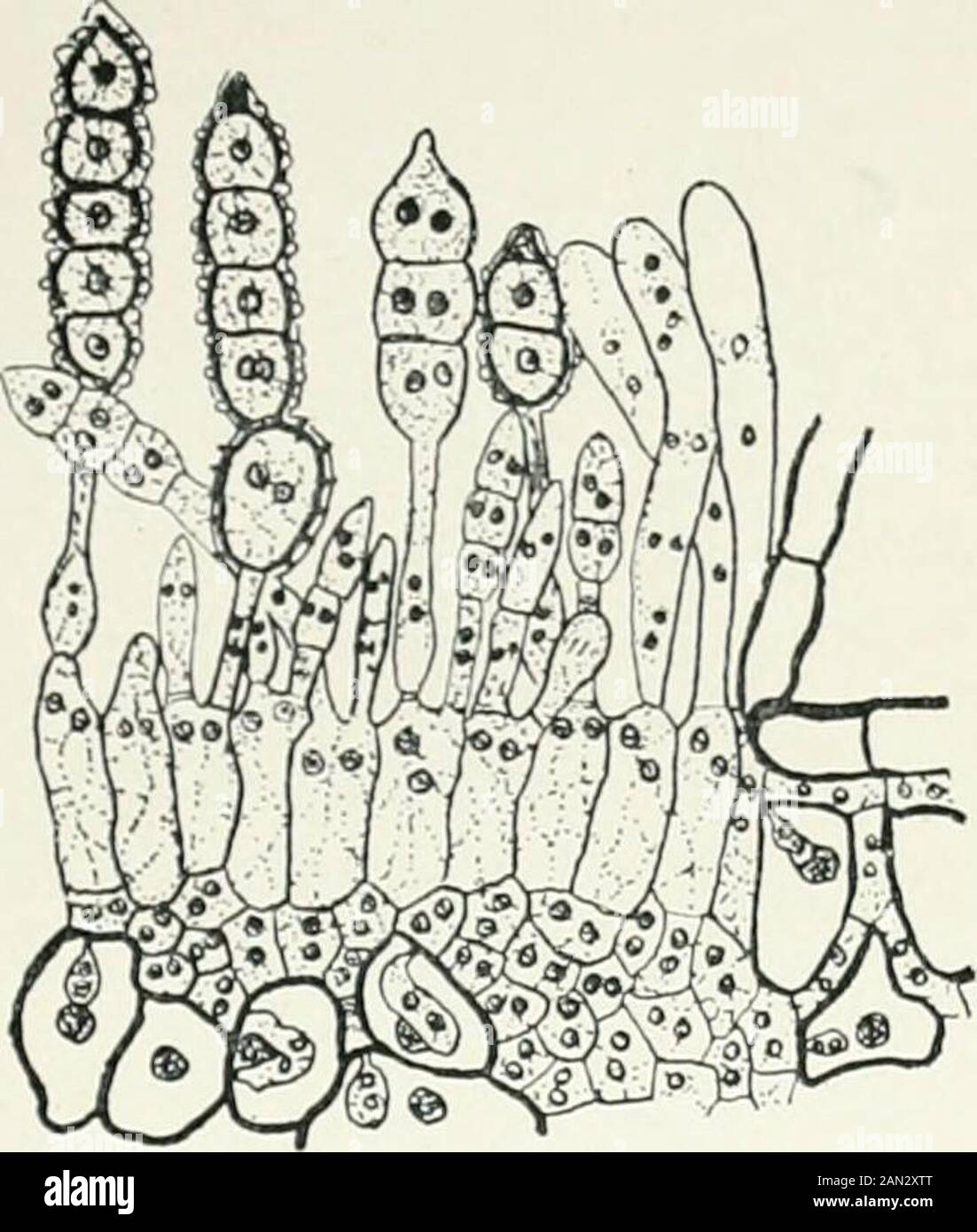 Fungi, Ascomycetes, Ustilaginales, Uredinales . its wall is variously roughened in most speciesby minute projections on the surface. Two or more germ-pores are usuallypresent and the uredospore, like the cells which give rise to it, is invariablybinucleate ; it produces a binucleate mycelium on which teleutospores orfurther crops of uredospores are formed. Certain species(Puccinia vexans,etc),occurring under very dry conditions, lit I LRKDINALKS 205 produce a second type of uredospore with thick walls which arc adapted tosurvive unfavourable conditions; these are known as amphispores. Both a Stock Photohttps://www.alamy.com/image-license-details/?v=1https://www.alamy.com/fungi-ascomycetes-ustilaginales-uredinales-its-wall-is-variously-roughened-in-most-speciesby-minute-projections-on-the-surface-two-or-more-germ-pores-are-usuallypresent-and-the-uredospore-like-the-cells-which-give-rise-to-it-is-invariablybinucleate-it-produces-a-binucleate-mycelium-on-which-teleutospores-orfurther-crops-of-uredospores-are-formed-certain-speciespuccinia-vexansetcoccurring-under-very-dry-conditions-lit-i-lrkdinalks-205-produce-a-second-type-of-uredospore-with-thick-walls-which-arc-adapted-tosurvive-unfavourable-conditions-these-are-known-as-amphispores-both-a-image339969752.html
Fungi, Ascomycetes, Ustilaginales, Uredinales . its wall is variously roughened in most speciesby minute projections on the surface. Two or more germ-pores are usuallypresent and the uredospore, like the cells which give rise to it, is invariablybinucleate ; it produces a binucleate mycelium on which teleutospores orfurther crops of uredospores are formed. Certain species(Puccinia vexans,etc),occurring under very dry conditions, lit I LRKDINALKS 205 produce a second type of uredospore with thick walls which arc adapted tosurvive unfavourable conditions; these are known as amphispores. Both a Stock Photohttps://www.alamy.com/image-license-details/?v=1https://www.alamy.com/fungi-ascomycetes-ustilaginales-uredinales-its-wall-is-variously-roughened-in-most-speciesby-minute-projections-on-the-surface-two-or-more-germ-pores-are-usuallypresent-and-the-uredospore-like-the-cells-which-give-rise-to-it-is-invariablybinucleate-it-produces-a-binucleate-mycelium-on-which-teleutospores-orfurther-crops-of-uredospores-are-formed-certain-speciespuccinia-vexansetcoccurring-under-very-dry-conditions-lit-i-lrkdinalks-205-produce-a-second-type-of-uredospore-with-thick-walls-which-arc-adapted-tosurvive-unfavourable-conditions-these-are-known-as-amphispores-both-a-image339969752.htmlRM2AN2XTT–Fungi, Ascomycetes, Ustilaginales, Uredinales . its wall is variously roughened in most speciesby minute projections on the surface. Two or more germ-pores are usuallypresent and the uredospore, like the cells which give rise to it, is invariablybinucleate ; it produces a binucleate mycelium on which teleutospores orfurther crops of uredospores are formed. Certain species(Puccinia vexans,etc),occurring under very dry conditions, lit I LRKDINALKS 205 produce a second type of uredospore with thick walls which arc adapted tosurvive unfavourable conditions; these are known as amphispores. Both a
 . Comparative morphology and biology of the fungi, mycetozoa and bacteria . Plant morphology; Fungi; Myxomycetes; Bacteriology. 136 DIVISION II.—COURSE OF DEVELOPMENT OF FUNGI. The above phenomena close the cycle of development and in some species the course of development is actually limited to them; many observations at least have failed to detect anything further, for example in Pythium vexans and Artotrogus. We may therefore conclude that the essential points in the life-history of the whole group are confined to these phenomena. But in most species there is this difference, that the cours Stock Photohttps://www.alamy.com/image-license-details/?v=1https://www.alamy.com/comparative-morphology-and-biology-of-the-fungi-mycetozoa-and-bacteria-plant-morphology-fungi-myxomycetes-bacteriology-136-division-iicourse-of-development-of-fungi-the-above-phenomena-close-the-cycle-of-development-and-in-some-species-the-course-of-development-is-actually-limited-to-them-many-observations-at-least-have-failed-to-detect-anything-further-for-example-in-pythium-vexans-and-artotrogus-we-may-therefore-conclude-that-the-essential-points-in-the-life-history-of-the-whole-group-are-confined-to-these-phenomena-but-in-most-species-there-is-this-difference-that-the-cours-image216449078.html
. Comparative morphology and biology of the fungi, mycetozoa and bacteria . Plant morphology; Fungi; Myxomycetes; Bacteriology. 136 DIVISION II.—COURSE OF DEVELOPMENT OF FUNGI. The above phenomena close the cycle of development and in some species the course of development is actually limited to them; many observations at least have failed to detect anything further, for example in Pythium vexans and Artotrogus. We may therefore conclude that the essential points in the life-history of the whole group are confined to these phenomena. But in most species there is this difference, that the cours Stock Photohttps://www.alamy.com/image-license-details/?v=1https://www.alamy.com/comparative-morphology-and-biology-of-the-fungi-mycetozoa-and-bacteria-plant-morphology-fungi-myxomycetes-bacteriology-136-division-iicourse-of-development-of-fungi-the-above-phenomena-close-the-cycle-of-development-and-in-some-species-the-course-of-development-is-actually-limited-to-them-many-observations-at-least-have-failed-to-detect-anything-further-for-example-in-pythium-vexans-and-artotrogus-we-may-therefore-conclude-that-the-essential-points-in-the-life-history-of-the-whole-group-are-confined-to-these-phenomena-but-in-most-species-there-is-this-difference-that-the-cours-image216449078.htmlRMPG4306–. Comparative morphology and biology of the fungi, mycetozoa and bacteria . Plant morphology; Fungi; Myxomycetes; Bacteriology. 136 DIVISION II.—COURSE OF DEVELOPMENT OF FUNGI. The above phenomena close the cycle of development and in some species the course of development is actually limited to them; many observations at least have failed to detect anything further, for example in Pythium vexans and Artotrogus. We may therefore conclude that the essential points in the life-history of the whole group are confined to these phenomena. But in most species there is this difference, that the cours
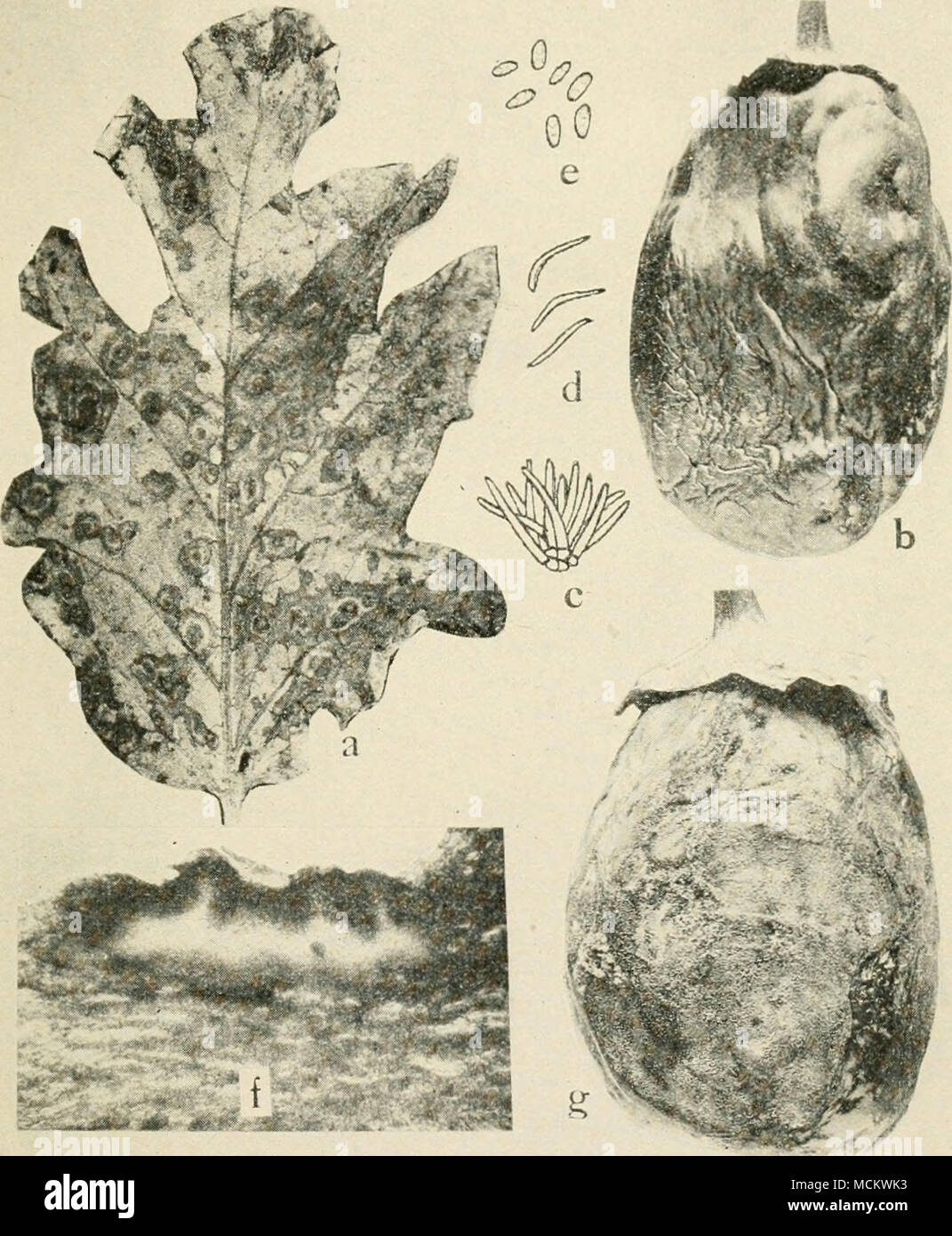 . Fig. 56. Egg-Plant Diseases. (7. Phomopsis of leaf, 6. Phomopsis on fruit, c. conidiophores, <f. stylospores, e. pycnospores of Phomopsis vexans, f. photomicrograph of a cross section through an infected calyx of an egg plant showing pycnidia of P. vexans (c to/, after Harter), K. anthracnose on egg-plant fruit. Stock Photohttps://www.alamy.com/image-license-details/?v=1https://www.alamy.com/fig-56-egg-plant-diseases-7-phomopsis-of-leaf-6-phomopsis-on-fruit-c-conidiophores-ltf-stylospores-e-pycnospores-of-phomopsis-vexans-f-photomicrograph-of-a-cross-section-through-an-infected-calyx-of-an-egg-plant-showing-pycnidia-of-p-vexans-c-to-after-harter-k-anthracnose-on-egg-plant-fruit-image179916775.html
. Fig. 56. Egg-Plant Diseases. (7. Phomopsis of leaf, 6. Phomopsis on fruit, c. conidiophores, <f. stylospores, e. pycnospores of Phomopsis vexans, f. photomicrograph of a cross section through an infected calyx of an egg plant showing pycnidia of P. vexans (c to/, after Harter), K. anthracnose on egg-plant fruit. Stock Photohttps://www.alamy.com/image-license-details/?v=1https://www.alamy.com/fig-56-egg-plant-diseases-7-phomopsis-of-leaf-6-phomopsis-on-fruit-c-conidiophores-ltf-stylospores-e-pycnospores-of-phomopsis-vexans-f-photomicrograph-of-a-cross-section-through-an-infected-calyx-of-an-egg-plant-showing-pycnidia-of-p-vexans-c-to-after-harter-k-anthracnose-on-egg-plant-fruit-image179916775.htmlRMMCKWK3–. Fig. 56. Egg-Plant Diseases. (7. Phomopsis of leaf, 6. Phomopsis on fruit, c. conidiophores, <f. stylospores, e. pycnospores of Phomopsis vexans, f. photomicrograph of a cross section through an infected calyx of an egg plant showing pycnidia of P. vexans (c to/, after Harter), K. anthracnose on egg-plant fruit.
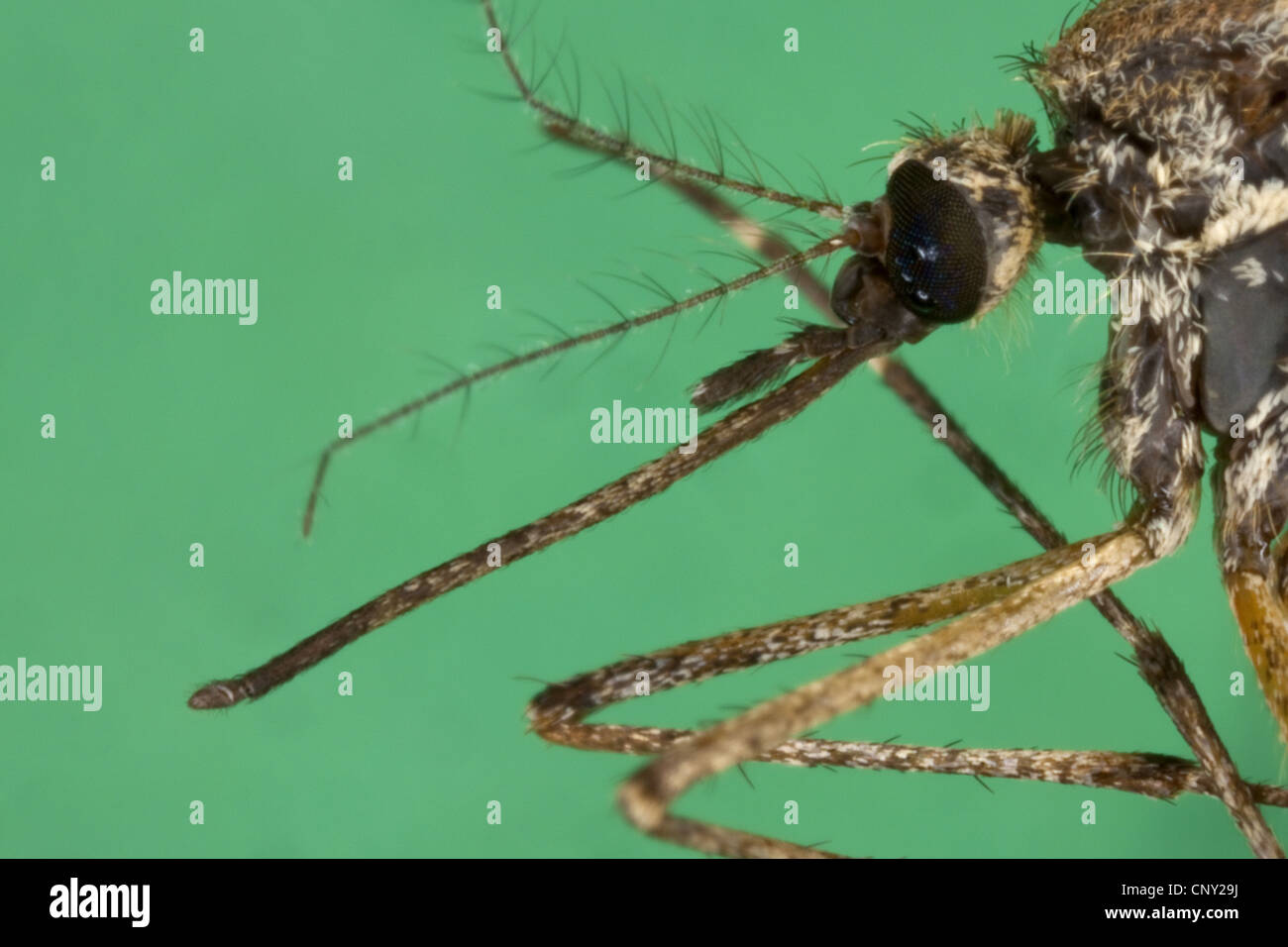 Mosquito, Gnat (Aedes cf. vexans), female, Germany Stock Photohttps://www.alamy.com/image-license-details/?v=1https://www.alamy.com/stock-photo-mosquito-gnat-aedes-cf-vexans-female-germany-47923054.html
Mosquito, Gnat (Aedes cf. vexans), female, Germany Stock Photohttps://www.alamy.com/image-license-details/?v=1https://www.alamy.com/stock-photo-mosquito-gnat-aedes-cf-vexans-female-germany-47923054.htmlRMCNY29J–Mosquito, Gnat (Aedes cf. vexans), female, Germany
![Diseases of truck crops and Diseases of truck crops and their control diseasesoftruckc00taubuoft Year: [1918] Fig. 56. Egg-Plant Diseases. a. Phomopsis of leaf, 6. Phomopsis on fruit, c. conidiophores, rf. stylospores, e. pycnospores of Phomopsis vexans, f. photomicrograph of a cross section through an infected calyx of an egg plant showing pycnidia of P. vexans (c. to f. after Harter), g.. anthracnose on egg-plant fruit. Stock Photo Diseases of truck crops and Diseases of truck crops and their control diseasesoftruckc00taubuoft Year: [1918] Fig. 56. Egg-Plant Diseases. a. Phomopsis of leaf, 6. Phomopsis on fruit, c. conidiophores, rf. stylospores, e. pycnospores of Phomopsis vexans, f. photomicrograph of a cross section through an infected calyx of an egg plant showing pycnidia of P. vexans (c. to f. after Harter), g.. anthracnose on egg-plant fruit. Stock Photo](https://c8.alamy.com/comp/T1JH41/diseases-of-truck-crops-and-diseases-of-truck-crops-and-their-control-diseasesoftruckc00taubuoft-year-1918-fig-56-egg-plant-diseases-a-phomopsis-of-leaf-6-phomopsis-on-fruit-c-conidiophores-rf-stylospores-e-pycnospores-of-phomopsis-vexans-f-photomicrograph-of-a-cross-section-through-an-infected-calyx-of-an-egg-plant-showing-pycnidia-of-p-vexans-c-to-f-after-harter-g-anthracnose-on-egg-plant-fruit-T1JH41.jpg) Diseases of truck crops and Diseases of truck crops and their control diseasesoftruckc00taubuoft Year: [1918] Fig. 56. Egg-Plant Diseases. a. Phomopsis of leaf, 6. Phomopsis on fruit, c. conidiophores, rf. stylospores, e. pycnospores of Phomopsis vexans, f. photomicrograph of a cross section through an infected calyx of an egg plant showing pycnidia of P. vexans (c. to f. after Harter), g.. anthracnose on egg-plant fruit. Stock Photohttps://www.alamy.com/image-license-details/?v=1https://www.alamy.com/diseases-of-truck-crops-and-diseases-of-truck-crops-and-their-control-diseasesoftruckc00taubuoft-year-1918-fig-56-egg-plant-diseases-a-phomopsis-of-leaf-6-phomopsis-on-fruit-c-conidiophores-rf-stylospores-e-pycnospores-of-phomopsis-vexans-f-photomicrograph-of-a-cross-section-through-an-infected-calyx-of-an-egg-plant-showing-pycnidia-of-p-vexans-c-to-f-after-harter-g-anthracnose-on-egg-plant-fruit-image241968385.html
Diseases of truck crops and Diseases of truck crops and their control diseasesoftruckc00taubuoft Year: [1918] Fig. 56. Egg-Plant Diseases. a. Phomopsis of leaf, 6. Phomopsis on fruit, c. conidiophores, rf. stylospores, e. pycnospores of Phomopsis vexans, f. photomicrograph of a cross section through an infected calyx of an egg plant showing pycnidia of P. vexans (c. to f. after Harter), g.. anthracnose on egg-plant fruit. Stock Photohttps://www.alamy.com/image-license-details/?v=1https://www.alamy.com/diseases-of-truck-crops-and-diseases-of-truck-crops-and-their-control-diseasesoftruckc00taubuoft-year-1918-fig-56-egg-plant-diseases-a-phomopsis-of-leaf-6-phomopsis-on-fruit-c-conidiophores-rf-stylospores-e-pycnospores-of-phomopsis-vexans-f-photomicrograph-of-a-cross-section-through-an-infected-calyx-of-an-egg-plant-showing-pycnidia-of-p-vexans-c-to-f-after-harter-g-anthracnose-on-egg-plant-fruit-image241968385.htmlRMT1JH41–Diseases of truck crops and Diseases of truck crops and their control diseasesoftruckc00taubuoft Year: [1918] Fig. 56. Egg-Plant Diseases. a. Phomopsis of leaf, 6. Phomopsis on fruit, c. conidiophores, rf. stylospores, e. pycnospores of Phomopsis vexans, f. photomicrograph of a cross section through an infected calyx of an egg plant showing pycnidia of P. vexans (c. to f. after Harter), g.. anthracnose on egg-plant fruit.
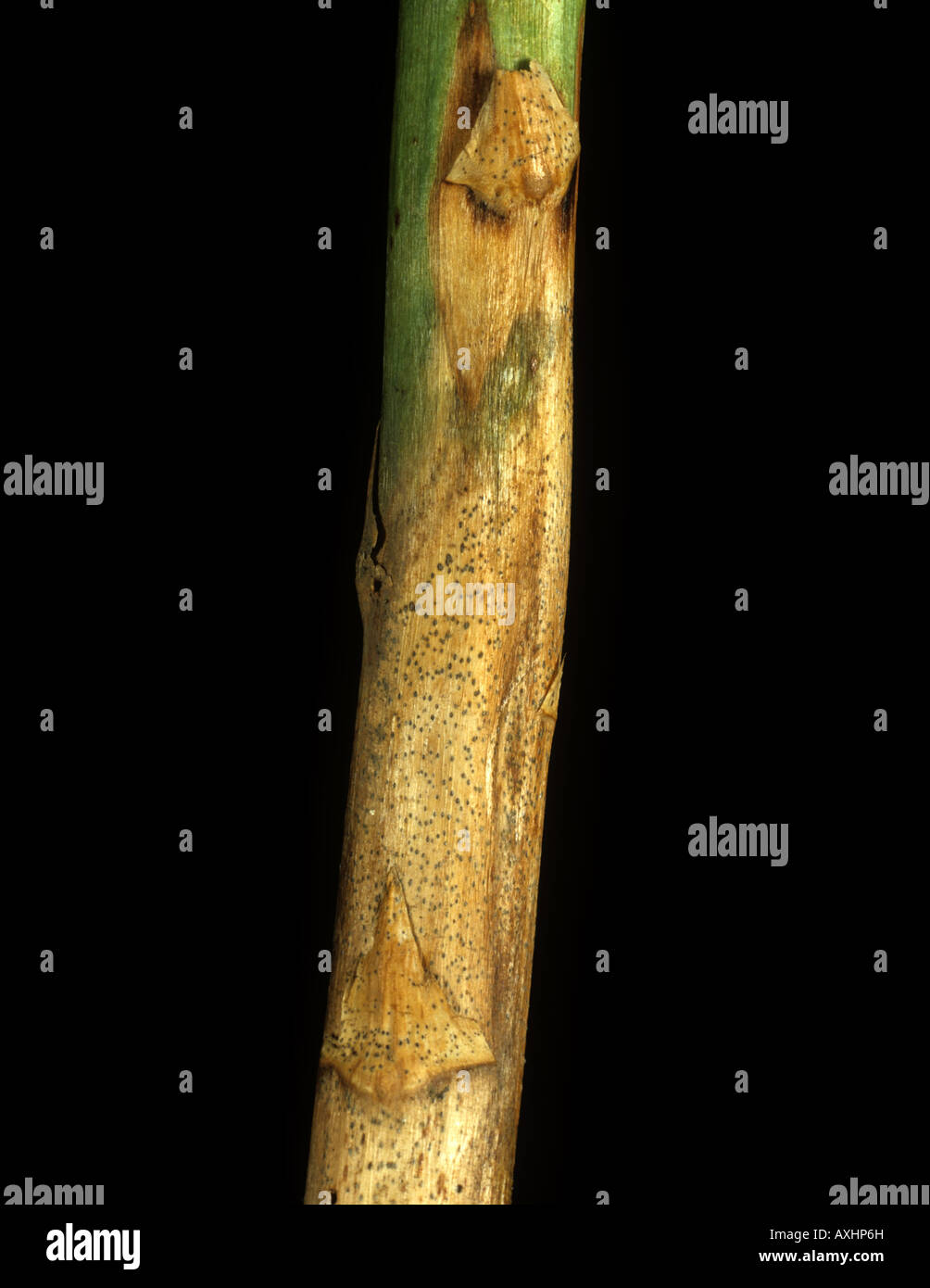 A blight Phomopsis vexans lesion on an aubergine or eggplant stem Stock Photohttps://www.alamy.com/image-license-details/?v=1https://www.alamy.com/stock-photo-a-blight-phomopsis-vexans-lesion-on-an-aubergine-or-eggplant-stem-16850920.html
A blight Phomopsis vexans lesion on an aubergine or eggplant stem Stock Photohttps://www.alamy.com/image-license-details/?v=1https://www.alamy.com/stock-photo-a-blight-phomopsis-vexans-lesion-on-an-aubergine-or-eggplant-stem-16850920.htmlRMAXHP6H–A blight Phomopsis vexans lesion on an aubergine or eggplant stem
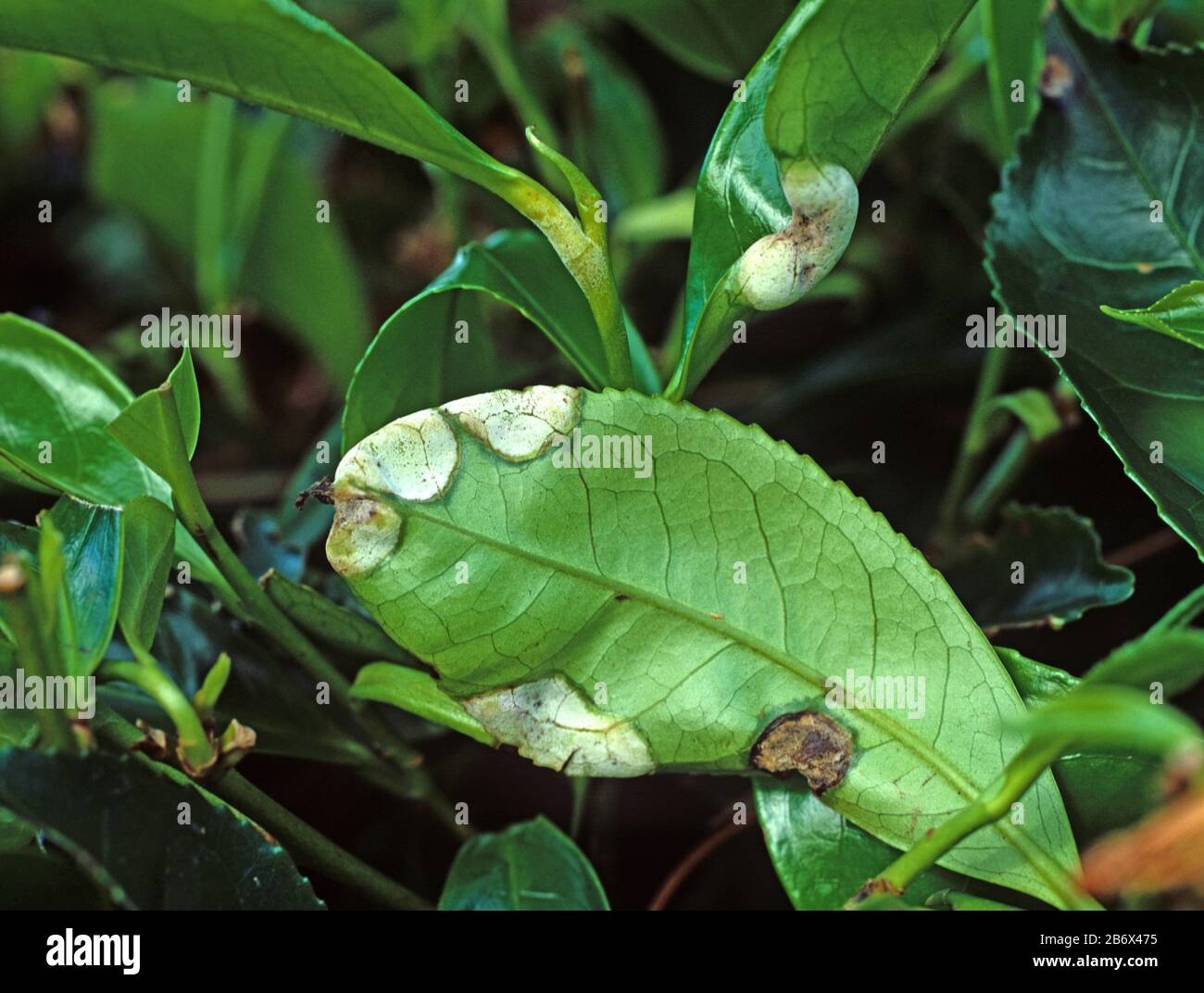 Blister blight (Exobasidium vexans) white blisters on tea leaves, Cameron Highlands, Malaysia, February Stock Photohttps://www.alamy.com/image-license-details/?v=1https://www.alamy.com/blister-blight-exobasidium-vexans-white-blisters-on-tea-leaves-cameron-highlands-malaysia-february-image348469385.html
Blister blight (Exobasidium vexans) white blisters on tea leaves, Cameron Highlands, Malaysia, February Stock Photohttps://www.alamy.com/image-license-details/?v=1https://www.alamy.com/blister-blight-exobasidium-vexans-white-blisters-on-tea-leaves-cameron-highlands-malaysia-february-image348469385.htmlRM2B6X475–Blister blight (Exobasidium vexans) white blisters on tea leaves, Cameron Highlands, Malaysia, February
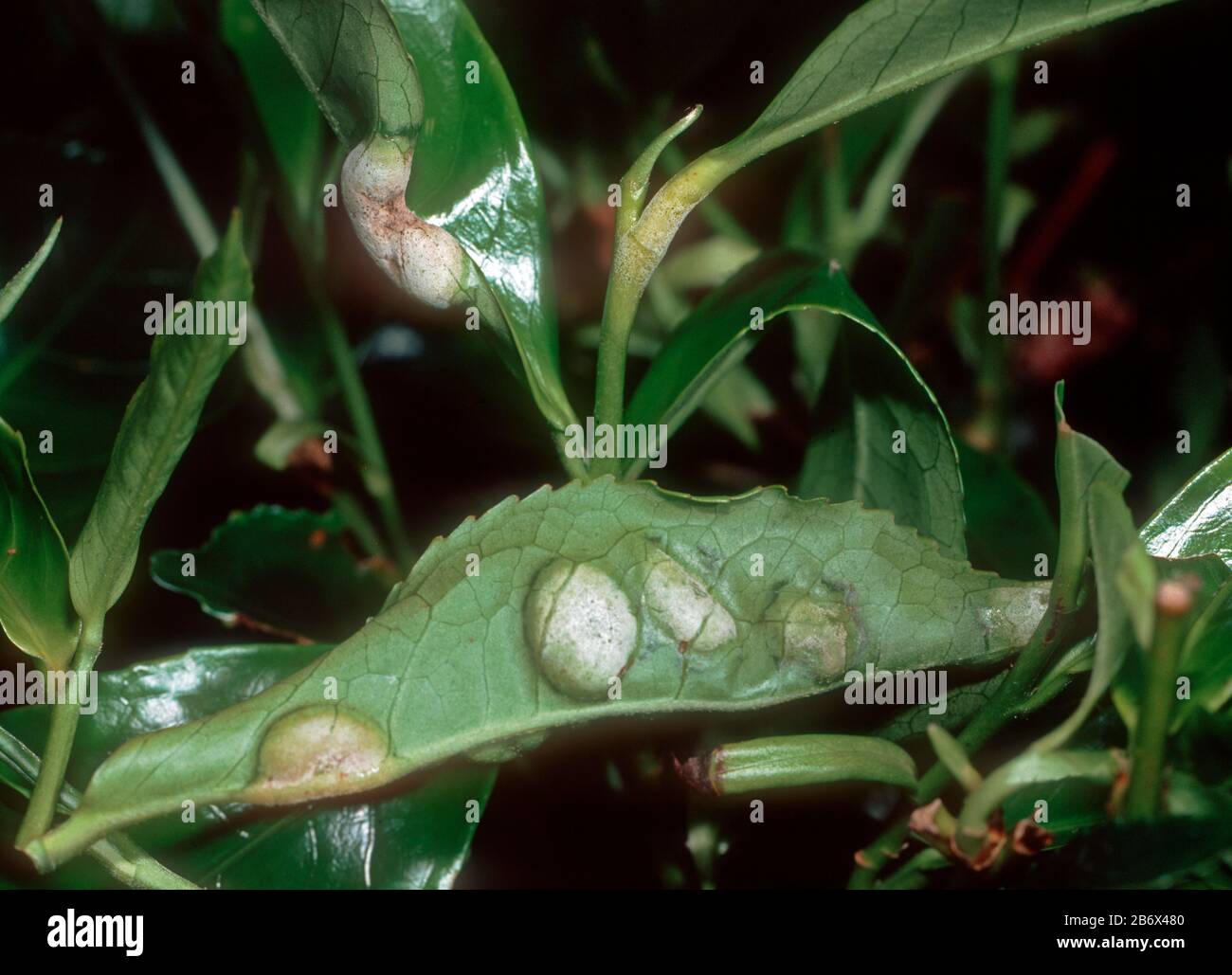 Blister blight (Exobasidium vexans) white blisters on tea leaves, Cameron Highlands, Malaysia, February Stock Photohttps://www.alamy.com/image-license-details/?v=1https://www.alamy.com/blister-blight-exobasidium-vexans-white-blisters-on-tea-leaves-cameron-highlands-malaysia-february-image348469408.html
Blister blight (Exobasidium vexans) white blisters on tea leaves, Cameron Highlands, Malaysia, February Stock Photohttps://www.alamy.com/image-license-details/?v=1https://www.alamy.com/blister-blight-exobasidium-vexans-white-blisters-on-tea-leaves-cameron-highlands-malaysia-february-image348469408.htmlRM2B6X480–Blister blight (Exobasidium vexans) white blisters on tea leaves, Cameron Highlands, Malaysia, February
 Conocybe arrhenii, also known as Pholiotina arrhenii, the ringed conecap, wild mushroom from Finland Stock Photohttps://www.alamy.com/image-license-details/?v=1https://www.alamy.com/conocybe-arrhenii-also-known-as-pholiotina-arrhenii-the-ringed-conecap-wild-mushroom-from-finland-image396853989.html
Conocybe arrhenii, also known as Pholiotina arrhenii, the ringed conecap, wild mushroom from Finland Stock Photohttps://www.alamy.com/image-license-details/?v=1https://www.alamy.com/conocybe-arrhenii-also-known-as-pholiotina-arrhenii-the-ringed-conecap-wild-mushroom-from-finland-image396853989.htmlRF2E1J78N–Conocybe arrhenii, also known as Pholiotina arrhenii, the ringed conecap, wild mushroom from Finland
 20 July 2020, Brandenburg, Frankfurt (Oder): A mosquito of the species Aedes vexans is hanging from a branch. Photo: Patrick Pleul/dpa-Zentralbild/ZB Stock Photohttps://www.alamy.com/image-license-details/?v=1https://www.alamy.com/20-july-2020-brandenburg-frankfurt-oder-a-mosquito-of-the-species-aedes-vexans-is-hanging-from-a-branch-photo-patrick-pleuldpa-zentralbildzb-image366347073.html
20 July 2020, Brandenburg, Frankfurt (Oder): A mosquito of the species Aedes vexans is hanging from a branch. Photo: Patrick Pleul/dpa-Zentralbild/ZB Stock Photohttps://www.alamy.com/image-license-details/?v=1https://www.alamy.com/20-july-2020-brandenburg-frankfurt-oder-a-mosquito-of-the-species-aedes-vexans-is-hanging-from-a-branch-photo-patrick-pleuldpa-zentralbildzb-image366347073.htmlRM2C80FC1–20 July 2020, Brandenburg, Frankfurt (Oder): A mosquito of the species Aedes vexans is hanging from a branch. Photo: Patrick Pleul/dpa-Zentralbild/ZB
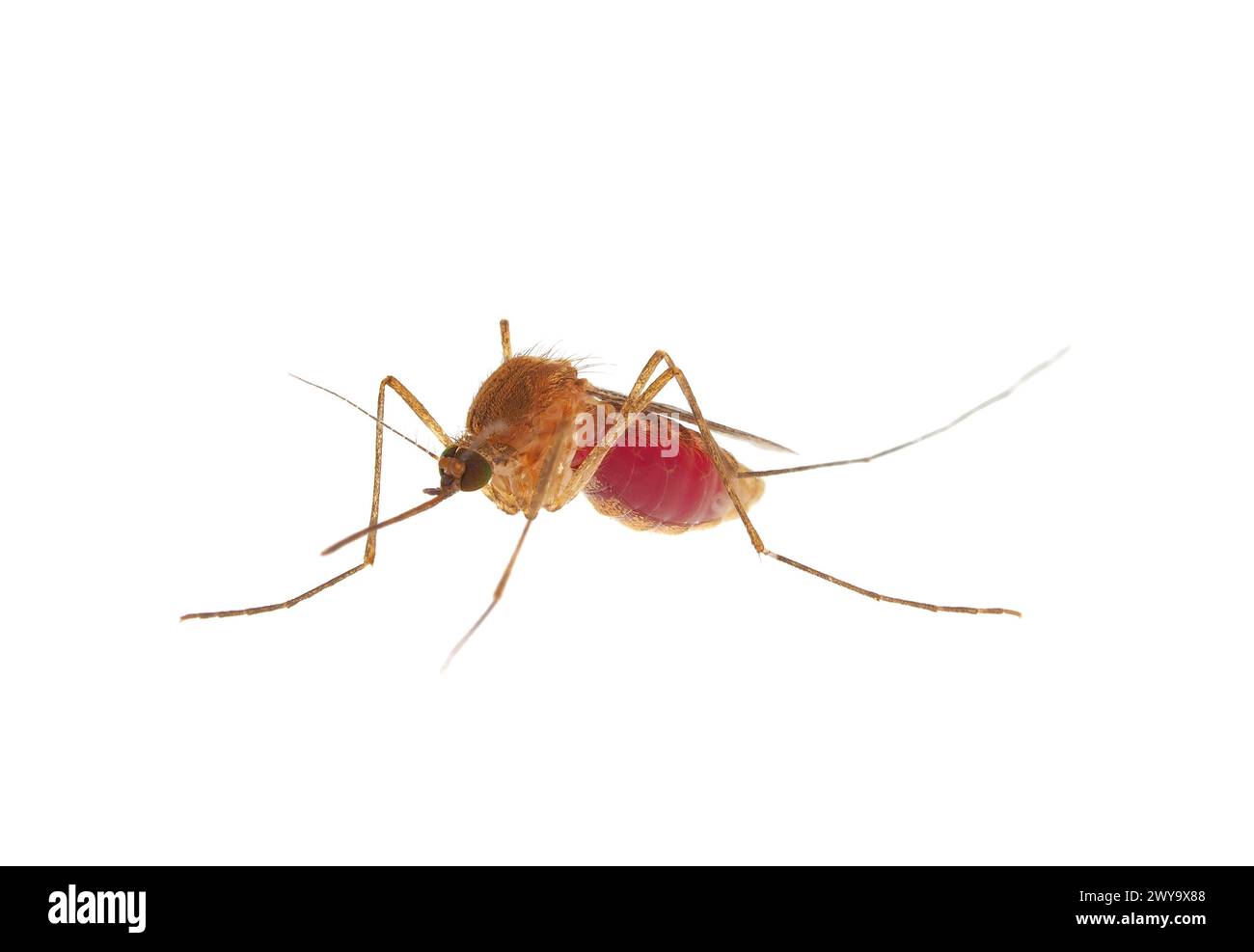 Inland floodwater mosquito full of blood isolated on white background, Aedes vexans Stock Photohttps://www.alamy.com/image-license-details/?v=1https://www.alamy.com/inland-floodwater-mosquito-full-of-blood-isolated-on-white-background-aedes-vexans-image601966408.html
Inland floodwater mosquito full of blood isolated on white background, Aedes vexans Stock Photohttps://www.alamy.com/image-license-details/?v=1https://www.alamy.com/inland-floodwater-mosquito-full-of-blood-isolated-on-white-background-aedes-vexans-image601966408.htmlRF2WY9X88–Inland floodwater mosquito full of blood isolated on white background, Aedes vexans
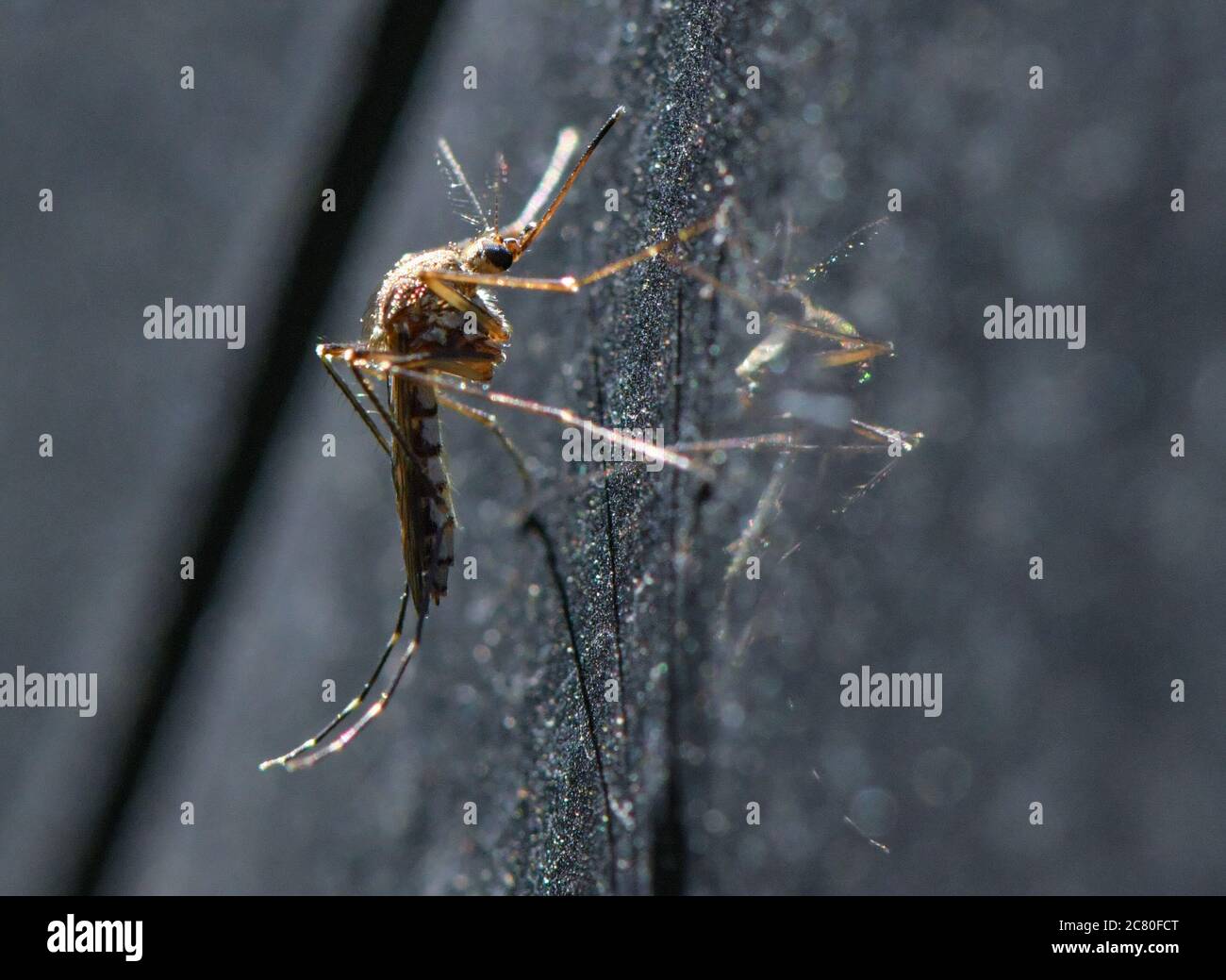 19 July 2020, Brandenburg, Frankfurt (Oder): A mosquito of the species Aedes vexans hangs from a car. Photo: Patrick Pleul/dpa-Zentralbild/ZB Stock Photohttps://www.alamy.com/image-license-details/?v=1https://www.alamy.com/19-july-2020-brandenburg-frankfurt-oder-a-mosquito-of-the-species-aedes-vexans-hangs-from-a-car-photo-patrick-pleuldpa-zentralbildzb-image366347096.html
19 July 2020, Brandenburg, Frankfurt (Oder): A mosquito of the species Aedes vexans hangs from a car. Photo: Patrick Pleul/dpa-Zentralbild/ZB Stock Photohttps://www.alamy.com/image-license-details/?v=1https://www.alamy.com/19-july-2020-brandenburg-frankfurt-oder-a-mosquito-of-the-species-aedes-vexans-hangs-from-a-car-photo-patrick-pleuldpa-zentralbildzb-image366347096.htmlRM2C80FCT–19 July 2020, Brandenburg, Frankfurt (Oder): A mosquito of the species Aedes vexans hangs from a car. Photo: Patrick Pleul/dpa-Zentralbild/ZB
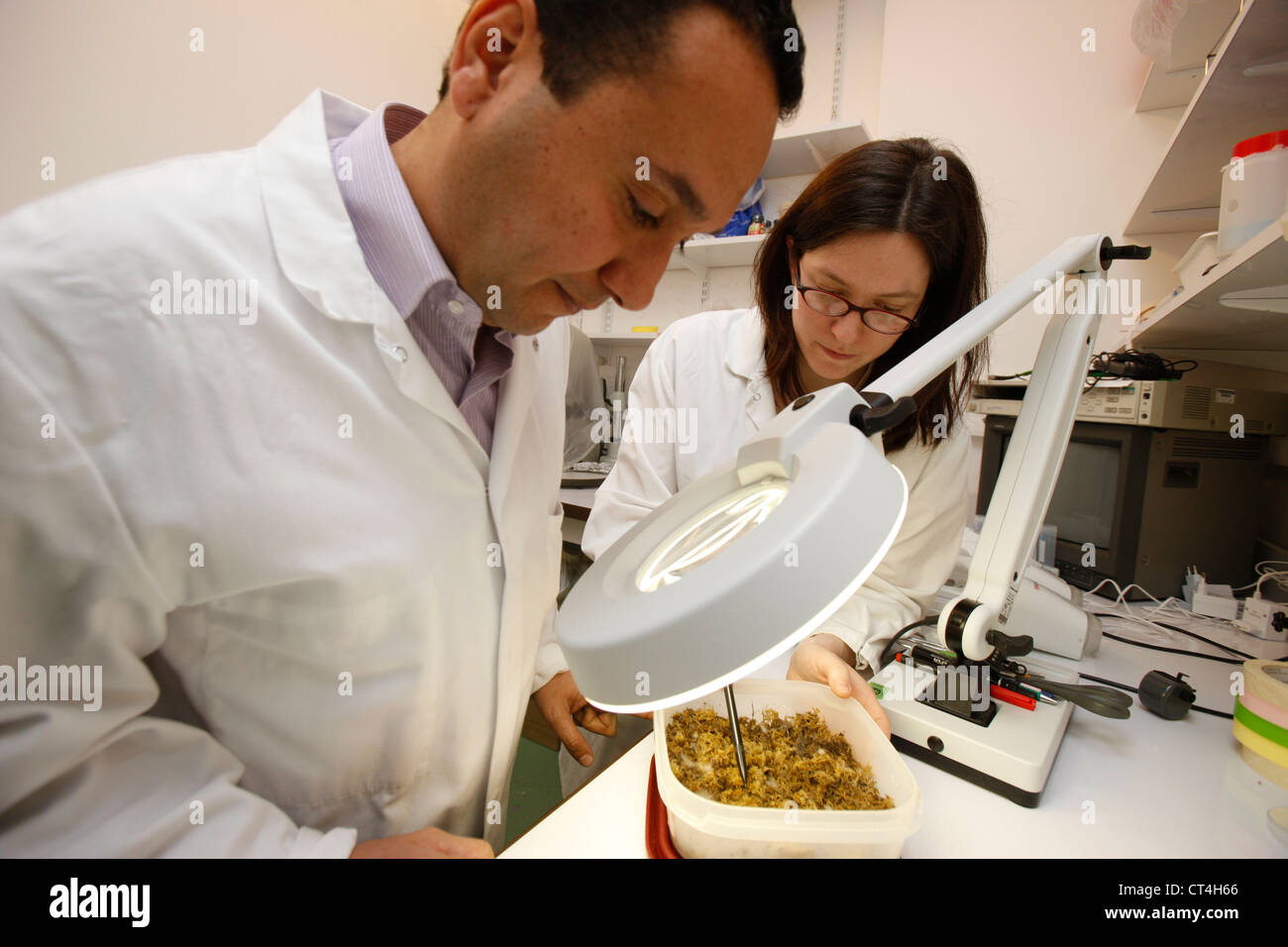 MOSQUITO BREEDING IN LABORATORY Stock Photohttps://www.alamy.com/image-license-details/?v=1https://www.alamy.com/stock-photo-mosquito-breeding-in-laboratory-49273790.html
MOSQUITO BREEDING IN LABORATORY Stock Photohttps://www.alamy.com/image-license-details/?v=1https://www.alamy.com/stock-photo-mosquito-breeding-in-laboratory-49273790.htmlRMCT4H66–MOSQUITO BREEDING IN LABORATORY
 20 July 2020, Brandenburg, Frankfurt (Oder): Many mosquitoes of the species Aedes vexans can be seen on the arm of a woman. Photo: Patrick Pleul/dpa-Zentralbild/ZB Stock Photohttps://www.alamy.com/image-license-details/?v=1https://www.alamy.com/20-july-2020-brandenburg-frankfurt-oder-many-mosquitoes-of-the-species-aedes-vexans-can-be-seen-on-the-arm-of-a-woman-photo-patrick-pleuldpa-zentralbildzb-image366355726.html
20 July 2020, Brandenburg, Frankfurt (Oder): Many mosquitoes of the species Aedes vexans can be seen on the arm of a woman. Photo: Patrick Pleul/dpa-Zentralbild/ZB Stock Photohttps://www.alamy.com/image-license-details/?v=1https://www.alamy.com/20-july-2020-brandenburg-frankfurt-oder-many-mosquitoes-of-the-species-aedes-vexans-can-be-seen-on-the-arm-of-a-woman-photo-patrick-pleuldpa-zentralbildzb-image366355726.htmlRM2C80XD2–20 July 2020, Brandenburg, Frankfurt (Oder): Many mosquitoes of the species Aedes vexans can be seen on the arm of a woman. Photo: Patrick Pleul/dpa-Zentralbild/ZB
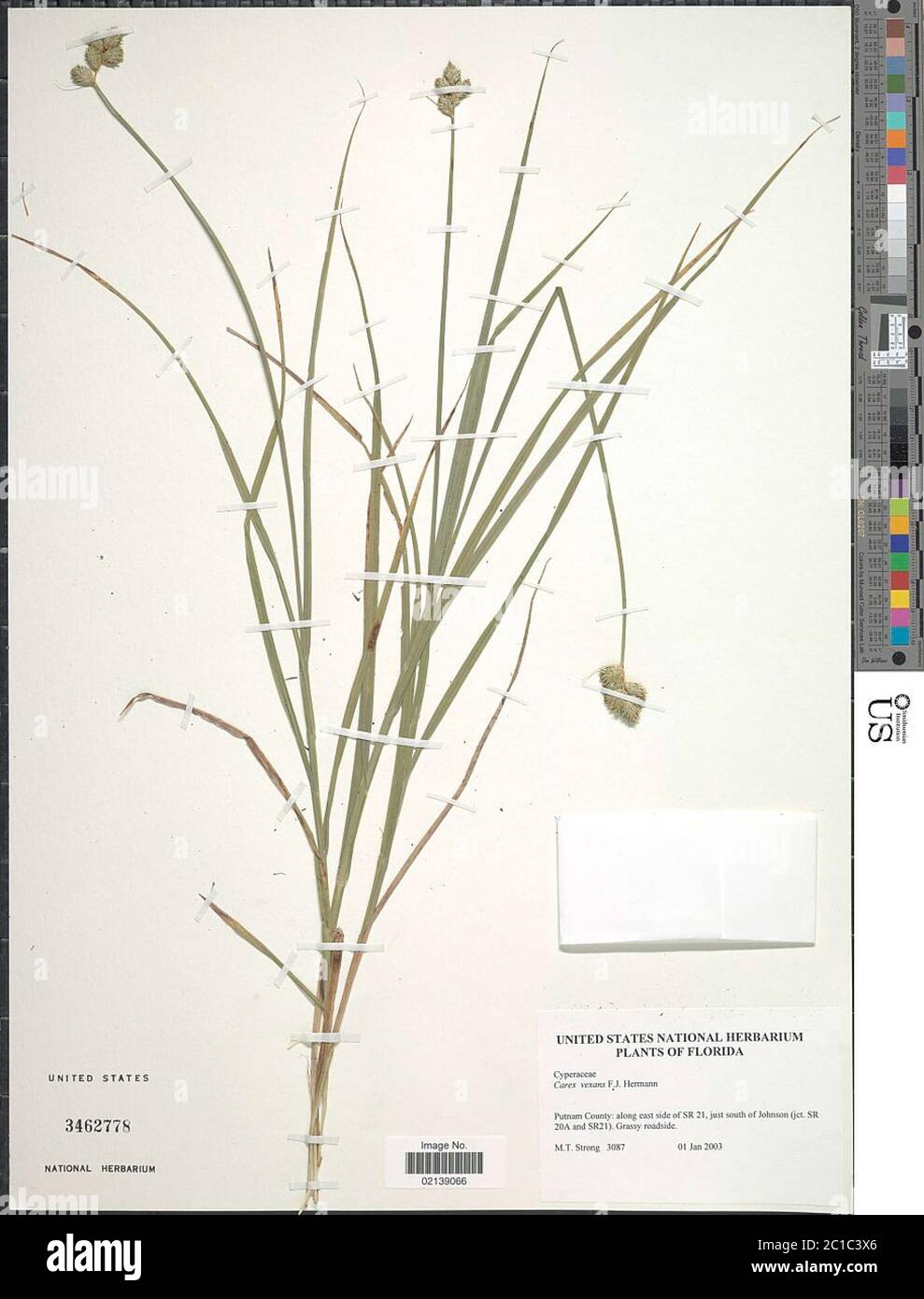 Carex vexans FJ Herm Carex vexans FJ Herm. Stock Photohttps://www.alamy.com/image-license-details/?v=1https://www.alamy.com/carex-vexans-fj-herm-carex-vexans-fj-herm-image362298894.html
Carex vexans FJ Herm Carex vexans FJ Herm. Stock Photohttps://www.alamy.com/image-license-details/?v=1https://www.alamy.com/carex-vexans-fj-herm-carex-vexans-fj-herm-image362298894.htmlRM2C1C3X6–Carex vexans FJ Herm Carex vexans FJ Herm.
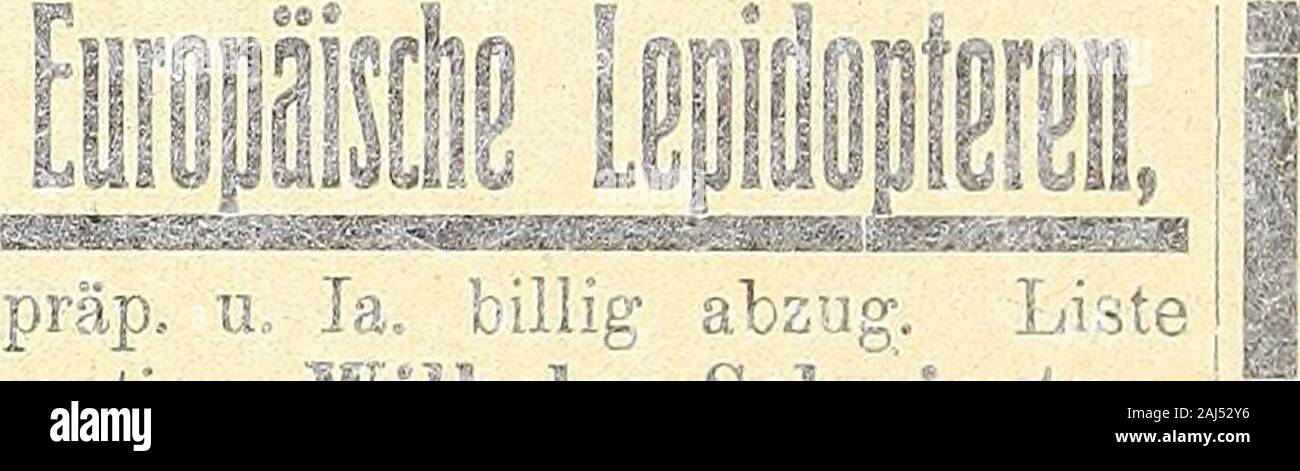 Insektenborse. . lingen. [2034 Tie IipSefteerer Ce„ Department of Natural Science, 225 — 233 Fourth Ave. Ornithoptera, hess* Papiliou. Morpho, Eiiploeen u. Eu-thalien kaufe stets in Anzahlzur Vergröfserung meiner Samm- lung. 13482 Gegen Überlassung von Dub-letten bestimme gern exotischeTagfalter. IL Fruhstorfer, Berlin W., Zieten-Str. 11. Atheta paradora, Aleochara cuni-culorum, Quedius vexans, Philon-thus spermophili abzugeben. Ka-talogpreis 10 Ji., bar 4,50 J6inkl. Porto. Auch Tausch gegenCicindelen u„ Cärabiden. [3479O. Lau gen hau, Gotha, Perthesstr. 2. IßiiliiiKii ^ H. Fruhsjiorfer, Berli Stock Photohttps://www.alamy.com/image-license-details/?v=1https://www.alamy.com/insektenborse-lingen-2034-tie-iipsefteerer-ce-department-of-natural-science-225-233-fourth-ave-ornithoptera-hess-papiliou-morpho-eiiploeen-u-eu-thalien-kaufe-stets-in-anzahlzur-vergrfserung-meiner-samm-lung-13482-gegen-berlassung-von-dub-letten-bestimme-gern-exotischetagfalter-il-fruhstorfer-berlin-w-zieten-str-11-atheta-paradora-aleochara-cuni-culorum-quedius-vexans-philon-thus-spermophili-abzugeben-ka-talogpreis-10-ji-bar-450-j6inkl-porto-auch-tausch-gegencicindelen-u-crabiden-3479o-lau-gen-hau-gotha-perthesstr-2-iiiliiikii-h-fruhsjiorfer-berli-image338172890.html
Insektenborse. . lingen. [2034 Tie IipSefteerer Ce„ Department of Natural Science, 225 — 233 Fourth Ave. Ornithoptera, hess* Papiliou. Morpho, Eiiploeen u. Eu-thalien kaufe stets in Anzahlzur Vergröfserung meiner Samm- lung. 13482 Gegen Überlassung von Dub-letten bestimme gern exotischeTagfalter. IL Fruhstorfer, Berlin W., Zieten-Str. 11. Atheta paradora, Aleochara cuni-culorum, Quedius vexans, Philon-thus spermophili abzugeben. Ka-talogpreis 10 Ji., bar 4,50 J6inkl. Porto. Auch Tausch gegenCicindelen u„ Cärabiden. [3479O. Lau gen hau, Gotha, Perthesstr. 2. IßiiliiiKii ^ H. Fruhsjiorfer, Berli Stock Photohttps://www.alamy.com/image-license-details/?v=1https://www.alamy.com/insektenborse-lingen-2034-tie-iipsefteerer-ce-department-of-natural-science-225-233-fourth-ave-ornithoptera-hess-papiliou-morpho-eiiploeen-u-eu-thalien-kaufe-stets-in-anzahlzur-vergrfserung-meiner-samm-lung-13482-gegen-berlassung-von-dub-letten-bestimme-gern-exotischetagfalter-il-fruhstorfer-berlin-w-zieten-str-11-atheta-paradora-aleochara-cuni-culorum-quedius-vexans-philon-thus-spermophili-abzugeben-ka-talogpreis-10-ji-bar-450-j6inkl-porto-auch-tausch-gegencicindelen-u-crabiden-3479o-lau-gen-hau-gotha-perthesstr-2-iiiliiikii-h-fruhsjiorfer-berli-image338172890.htmlRM2AJ52Y6–Insektenborse. . lingen. [2034 Tie IipSefteerer Ce„ Department of Natural Science, 225 — 233 Fourth Ave. Ornithoptera, hess* Papiliou. Morpho, Eiiploeen u. Eu-thalien kaufe stets in Anzahlzur Vergröfserung meiner Samm- lung. 13482 Gegen Überlassung von Dub-letten bestimme gern exotischeTagfalter. IL Fruhstorfer, Berlin W., Zieten-Str. 11. Atheta paradora, Aleochara cuni-culorum, Quedius vexans, Philon-thus spermophili abzugeben. Ka-talogpreis 10 Ji., bar 4,50 J6inkl. Porto. Auch Tausch gegenCicindelen u„ Cärabiden. [3479O. Lau gen hau, Gotha, Perthesstr. 2. IßiiliiiKii ^ H. Fruhsjiorfer, Berli
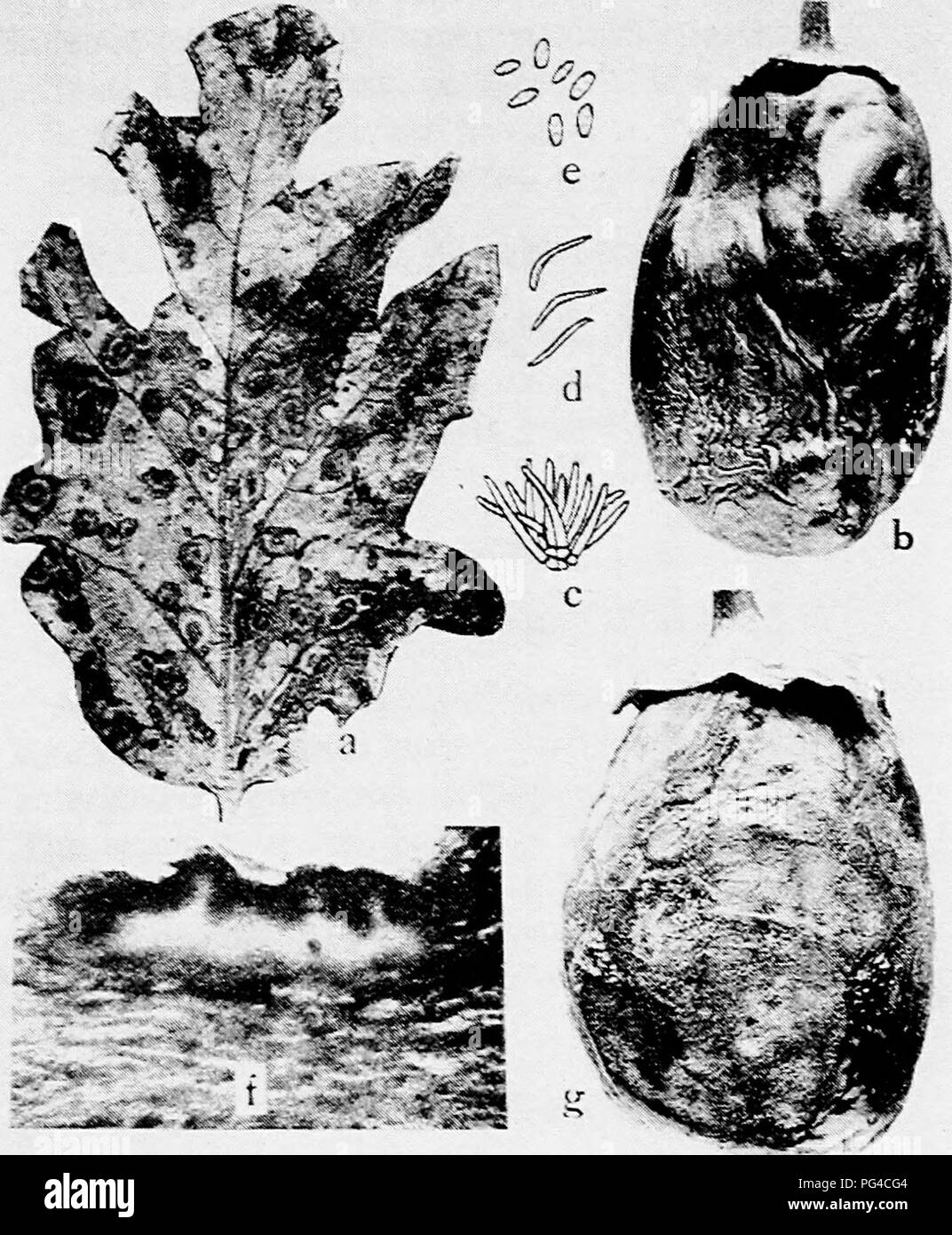 . Diseases of truck crops and their control . Vegetables. Fig. 56. Egg-Plant Diseases. a. Phomopsis of leaf, 6. Phomopsis on fruit, c. cohidiophores, d, stylospores, e. pycnospores of Phomopsis vexans, f. photomicrograph of a cross section through an infected calyx of an egg plant showing pycnidia of P. vexans {c. to /. ^ter Harter), R. anthracnose on egg-plant fruit.. Please note that these images are extracted from scanned page images that may have been digitally enhanced for readability - coloration and appearance of these illustrations may not perfectly resemble the original work.. Taubenh Stock Photohttps://www.alamy.com/image-license-details/?v=1https://www.alamy.com/diseases-of-truck-crops-and-their-control-vegetables-fig-56-egg-plant-diseases-a-phomopsis-of-leaf-6-phomopsis-on-fruit-c-cohidiophores-d-stylospores-e-pycnospores-of-phomopsis-vexans-f-photomicrograph-of-a-cross-section-through-an-infected-calyx-of-an-egg-plant-showing-pycnidia-of-p-vexans-c-to-ter-harter-r-anthracnose-on-egg-plant-fruit-please-note-that-these-images-are-extracted-from-scanned-page-images-that-may-have-been-digitally-enhanced-for-readability-coloration-and-appearance-of-these-illustrations-may-not-perfectly-resemble-the-original-work-taubenh-image216456580.html
. Diseases of truck crops and their control . Vegetables. Fig. 56. Egg-Plant Diseases. a. Phomopsis of leaf, 6. Phomopsis on fruit, c. cohidiophores, d, stylospores, e. pycnospores of Phomopsis vexans, f. photomicrograph of a cross section through an infected calyx of an egg plant showing pycnidia of P. vexans {c. to /. ^ter Harter), R. anthracnose on egg-plant fruit.. Please note that these images are extracted from scanned page images that may have been digitally enhanced for readability - coloration and appearance of these illustrations may not perfectly resemble the original work.. Taubenh Stock Photohttps://www.alamy.com/image-license-details/?v=1https://www.alamy.com/diseases-of-truck-crops-and-their-control-vegetables-fig-56-egg-plant-diseases-a-phomopsis-of-leaf-6-phomopsis-on-fruit-c-cohidiophores-d-stylospores-e-pycnospores-of-phomopsis-vexans-f-photomicrograph-of-a-cross-section-through-an-infected-calyx-of-an-egg-plant-showing-pycnidia-of-p-vexans-c-to-ter-harter-r-anthracnose-on-egg-plant-fruit-please-note-that-these-images-are-extracted-from-scanned-page-images-that-may-have-been-digitally-enhanced-for-readability-coloration-and-appearance-of-these-illustrations-may-not-perfectly-resemble-the-original-work-taubenh-image216456580.htmlRMPG4CG4–. Diseases of truck crops and their control . Vegetables. Fig. 56. Egg-Plant Diseases. a. Phomopsis of leaf, 6. Phomopsis on fruit, c. cohidiophores, d, stylospores, e. pycnospores of Phomopsis vexans, f. photomicrograph of a cross section through an infected calyx of an egg plant showing pycnidia of P. vexans {c. to /. ^ter Harter), R. anthracnose on egg-plant fruit.. Please note that these images are extracted from scanned page images that may have been digitally enhanced for readability - coloration and appearance of these illustrations may not perfectly resemble the original work.. Taubenh
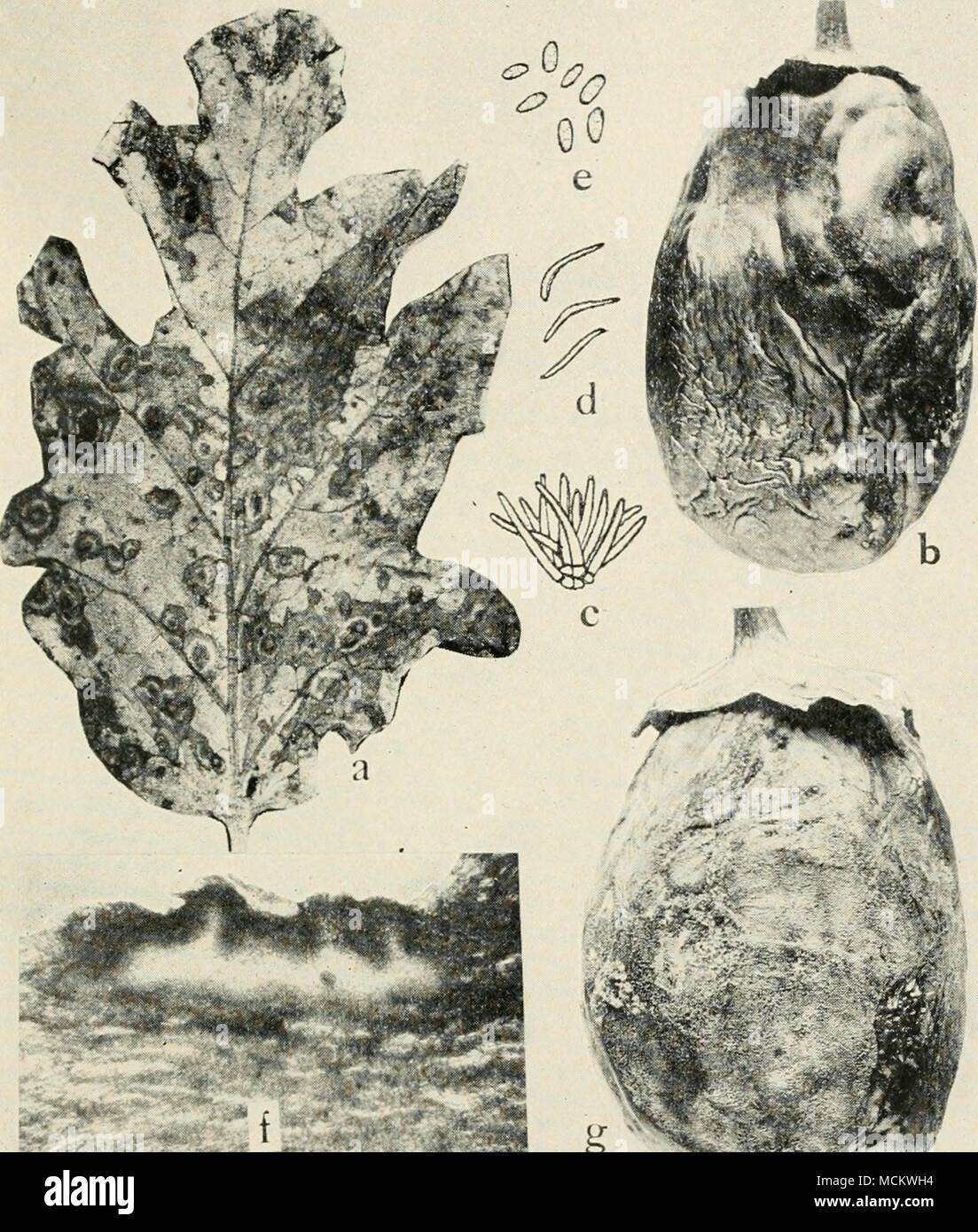 . Fig. 56. Egg-Plant Diseases. a. Phomopsis of leaf, 6. Phomopsis on fruit, c. conidiophores, rf. stylospores, e. pycnospores of Phomopsis vexans, f. photomicrograph of a cross section through an infected calyx of an egg plant showing pycnidia of P. vexans (c. to f. after Harter), g.. anthracnose on egg-plant fruit. Stock Photohttps://www.alamy.com/image-license-details/?v=1https://www.alamy.com/fig-56-egg-plant-diseases-a-phomopsis-of-leaf-6-phomopsis-on-fruit-c-conidiophores-rf-stylospores-e-pycnospores-of-phomopsis-vexans-f-photomicrograph-of-a-cross-section-through-an-infected-calyx-of-an-egg-plant-showing-pycnidia-of-p-vexans-c-to-f-after-harter-g-anthracnose-on-egg-plant-fruit-image179916720.html
. Fig. 56. Egg-Plant Diseases. a. Phomopsis of leaf, 6. Phomopsis on fruit, c. conidiophores, rf. stylospores, e. pycnospores of Phomopsis vexans, f. photomicrograph of a cross section through an infected calyx of an egg plant showing pycnidia of P. vexans (c. to f. after Harter), g.. anthracnose on egg-plant fruit. Stock Photohttps://www.alamy.com/image-license-details/?v=1https://www.alamy.com/fig-56-egg-plant-diseases-a-phomopsis-of-leaf-6-phomopsis-on-fruit-c-conidiophores-rf-stylospores-e-pycnospores-of-phomopsis-vexans-f-photomicrograph-of-a-cross-section-through-an-infected-calyx-of-an-egg-plant-showing-pycnidia-of-p-vexans-c-to-f-after-harter-g-anthracnose-on-egg-plant-fruit-image179916720.htmlRMMCKWH4–. Fig. 56. Egg-Plant Diseases. a. Phomopsis of leaf, 6. Phomopsis on fruit, c. conidiophores, rf. stylospores, e. pycnospores of Phomopsis vexans, f. photomicrograph of a cross section through an infected calyx of an egg plant showing pycnidia of P. vexans (c. to f. after Harter), g.. anthracnose on egg-plant fruit.
 Mosquito, Gnat (Aedes cf. vexans), female, Germany Stock Photohttps://www.alamy.com/image-license-details/?v=1https://www.alamy.com/stock-photo-mosquito-gnat-aedes-cf-vexans-female-germany-47923056.html
Mosquito, Gnat (Aedes cf. vexans), female, Germany Stock Photohttps://www.alamy.com/image-license-details/?v=1https://www.alamy.com/stock-photo-mosquito-gnat-aedes-cf-vexans-female-germany-47923056.htmlRMCNY29M–Mosquito, Gnat (Aedes cf. vexans), female, Germany
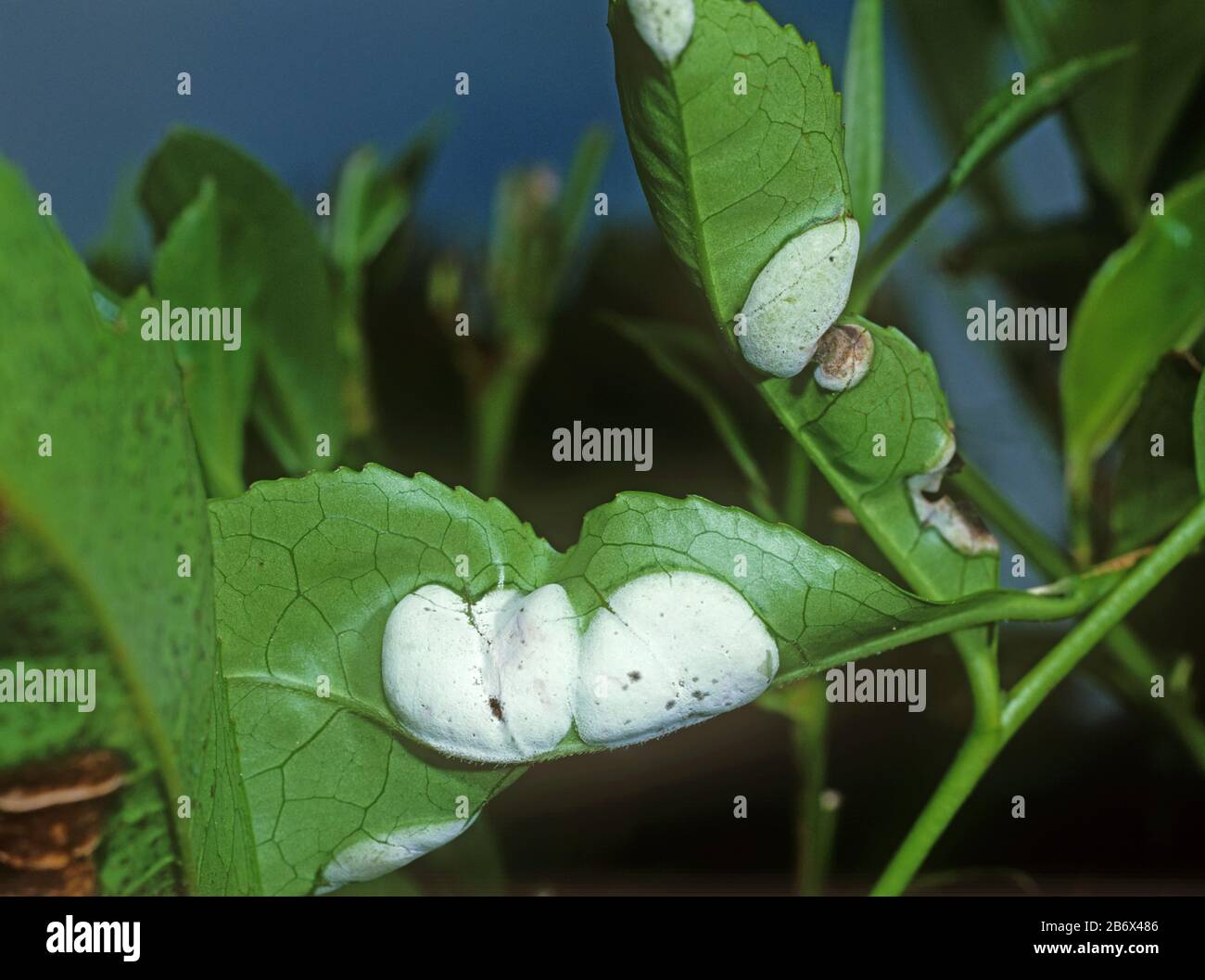 Blister blight (Exobasidium vexans) white blisters on tea leaves, Cameron Highlands, Malaysia, February Stock Photohttps://www.alamy.com/image-license-details/?v=1https://www.alamy.com/blister-blight-exobasidium-vexans-white-blisters-on-tea-leaves-cameron-highlands-malaysia-february-image348469414.html
Blister blight (Exobasidium vexans) white blisters on tea leaves, Cameron Highlands, Malaysia, February Stock Photohttps://www.alamy.com/image-license-details/?v=1https://www.alamy.com/blister-blight-exobasidium-vexans-white-blisters-on-tea-leaves-cameron-highlands-malaysia-february-image348469414.htmlRM2B6X486–Blister blight (Exobasidium vexans) white blisters on tea leaves, Cameron Highlands, Malaysia, February
 Pholiotina arrhenii, also known as Conocybe arrhenii, the ringed conecap, wild mushroom from Finland Stock Photohttps://www.alamy.com/image-license-details/?v=1https://www.alamy.com/pholiotina-arrhenii-also-known-as-conocybe-arrhenii-the-ringed-conecap-wild-mushroom-from-finland-image395707207.html
Pholiotina arrhenii, also known as Conocybe arrhenii, the ringed conecap, wild mushroom from Finland Stock Photohttps://www.alamy.com/image-license-details/?v=1https://www.alamy.com/pholiotina-arrhenii-also-known-as-conocybe-arrhenii-the-ringed-conecap-wild-mushroom-from-finland-image395707207.htmlRF2DYP0G7–Pholiotina arrhenii, also known as Conocybe arrhenii, the ringed conecap, wild mushroom from Finland
 MOSQUITO BREEDING IN LABORATORY Stock Photohttps://www.alamy.com/image-license-details/?v=1https://www.alamy.com/stock-photo-mosquito-breeding-in-laboratory-49273762.html
MOSQUITO BREEDING IN LABORATORY Stock Photohttps://www.alamy.com/image-license-details/?v=1https://www.alamy.com/stock-photo-mosquito-breeding-in-laboratory-49273762.htmlRMCT4H56–MOSQUITO BREEDING IN LABORATORY
 20 July 2020, Brandenburg, Frankfurt (Oder): Several mosquitoes of the species Aedes vexans can be seen on the arm of a woman. Photo: Patrick Pleul/dpa-Zentralbild/ZB Stock Photohttps://www.alamy.com/image-license-details/?v=1https://www.alamy.com/20-july-2020-brandenburg-frankfurt-oder-several-mosquitoes-of-the-species-aedes-vexans-can-be-seen-on-the-arm-of-a-woman-photo-patrick-pleuldpa-zentralbildzb-image366347110.html
20 July 2020, Brandenburg, Frankfurt (Oder): Several mosquitoes of the species Aedes vexans can be seen on the arm of a woman. Photo: Patrick Pleul/dpa-Zentralbild/ZB Stock Photohttps://www.alamy.com/image-license-details/?v=1https://www.alamy.com/20-july-2020-brandenburg-frankfurt-oder-several-mosquitoes-of-the-species-aedes-vexans-can-be-seen-on-the-arm-of-a-woman-photo-patrick-pleuldpa-zentralbildzb-image366347110.htmlRM2C80FDA–20 July 2020, Brandenburg, Frankfurt (Oder): Several mosquitoes of the species Aedes vexans can be seen on the arm of a woman. Photo: Patrick Pleul/dpa-Zentralbild/ZB
 (Sporormiella vexans) Stock Photohttps://www.alamy.com/image-license-details/?v=1https://www.alamy.com/sporormiella-vexans-image629122019.html
(Sporormiella vexans) Stock Photohttps://www.alamy.com/image-license-details/?v=1https://www.alamy.com/sporormiella-vexans-image629122019.htmlRM2YFEYFF–(Sporormiella vexans)
 . Bulletin of the Natural History Museum Entomology. . Figs 86-91 Head, facial view, $ - 86, A. vexans; 87, A. frontalis; 88, A. bolowi 89, A. caeruleus, 90, A. brasiliensis; 91, A. longiscapus.. Please note that these images are extracted from scanned page images that may have been digitally enhanced for readability - coloration and appearance of these illustrations may not perfectly resemble the original work.. Natural History Museum (London). Andover : Intercept Stock Photohttps://www.alamy.com/image-license-details/?v=1https://www.alamy.com/bulletin-of-the-natural-history-museum-entomology-figs-86-91-head-facial-view-86-a-vexans-87-a-frontalis-88-a-bolowi-89-a-caeruleus-90-a-brasiliensis-91-a-longiscapus-please-note-that-these-images-are-extracted-from-scanned-page-images-that-may-have-been-digitally-enhanced-for-readability-coloration-and-appearance-of-these-illustrations-may-not-perfectly-resemble-the-original-work-natural-history-museum-london-andover-intercept-image233867926.html
. Bulletin of the Natural History Museum Entomology. . Figs 86-91 Head, facial view, $ - 86, A. vexans; 87, A. frontalis; 88, A. bolowi 89, A. caeruleus, 90, A. brasiliensis; 91, A. longiscapus.. Please note that these images are extracted from scanned page images that may have been digitally enhanced for readability - coloration and appearance of these illustrations may not perfectly resemble the original work.. Natural History Museum (London). Andover : Intercept Stock Photohttps://www.alamy.com/image-license-details/?v=1https://www.alamy.com/bulletin-of-the-natural-history-museum-entomology-figs-86-91-head-facial-view-86-a-vexans-87-a-frontalis-88-a-bolowi-89-a-caeruleus-90-a-brasiliensis-91-a-longiscapus-please-note-that-these-images-are-extracted-from-scanned-page-images-that-may-have-been-digitally-enhanced-for-readability-coloration-and-appearance-of-these-illustrations-may-not-perfectly-resemble-the-original-work-natural-history-museum-london-andover-intercept-image233867926.htmlRMRGDGWX–. Bulletin of the Natural History Museum Entomology. . Figs 86-91 Head, facial view, $ - 86, A. vexans; 87, A. frontalis; 88, A. bolowi 89, A. caeruleus, 90, A. brasiliensis; 91, A. longiscapus.. Please note that these images are extracted from scanned page images that may have been digitally enhanced for readability - coloration and appearance of these illustrations may not perfectly resemble the original work.. Natural History Museum (London). Andover : Intercept
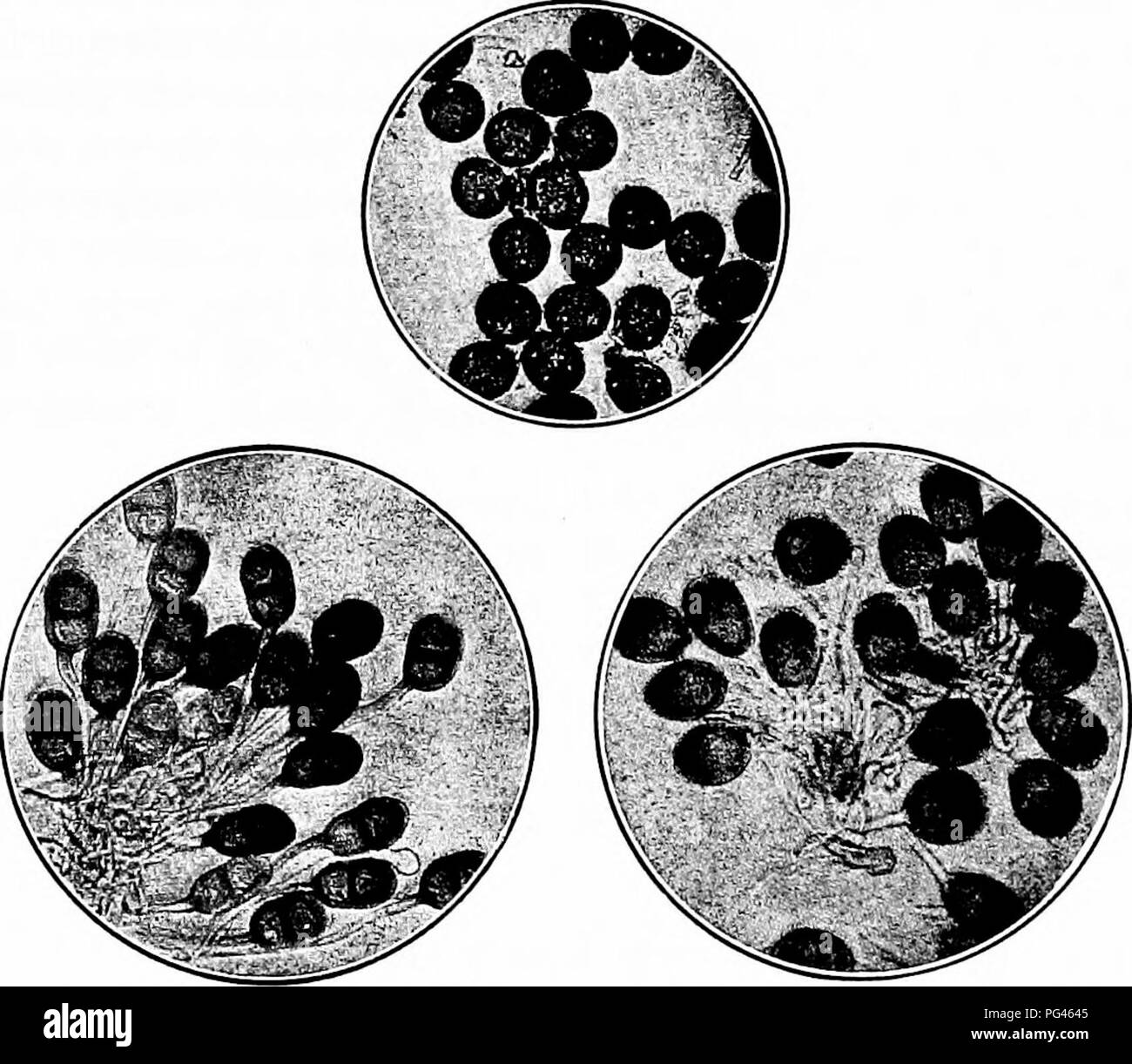 . The fungi which cause plant disease . Plant diseases; Fungi. THE FUNGI WHICH CAUSE PLANT DISEASE 327 O. Pycnia or pycnial stage I. .Ecia or tecial stage II. Uredinia or uredinia stage III. Telia or telial stage The spores in all cases, except those of the basidiospores and. Fig. 241.—Amphispores, urediuiospores and teliospores of Puccinia vexans. After Holway. pycniospores arise by direct conversion of a mycelial cell into a spore, i. e., they are chlamydospores. Mesospore is a term applied to occasional unicellular forms of teliospores found in Puccinia and related genera which do not usual Stock Photohttps://www.alamy.com/image-license-details/?v=1https://www.alamy.com/the-fungi-which-cause-plant-disease-plant-diseases-fungi-the-fungi-which-cause-plant-disease-327-o-pycnia-or-pycnial-stage-i-ecia-or-tecial-stage-ii-uredinia-or-uredinia-stage-iii-telia-or-telial-stage-the-spores-in-all-cases-except-those-of-the-basidiospores-and-fig-241amphispores-urediuiospores-and-teliospores-of-puccinia-vexans-after-holway-pycniospores-arise-by-direct-conversion-of-a-mycelial-cell-into-a-spore-i-e-they-are-chlamydospores-mesospore-is-a-term-applied-to-occasional-unicellular-forms-of-teliospores-found-in-puccinia-and-related-genera-which-do-not-usual-image216451541.html
. The fungi which cause plant disease . Plant diseases; Fungi. THE FUNGI WHICH CAUSE PLANT DISEASE 327 O. Pycnia or pycnial stage I. .Ecia or tecial stage II. Uredinia or uredinia stage III. Telia or telial stage The spores in all cases, except those of the basidiospores and. Fig. 241.—Amphispores, urediuiospores and teliospores of Puccinia vexans. After Holway. pycniospores arise by direct conversion of a mycelial cell into a spore, i. e., they are chlamydospores. Mesospore is a term applied to occasional unicellular forms of teliospores found in Puccinia and related genera which do not usual Stock Photohttps://www.alamy.com/image-license-details/?v=1https://www.alamy.com/the-fungi-which-cause-plant-disease-plant-diseases-fungi-the-fungi-which-cause-plant-disease-327-o-pycnia-or-pycnial-stage-i-ecia-or-tecial-stage-ii-uredinia-or-uredinia-stage-iii-telia-or-telial-stage-the-spores-in-all-cases-except-those-of-the-basidiospores-and-fig-241amphispores-urediuiospores-and-teliospores-of-puccinia-vexans-after-holway-pycniospores-arise-by-direct-conversion-of-a-mycelial-cell-into-a-spore-i-e-they-are-chlamydospores-mesospore-is-a-term-applied-to-occasional-unicellular-forms-of-teliospores-found-in-puccinia-and-related-genera-which-do-not-usual-image216451541.htmlRMPG4645–. The fungi which cause plant disease . Plant diseases; Fungi. THE FUNGI WHICH CAUSE PLANT DISEASE 327 O. Pycnia or pycnial stage I. .Ecia or tecial stage II. Uredinia or uredinia stage III. Telia or telial stage The spores in all cases, except those of the basidiospores and. Fig. 241.—Amphispores, urediuiospores and teliospores of Puccinia vexans. After Holway. pycniospores arise by direct conversion of a mycelial cell into a spore, i. e., they are chlamydospores. Mesospore is a term applied to occasional unicellular forms of teliospores found in Puccinia and related genera which do not usual
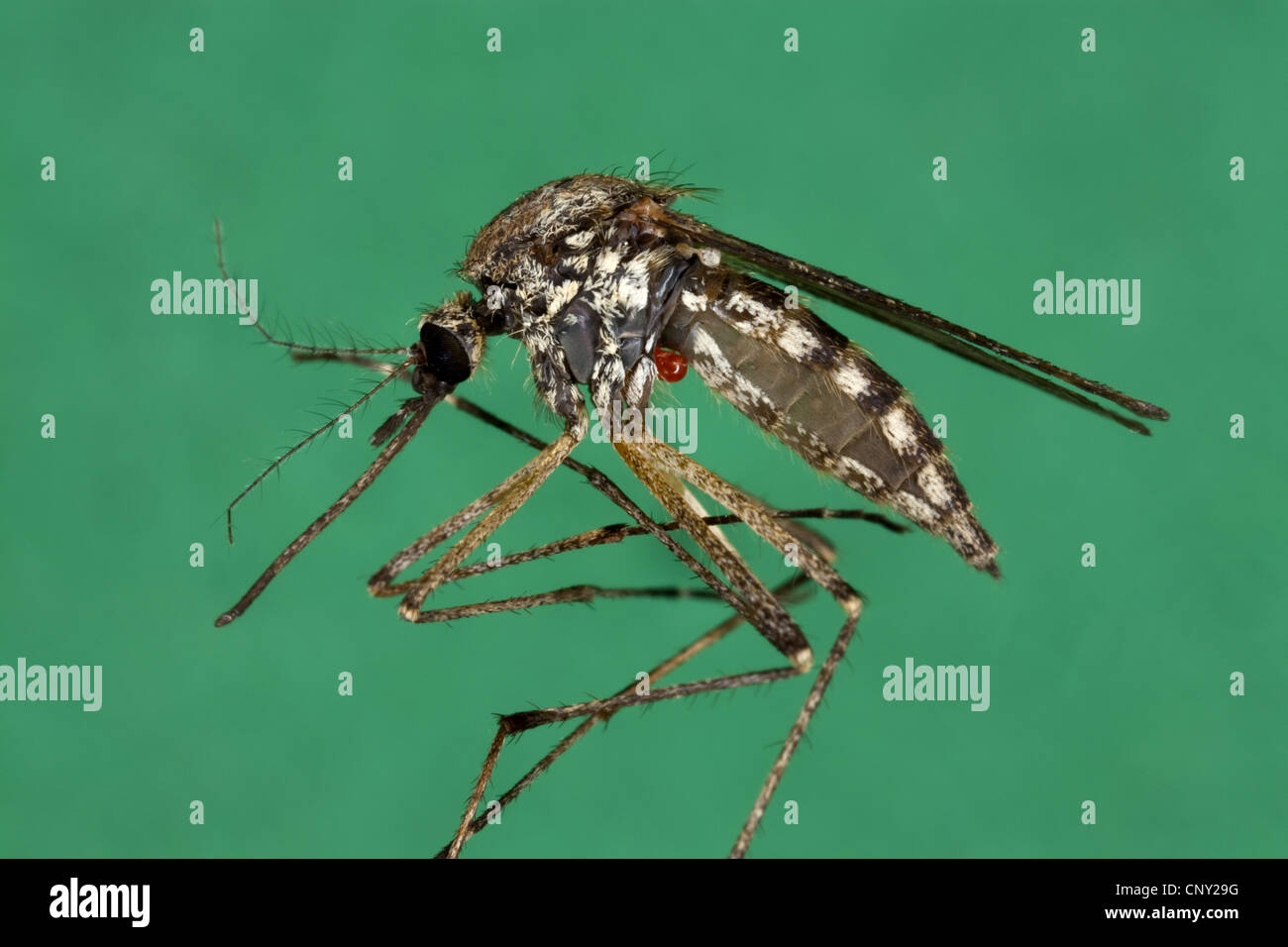 Mosquito, Gnat (Aedes cf. vexans), female, Germany Stock Photohttps://www.alamy.com/image-license-details/?v=1https://www.alamy.com/stock-photo-mosquito-gnat-aedes-cf-vexans-female-germany-47923052.html
Mosquito, Gnat (Aedes cf. vexans), female, Germany Stock Photohttps://www.alamy.com/image-license-details/?v=1https://www.alamy.com/stock-photo-mosquito-gnat-aedes-cf-vexans-female-germany-47923052.htmlRMCNY29G–Mosquito, Gnat (Aedes cf. vexans), female, Germany
 Broad-leaved helleborine, Eastern helleborine (Epipactis helleborine), inland floodwater mosquito, Aedes vexans, on a flower, Germany, Mecklenburg-Western Pomerania Stock Photohttps://www.alamy.com/image-license-details/?v=1https://www.alamy.com/broad-leaved-helleborine-eastern-helleborine-epipactis-helleborine-inland-floodwater-mosquito-aedes-vexans-on-a-flower-germany-mecklenburg-western-pomerania-image255220735.html
Broad-leaved helleborine, Eastern helleborine (Epipactis helleborine), inland floodwater mosquito, Aedes vexans, on a flower, Germany, Mecklenburg-Western Pomerania Stock Photohttps://www.alamy.com/image-license-details/?v=1https://www.alamy.com/broad-leaved-helleborine-eastern-helleborine-epipactis-helleborine-inland-floodwater-mosquito-aedes-vexans-on-a-flower-germany-mecklenburg-western-pomerania-image255220735.htmlRMTR68J7–Broad-leaved helleborine, Eastern helleborine (Epipactis helleborine), inland floodwater mosquito, Aedes vexans, on a flower, Germany, Mecklenburg-Western Pomerania
 Conocybe arrhenii, also known as Pholiotina arrhenii, the ringed conecap, wild mushroom from Finland Stock Photohttps://www.alamy.com/image-license-details/?v=1https://www.alamy.com/conocybe-arrhenii-also-known-as-pholiotina-arrhenii-the-ringed-conecap-wild-mushroom-from-finland-image389622327.html
Conocybe arrhenii, also known as Pholiotina arrhenii, the ringed conecap, wild mushroom from Finland Stock Photohttps://www.alamy.com/image-license-details/?v=1https://www.alamy.com/conocybe-arrhenii-also-known-as-pholiotina-arrhenii-the-ringed-conecap-wild-mushroom-from-finland-image389622327.htmlRF2DHTR73–Conocybe arrhenii, also known as Pholiotina arrhenii, the ringed conecap, wild mushroom from Finland
 MOSQUITO BREEDING IN LABORATORY Stock Photohttps://www.alamy.com/image-license-details/?v=1https://www.alamy.com/stock-photo-mosquito-breeding-in-laboratory-49273798.html
MOSQUITO BREEDING IN LABORATORY Stock Photohttps://www.alamy.com/image-license-details/?v=1https://www.alamy.com/stock-photo-mosquito-breeding-in-laboratory-49273798.htmlRMCT4H6E–MOSQUITO BREEDING IN LABORATORY
 20 July 2020, Brandenburg, Frankfurt (Oder): A mosquito of the species Aedes vexans hangs under a leaf of a plant. Photo: Patrick Pleul/dpa-Zentralbild/ZB Stock Photohttps://www.alamy.com/image-license-details/?v=1https://www.alamy.com/20-july-2020-brandenburg-frankfurt-oder-a-mosquito-of-the-species-aedes-vexans-hangs-under-a-leaf-of-a-plant-photo-patrick-pleuldpa-zentralbildzb-image366347068.html
20 July 2020, Brandenburg, Frankfurt (Oder): A mosquito of the species Aedes vexans hangs under a leaf of a plant. Photo: Patrick Pleul/dpa-Zentralbild/ZB Stock Photohttps://www.alamy.com/image-license-details/?v=1https://www.alamy.com/20-july-2020-brandenburg-frankfurt-oder-a-mosquito-of-the-species-aedes-vexans-hangs-under-a-leaf-of-a-plant-photo-patrick-pleuldpa-zentralbildzb-image366347068.htmlRM2C80FBT–20 July 2020, Brandenburg, Frankfurt (Oder): A mosquito of the species Aedes vexans hangs under a leaf of a plant. Photo: Patrick Pleul/dpa-Zentralbild/ZB
 19 July 2020, Brandenburg, Frankfurt (Oder): Several mosquitoes of the species Aedes vexans can be seen on the leaves of a plant. Photo: Patrick Pleul/dpa-Zentralbild/ZB Stock Photohttps://www.alamy.com/image-license-details/?v=1https://www.alamy.com/19-july-2020-brandenburg-frankfurt-oder-several-mosquitoes-of-the-species-aedes-vexans-can-be-seen-on-the-leaves-of-a-plant-photo-patrick-pleuldpa-zentralbildzb-image366347090.html
19 July 2020, Brandenburg, Frankfurt (Oder): Several mosquitoes of the species Aedes vexans can be seen on the leaves of a plant. Photo: Patrick Pleul/dpa-Zentralbild/ZB Stock Photohttps://www.alamy.com/image-license-details/?v=1https://www.alamy.com/19-july-2020-brandenburg-frankfurt-oder-several-mosquitoes-of-the-species-aedes-vexans-can-be-seen-on-the-leaves-of-a-plant-photo-patrick-pleuldpa-zentralbildzb-image366347090.htmlRM2C80FCJ–19 July 2020, Brandenburg, Frankfurt (Oder): Several mosquitoes of the species Aedes vexans can be seen on the leaves of a plant. Photo: Patrick Pleul/dpa-Zentralbild/ZB
 (Sporormiella vexans) Stock Photohttps://www.alamy.com/image-license-details/?v=1https://www.alamy.com/sporormiella-vexans-image629205886.html
(Sporormiella vexans) Stock Photohttps://www.alamy.com/image-license-details/?v=1https://www.alamy.com/sporormiella-vexans-image629205886.htmlRM2YFJPEP–(Sporormiella vexans)
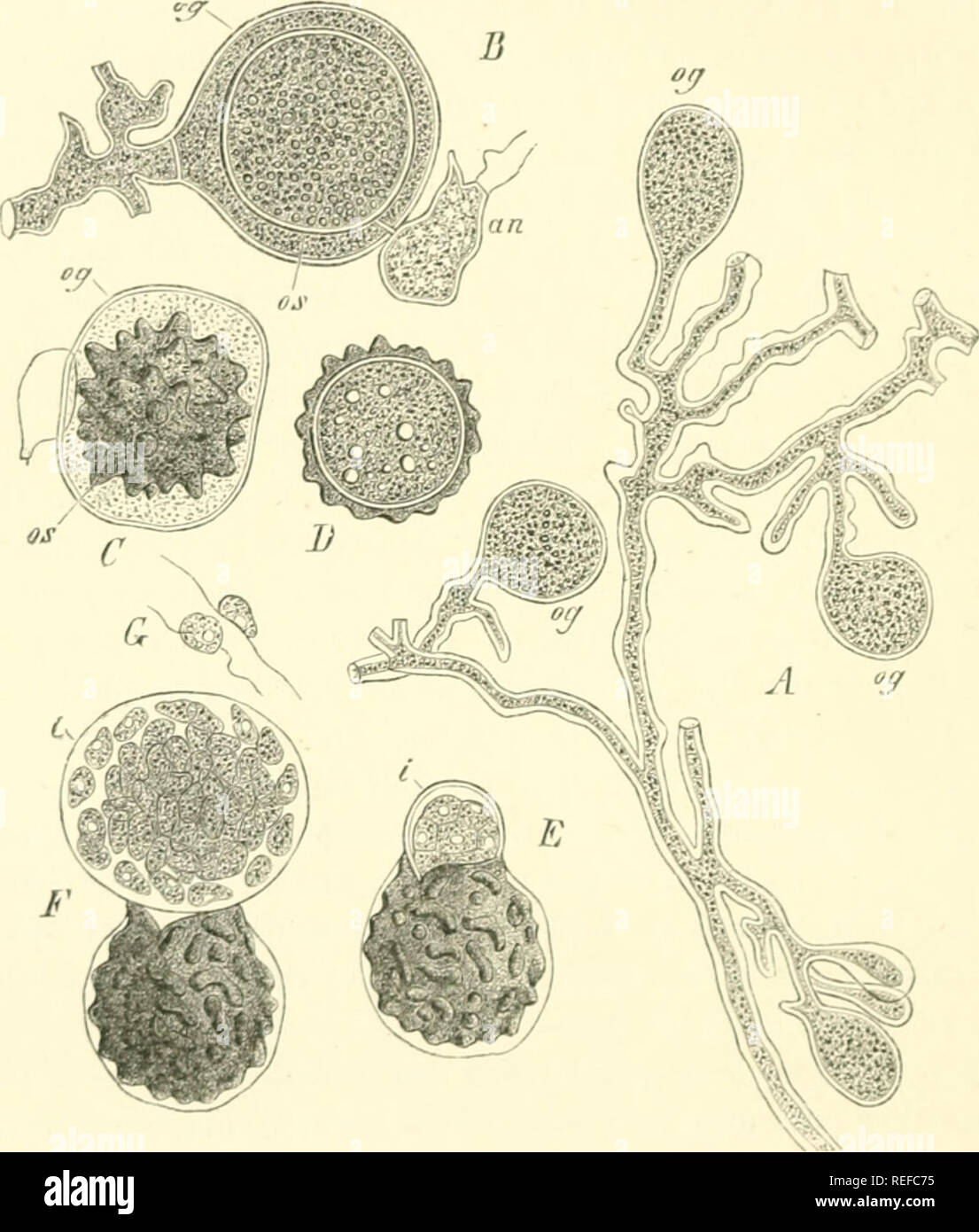 . Comparative morphology and biology of the fungi, mycetozoa and bacteria. Fungi -- Morphology; Bacteria -- Morphology. './' DIVISION II.âCOURSE OF DEVELOPMENT OF FUNGI. The above phenomena close the cycle of development and in some species the course of development is actually limited to them; many observations at least have failed to detect anything further, for example in Pythium vexans and Artotrogus. We may therefore conclude that the i ssential points in the life-history of the whole group are confined to these phenomena. But in most species there is this difference, that the course of t Stock Photohttps://www.alamy.com/image-license-details/?v=1https://www.alamy.com/comparative-morphology-and-biology-of-the-fungi-mycetozoa-and-bacteria-fungi-morphology-bacteria-morphology-division-iicourse-of-development-of-fungi-the-above-phenomena-close-the-cycle-of-development-and-in-some-species-the-course-of-development-is-actually-limited-to-them-many-observations-at-least-have-failed-to-detect-anything-further-for-example-in-pythium-vexans-and-artotrogus-we-may-therefore-conclude-that-the-i-ssential-points-in-the-life-history-of-the-whole-group-are-confined-to-these-phenomena-but-in-most-species-there-is-this-difference-that-the-course-of-t-image232678857.html
. Comparative morphology and biology of the fungi, mycetozoa and bacteria. Fungi -- Morphology; Bacteria -- Morphology. './' DIVISION II.âCOURSE OF DEVELOPMENT OF FUNGI. The above phenomena close the cycle of development and in some species the course of development is actually limited to them; many observations at least have failed to detect anything further, for example in Pythium vexans and Artotrogus. We may therefore conclude that the i ssential points in the life-history of the whole group are confined to these phenomena. But in most species there is this difference, that the course of t Stock Photohttps://www.alamy.com/image-license-details/?v=1https://www.alamy.com/comparative-morphology-and-biology-of-the-fungi-mycetozoa-and-bacteria-fungi-morphology-bacteria-morphology-division-iicourse-of-development-of-fungi-the-above-phenomena-close-the-cycle-of-development-and-in-some-species-the-course-of-development-is-actually-limited-to-them-many-observations-at-least-have-failed-to-detect-anything-further-for-example-in-pythium-vexans-and-artotrogus-we-may-therefore-conclude-that-the-i-ssential-points-in-the-life-history-of-the-whole-group-are-confined-to-these-phenomena-but-in-most-species-there-is-this-difference-that-the-course-of-t-image232678857.htmlRMREFC75–. Comparative morphology and biology of the fungi, mycetozoa and bacteria. Fungi -- Morphology; Bacteria -- Morphology. './' DIVISION II.âCOURSE OF DEVELOPMENT OF FUNGI. The above phenomena close the cycle of development and in some species the course of development is actually limited to them; many observations at least have failed to detect anything further, for example in Pythium vexans and Artotrogus. We may therefore conclude that the i ssential points in the life-history of the whole group are confined to these phenomena. But in most species there is this difference, that the course of t
 Broad-leaved helleborine, Eastern helleborine (Epipactis helleborine), inland floodwater mosquito, Aedes vexans, on a flower, Germany, Mecklenburg-Western Pomerania Stock Photohttps://www.alamy.com/image-license-details/?v=1https://www.alamy.com/broad-leaved-helleborine-eastern-helleborine-epipactis-helleborine-inland-floodwater-mosquito-aedes-vexans-on-a-flower-germany-mecklenburg-western-pomerania-image255220736.html
Broad-leaved helleborine, Eastern helleborine (Epipactis helleborine), inland floodwater mosquito, Aedes vexans, on a flower, Germany, Mecklenburg-Western Pomerania Stock Photohttps://www.alamy.com/image-license-details/?v=1https://www.alamy.com/broad-leaved-helleborine-eastern-helleborine-epipactis-helleborine-inland-floodwater-mosquito-aedes-vexans-on-a-flower-germany-mecklenburg-western-pomerania-image255220736.htmlRMTR68J8–Broad-leaved helleborine, Eastern helleborine (Epipactis helleborine), inland floodwater mosquito, Aedes vexans, on a flower, Germany, Mecklenburg-Western Pomerania
 Pholiotina arrhenii, also known as Conocybe arrhenii, the ringed conecap, wild mushroom from Finland Stock Photohttps://www.alamy.com/image-license-details/?v=1https://www.alamy.com/pholiotina-arrhenii-also-known-as-conocybe-arrhenii-the-ringed-conecap-wild-mushroom-from-finland-image396853994.html
Pholiotina arrhenii, also known as Conocybe arrhenii, the ringed conecap, wild mushroom from Finland Stock Photohttps://www.alamy.com/image-license-details/?v=1https://www.alamy.com/pholiotina-arrhenii-also-known-as-conocybe-arrhenii-the-ringed-conecap-wild-mushroom-from-finland-image396853994.htmlRF2E1J78X–Pholiotina arrhenii, also known as Conocybe arrhenii, the ringed conecap, wild mushroom from Finland
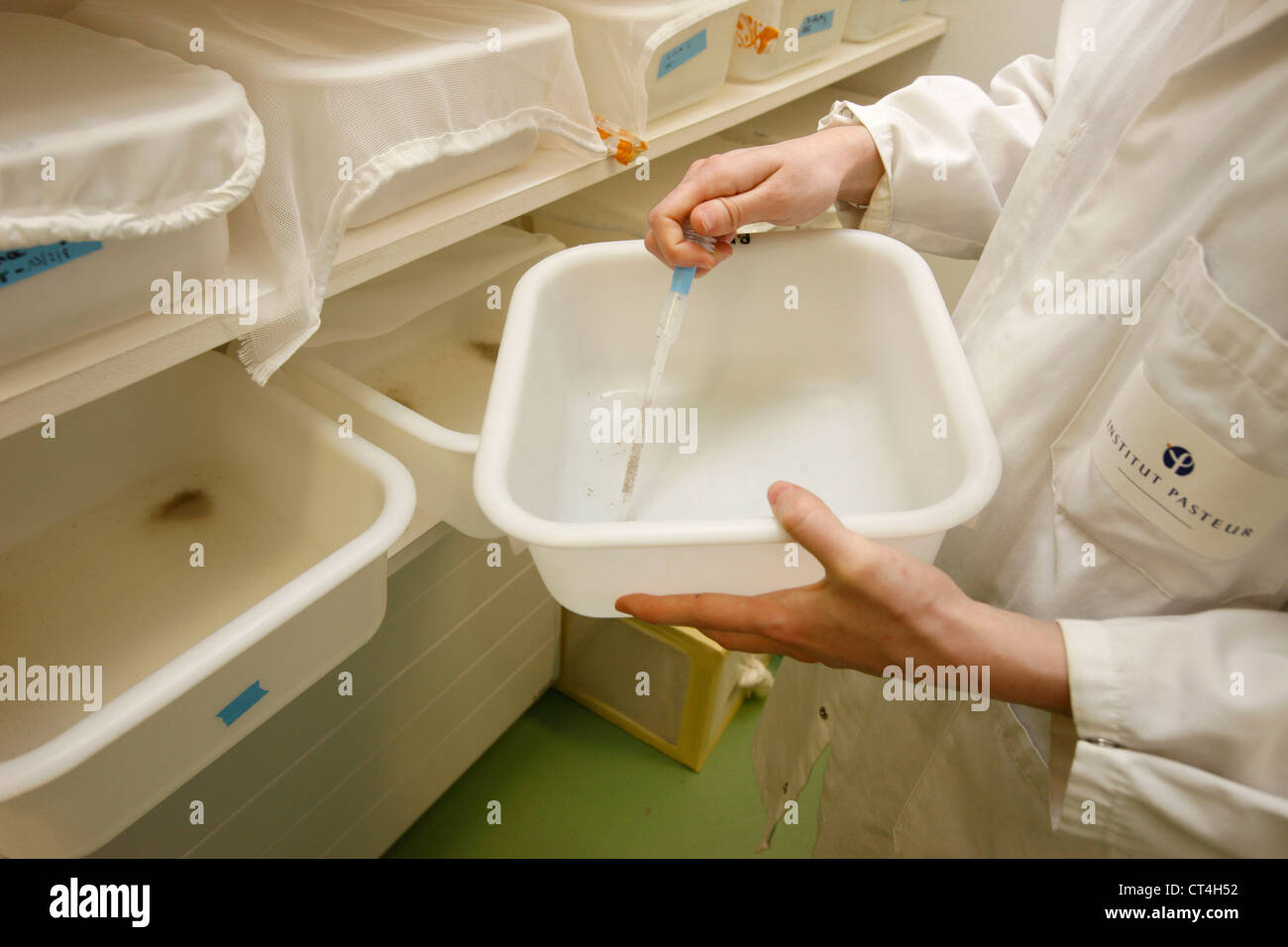 MOSQUITO BREEDING IN LABORATORY Stock Photohttps://www.alamy.com/image-license-details/?v=1https://www.alamy.com/stock-photo-mosquito-breeding-in-laboratory-49273758.html
MOSQUITO BREEDING IN LABORATORY Stock Photohttps://www.alamy.com/image-license-details/?v=1https://www.alamy.com/stock-photo-mosquito-breeding-in-laboratory-49273758.htmlRMCT4H52–MOSQUITO BREEDING IN LABORATORY
 19 July 2020, Brandenburg, Frankfurt (Oder): Several mosquitoes of the species Aedes vexans can be seen on the arm of a woman. Photo: Patrick Pleul/dpa-Zentralbild/ZB Stock Photohttps://www.alamy.com/image-license-details/?v=1https://www.alamy.com/19-july-2020-brandenburg-frankfurt-oder-several-mosquitoes-of-the-species-aedes-vexans-can-be-seen-on-the-arm-of-a-woman-photo-patrick-pleuldpa-zentralbildzb-image366347080.html
19 July 2020, Brandenburg, Frankfurt (Oder): Several mosquitoes of the species Aedes vexans can be seen on the arm of a woman. Photo: Patrick Pleul/dpa-Zentralbild/ZB Stock Photohttps://www.alamy.com/image-license-details/?v=1https://www.alamy.com/19-july-2020-brandenburg-frankfurt-oder-several-mosquitoes-of-the-species-aedes-vexans-can-be-seen-on-the-arm-of-a-woman-photo-patrick-pleuldpa-zentralbildzb-image366347080.htmlRM2C80FC8–19 July 2020, Brandenburg, Frankfurt (Oder): Several mosquitoes of the species Aedes vexans can be seen on the arm of a woman. Photo: Patrick Pleul/dpa-Zentralbild/ZB
 (Phidippus vexans) Stock Photohttps://www.alamy.com/image-license-details/?v=1https://www.alamy.com/phidippus-vexans-image631970466.html
(Phidippus vexans) Stock Photohttps://www.alamy.com/image-license-details/?v=1https://www.alamy.com/phidippus-vexans-image631970466.htmlRM2YM4MNP–(Phidippus vexans)
 . Bulletin of the Natural History Museum Entomology. . Figs 68-73 68, sp. C, forewing, O"; antennae, cf - 69, A. brasiliensis; 70, A. vexans; 71, A. bolowi; 72, sp. A (clava collapsed); 73, sp. C.. Please note that these images are extracted from scanned page images that may have been digitally enhanced for readability - coloration and appearance of these illustrations may not perfectly resemble the original work.. Natural History Museum (London). Andover : Intercept Stock Photohttps://www.alamy.com/image-license-details/?v=1https://www.alamy.com/bulletin-of-the-natural-history-museum-entomology-figs-68-73-68-sp-c-forewing-oquot-antennae-cf-69-a-brasiliensis-70-a-vexans-71-a-bolowi-72-sp-a-clava-collapsed-73-sp-c-please-note-that-these-images-are-extracted-from-scanned-page-images-that-may-have-been-digitally-enhanced-for-readability-coloration-and-appearance-of-these-illustrations-may-not-perfectly-resemble-the-original-work-natural-history-museum-london-andover-intercept-image233868178.html
. Bulletin of the Natural History Museum Entomology. . Figs 68-73 68, sp. C, forewing, O"; antennae, cf - 69, A. brasiliensis; 70, A. vexans; 71, A. bolowi; 72, sp. A (clava collapsed); 73, sp. C.. Please note that these images are extracted from scanned page images that may have been digitally enhanced for readability - coloration and appearance of these illustrations may not perfectly resemble the original work.. Natural History Museum (London). Andover : Intercept Stock Photohttps://www.alamy.com/image-license-details/?v=1https://www.alamy.com/bulletin-of-the-natural-history-museum-entomology-figs-68-73-68-sp-c-forewing-oquot-antennae-cf-69-a-brasiliensis-70-a-vexans-71-a-bolowi-72-sp-a-clava-collapsed-73-sp-c-please-note-that-these-images-are-extracted-from-scanned-page-images-that-may-have-been-digitally-enhanced-for-readability-coloration-and-appearance-of-these-illustrations-may-not-perfectly-resemble-the-original-work-natural-history-museum-london-andover-intercept-image233868178.htmlRMRGDH6X–. Bulletin of the Natural History Museum Entomology. . Figs 68-73 68, sp. C, forewing, O"; antennae, cf - 69, A. brasiliensis; 70, A. vexans; 71, A. bolowi; 72, sp. A (clava collapsed); 73, sp. C.. Please note that these images are extracted from scanned page images that may have been digitally enhanced for readability - coloration and appearance of these illustrations may not perfectly resemble the original work.. Natural History Museum (London). Andover : Intercept
 Conocybe arrhenii, also known as Pholiotina arrhenii, the ringed conecap, wild mushroom from Finland Stock Photohttps://www.alamy.com/image-license-details/?v=1https://www.alamy.com/conocybe-arrhenii-also-known-as-pholiotina-arrhenii-the-ringed-conecap-wild-mushroom-from-finland-image389622323.html
Conocybe arrhenii, also known as Pholiotina arrhenii, the ringed conecap, wild mushroom from Finland Stock Photohttps://www.alamy.com/image-license-details/?v=1https://www.alamy.com/conocybe-arrhenii-also-known-as-pholiotina-arrhenii-the-ringed-conecap-wild-mushroom-from-finland-image389622323.htmlRF2DHTR6Y–Conocybe arrhenii, also known as Pholiotina arrhenii, the ringed conecap, wild mushroom from Finland
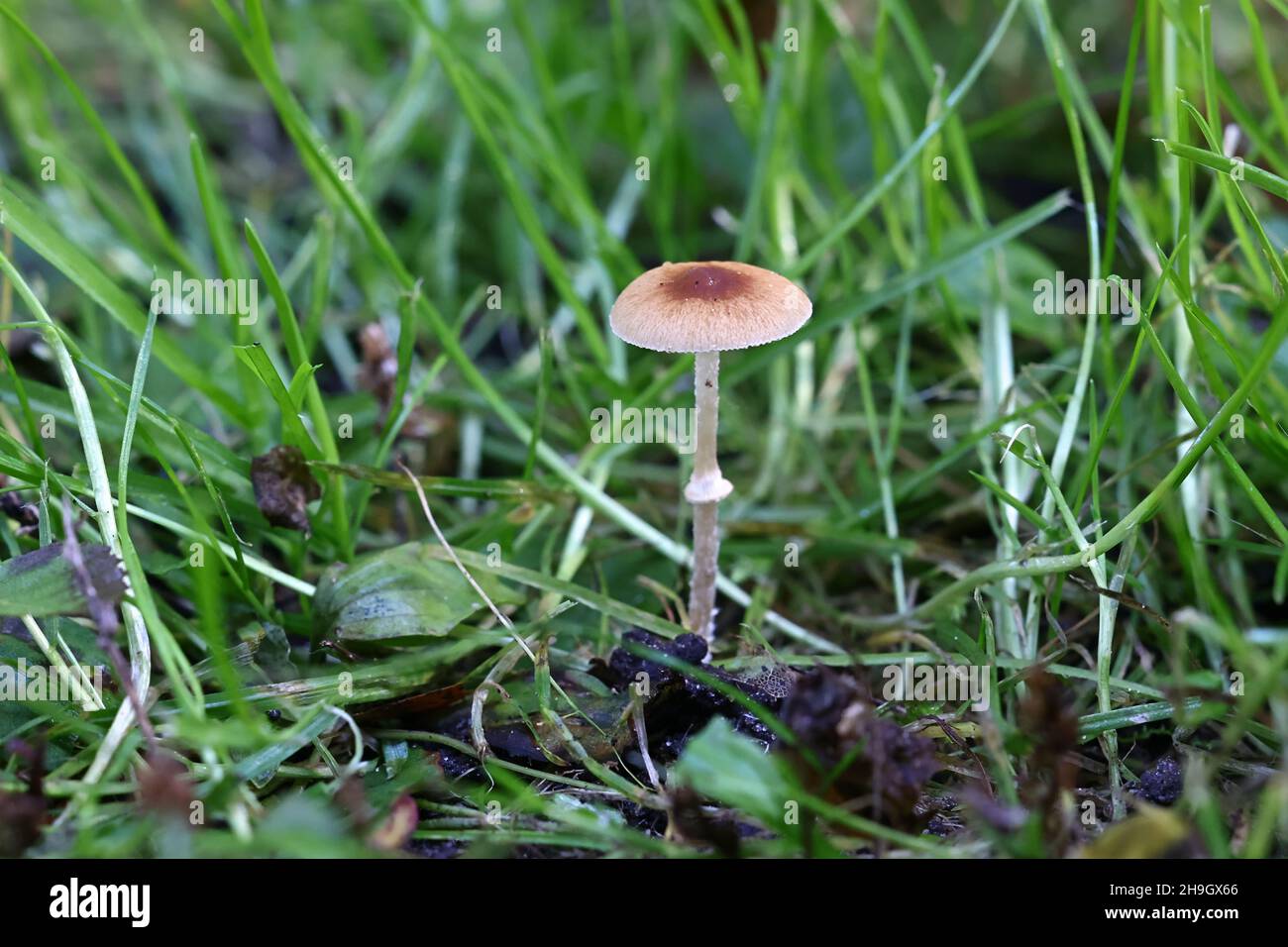 Pholiotina arrhenii, also known as Conocybe arrhenii, the ringed conecap, wild mushroom from Finland Stock Photohttps://www.alamy.com/image-license-details/?v=1https://www.alamy.com/pholiotina-arrhenii-also-known-as-conocybe-arrhenii-the-ringed-conecap-wild-mushroom-from-finland-image453373262.html
Pholiotina arrhenii, also known as Conocybe arrhenii, the ringed conecap, wild mushroom from Finland Stock Photohttps://www.alamy.com/image-license-details/?v=1https://www.alamy.com/pholiotina-arrhenii-also-known-as-conocybe-arrhenii-the-ringed-conecap-wild-mushroom-from-finland-image453373262.htmlRF2H9GX66–Pholiotina arrhenii, also known as Conocybe arrhenii, the ringed conecap, wild mushroom from Finland
 MOSQUITO BREEDING IN LABORATORY Stock Photohttps://www.alamy.com/image-license-details/?v=1https://www.alamy.com/stock-photo-mosquito-breeding-in-laboratory-49273853.html
MOSQUITO BREEDING IN LABORATORY Stock Photohttps://www.alamy.com/image-license-details/?v=1https://www.alamy.com/stock-photo-mosquito-breeding-in-laboratory-49273853.htmlRMCT4H8D–MOSQUITO BREEDING IN LABORATORY
 19 July 2020, Brandenburg, Frankfurt (Oder): Several mosquitoes of the species Aedes vexans can be seen on a pair of jeans. Photo: Patrick Pleul/dpa-Zentralbild/ZB Stock Photohttps://www.alamy.com/image-license-details/?v=1https://www.alamy.com/19-july-2020-brandenburg-frankfurt-oder-several-mosquitoes-of-the-species-aedes-vexans-can-be-seen-on-a-pair-of-jeans-photo-patrick-pleuldpa-zentralbildzb-image366347086.html
19 July 2020, Brandenburg, Frankfurt (Oder): Several mosquitoes of the species Aedes vexans can be seen on a pair of jeans. Photo: Patrick Pleul/dpa-Zentralbild/ZB Stock Photohttps://www.alamy.com/image-license-details/?v=1https://www.alamy.com/19-july-2020-brandenburg-frankfurt-oder-several-mosquitoes-of-the-species-aedes-vexans-can-be-seen-on-a-pair-of-jeans-photo-patrick-pleuldpa-zentralbildzb-image366347086.htmlRM2C80FCE–19 July 2020, Brandenburg, Frankfurt (Oder): Several mosquitoes of the species Aedes vexans can be seen on a pair of jeans. Photo: Patrick Pleul/dpa-Zentralbild/ZB
 (Sporormiella vexans) Stock Photohttps://www.alamy.com/image-license-details/?v=1https://www.alamy.com/sporormiella-vexans-image629192041.html
(Sporormiella vexans) Stock Photohttps://www.alamy.com/image-license-details/?v=1https://www.alamy.com/sporormiella-vexans-image629192041.htmlRM2YFJ4T9–(Sporormiella vexans)
 20 July 2020, Brandenburg, Frankfurt (Oder): One glass is filled with larvae of the mosquito species Aedes vexans, which were previously caught in a pond in the city's alluvial forest by Doreen Werner, biologist from the Leibniz Centre for Agricultural Landscape Research (ZALF) at the Institute of Land Use Systems AG Medical Entomology. Due to the slight flooding of the German-Polish border river Oder, large parts of the alluvial forest and the adjacent meadows were flooded in the past weeks. The consequence is a high increase in the mosquito population in these areas. In a test conducted by Stock Photohttps://www.alamy.com/image-license-details/?v=1https://www.alamy.com/20-july-2020-brandenburg-frankfurt-oder-one-glass-is-filled-with-larvae-of-the-mosquito-species-aedes-vexans-which-were-previously-caught-in-a-pond-in-the-citys-alluvial-forest-by-doreen-werner-biologist-from-the-leibniz-centre-for-agricultural-landscape-research-zalf-at-the-institute-of-land-use-systems-ag-medical-entomology-due-to-the-slight-flooding-of-the-german-polish-border-river-oder-large-parts-of-the-alluvial-forest-and-the-adjacent-meadows-were-flooded-in-the-past-weeks-the-consequence-is-a-high-increase-in-the-mosquito-population-in-these-areas-in-a-test-conducted-by-image366343892.html
20 July 2020, Brandenburg, Frankfurt (Oder): One glass is filled with larvae of the mosquito species Aedes vexans, which were previously caught in a pond in the city's alluvial forest by Doreen Werner, biologist from the Leibniz Centre for Agricultural Landscape Research (ZALF) at the Institute of Land Use Systems AG Medical Entomology. Due to the slight flooding of the German-Polish border river Oder, large parts of the alluvial forest and the adjacent meadows were flooded in the past weeks. The consequence is a high increase in the mosquito population in these areas. In a test conducted by Stock Photohttps://www.alamy.com/image-license-details/?v=1https://www.alamy.com/20-july-2020-brandenburg-frankfurt-oder-one-glass-is-filled-with-larvae-of-the-mosquito-species-aedes-vexans-which-were-previously-caught-in-a-pond-in-the-citys-alluvial-forest-by-doreen-werner-biologist-from-the-leibniz-centre-for-agricultural-landscape-research-zalf-at-the-institute-of-land-use-systems-ag-medical-entomology-due-to-the-slight-flooding-of-the-german-polish-border-river-oder-large-parts-of-the-alluvial-forest-and-the-adjacent-meadows-were-flooded-in-the-past-weeks-the-consequence-is-a-high-increase-in-the-mosquito-population-in-these-areas-in-a-test-conducted-by-image366343892.htmlRM2C80BAC–20 July 2020, Brandenburg, Frankfurt (Oder): One glass is filled with larvae of the mosquito species Aedes vexans, which were previously caught in a pond in the city's alluvial forest by Doreen Werner, biologist from the Leibniz Centre for Agricultural Landscape Research (ZALF) at the Institute of Land Use Systems AG Medical Entomology. Due to the slight flooding of the German-Polish border river Oder, large parts of the alluvial forest and the adjacent meadows were flooded in the past weeks. The consequence is a high increase in the mosquito population in these areas. In a test conducted by
 . Comparative morphology and biology of the fungi, mycetozoa and bacteria . Plant morphology; Fungi; Myxomycetes; Bacteriology. 136 DIVISION II.—COURSE OF DEVELOPMENT OF FUNGI. The above phenomena close the cycle of development and in some species the course of development is actually limited to them; many observations at least have failed to detect anything further, for example in Pythium vexans and Artotrogus. We may therefore conclude that the essential points in the life-history of the whole group are confined to these phenomena. But in most species there is this difference, that the cours Stock Photohttps://www.alamy.com/image-license-details/?v=1https://www.alamy.com/comparative-morphology-and-biology-of-the-fungi-mycetozoa-and-bacteria-plant-morphology-fungi-myxomycetes-bacteriology-136-division-iicourse-of-development-of-fungi-the-above-phenomena-close-the-cycle-of-development-and-in-some-species-the-course-of-development-is-actually-limited-to-them-many-observations-at-least-have-failed-to-detect-anything-further-for-example-in-pythium-vexans-and-artotrogus-we-may-therefore-conclude-that-the-essential-points-in-the-life-history-of-the-whole-group-are-confined-to-these-phenomena-but-in-most-species-there-is-this-difference-that-the-cours-image232012013.html
. Comparative morphology and biology of the fungi, mycetozoa and bacteria . Plant morphology; Fungi; Myxomycetes; Bacteriology. 136 DIVISION II.—COURSE OF DEVELOPMENT OF FUNGI. The above phenomena close the cycle of development and in some species the course of development is actually limited to them; many observations at least have failed to detect anything further, for example in Pythium vexans and Artotrogus. We may therefore conclude that the essential points in the life-history of the whole group are confined to these phenomena. But in most species there is this difference, that the cours Stock Photohttps://www.alamy.com/image-license-details/?v=1https://www.alamy.com/comparative-morphology-and-biology-of-the-fungi-mycetozoa-and-bacteria-plant-morphology-fungi-myxomycetes-bacteriology-136-division-iicourse-of-development-of-fungi-the-above-phenomena-close-the-cycle-of-development-and-in-some-species-the-course-of-development-is-actually-limited-to-them-many-observations-at-least-have-failed-to-detect-anything-further-for-example-in-pythium-vexans-and-artotrogus-we-may-therefore-conclude-that-the-essential-points-in-the-life-history-of-the-whole-group-are-confined-to-these-phenomena-but-in-most-species-there-is-this-difference-that-the-cours-image232012013.htmlRMRDD1K9–. Comparative morphology and biology of the fungi, mycetozoa and bacteria . Plant morphology; Fungi; Myxomycetes; Bacteriology. 136 DIVISION II.—COURSE OF DEVELOPMENT OF FUNGI. The above phenomena close the cycle of development and in some species the course of development is actually limited to them; many observations at least have failed to detect anything further, for example in Pythium vexans and Artotrogus. We may therefore conclude that the essential points in the life-history of the whole group are confined to these phenomena. But in most species there is this difference, that the cours
 Pholiotina arrhenii, also known as Conocybe arrhenii, the ringed conecap, wild mushroom from Finland Stock Photohttps://www.alamy.com/image-license-details/?v=1https://www.alamy.com/pholiotina-arrhenii-also-known-as-conocybe-arrhenii-the-ringed-conecap-wild-mushroom-from-finland-image453373250.html
Pholiotina arrhenii, also known as Conocybe arrhenii, the ringed conecap, wild mushroom from Finland Stock Photohttps://www.alamy.com/image-license-details/?v=1https://www.alamy.com/pholiotina-arrhenii-also-known-as-conocybe-arrhenii-the-ringed-conecap-wild-mushroom-from-finland-image453373250.htmlRF2H9GX5P–Pholiotina arrhenii, also known as Conocybe arrhenii, the ringed conecap, wild mushroom from Finland
 Pholiotina arrhenii, also known as Conocybe arrhenii, the ringed conecap, wild mushroom from Finland Stock Photohttps://www.alamy.com/image-license-details/?v=1https://www.alamy.com/pholiotina-arrhenii-also-known-as-conocybe-arrhenii-the-ringed-conecap-wild-mushroom-from-finland-image401964526.html
Pholiotina arrhenii, also known as Conocybe arrhenii, the ringed conecap, wild mushroom from Finland Stock Photohttps://www.alamy.com/image-license-details/?v=1https://www.alamy.com/pholiotina-arrhenii-also-known-as-conocybe-arrhenii-the-ringed-conecap-wild-mushroom-from-finland-image401964526.htmlRF2E9Y1RX–Pholiotina arrhenii, also known as Conocybe arrhenii, the ringed conecap, wild mushroom from Finland
 MOSQUITO BREEDING IN LABORATORY Stock Photohttps://www.alamy.com/image-license-details/?v=1https://www.alamy.com/stock-photo-mosquito-breeding-in-laboratory-49273768.html
MOSQUITO BREEDING IN LABORATORY Stock Photohttps://www.alamy.com/image-license-details/?v=1https://www.alamy.com/stock-photo-mosquito-breeding-in-laboratory-49273768.htmlRMCT4H5C–MOSQUITO BREEDING IN LABORATORY
 (Sporormiella vexans) Stock Photohttps://www.alamy.com/image-license-details/?v=1https://www.alamy.com/sporormiella-vexans-image627886968.html
(Sporormiella vexans) Stock Photohttps://www.alamy.com/image-license-details/?v=1https://www.alamy.com/sporormiella-vexans-image627886968.htmlRM2YDEM6G–(Sporormiella vexans)
 20 July 2020, Brandenburg, Frankfurt (Oder): Several mosquitoes of the species Aedes vexans can be seen on the arm of the biologist Doreen Werner standing in the alluvial forest of the city. Doreen Werner from the Leibniz-Centre for Agricultural Landscape Research (ZALF) at the Institute of Land Use Systems AG Medical Entomology is currently researching mosquitoes in the floodplain forest. Due to the slight flooding of the German-Polish border river Oder, large parts of the alluvial forest and the adjacent meadows have been flooded in recent weeks. The consequence is a high increase in the mo Stock Photohttps://www.alamy.com/image-license-details/?v=1https://www.alamy.com/20-july-2020-brandenburg-frankfurt-oder-several-mosquitoes-of-the-species-aedes-vexans-can-be-seen-on-the-arm-of-the-biologist-doreen-werner-standing-in-the-alluvial-forest-of-the-city-doreen-werner-from-the-leibniz-centre-for-agricultural-landscape-research-zalf-at-the-institute-of-land-use-systems-ag-medical-entomology-is-currently-researching-mosquitoes-in-the-floodplain-forest-due-to-the-slight-flooding-of-the-german-polish-border-river-oder-large-parts-of-the-alluvial-forest-and-the-adjacent-meadows-have-been-flooded-in-recent-weeks-the-consequence-is-a-high-increase-in-the-mo-image366342558.html
20 July 2020, Brandenburg, Frankfurt (Oder): Several mosquitoes of the species Aedes vexans can be seen on the arm of the biologist Doreen Werner standing in the alluvial forest of the city. Doreen Werner from the Leibniz-Centre for Agricultural Landscape Research (ZALF) at the Institute of Land Use Systems AG Medical Entomology is currently researching mosquitoes in the floodplain forest. Due to the slight flooding of the German-Polish border river Oder, large parts of the alluvial forest and the adjacent meadows have been flooded in recent weeks. The consequence is a high increase in the mo Stock Photohttps://www.alamy.com/image-license-details/?v=1https://www.alamy.com/20-july-2020-brandenburg-frankfurt-oder-several-mosquitoes-of-the-species-aedes-vexans-can-be-seen-on-the-arm-of-the-biologist-doreen-werner-standing-in-the-alluvial-forest-of-the-city-doreen-werner-from-the-leibniz-centre-for-agricultural-landscape-research-zalf-at-the-institute-of-land-use-systems-ag-medical-entomology-is-currently-researching-mosquitoes-in-the-floodplain-forest-due-to-the-slight-flooding-of-the-german-polish-border-river-oder-large-parts-of-the-alluvial-forest-and-the-adjacent-meadows-have-been-flooded-in-recent-weeks-the-consequence-is-a-high-increase-in-the-mo-image366342558.htmlRM2C809JP–20 July 2020, Brandenburg, Frankfurt (Oder): Several mosquitoes of the species Aedes vexans can be seen on the arm of the biologist Doreen Werner standing in the alluvial forest of the city. Doreen Werner from the Leibniz-Centre for Agricultural Landscape Research (ZALF) at the Institute of Land Use Systems AG Medical Entomology is currently researching mosquitoes in the floodplain forest. Due to the slight flooding of the German-Polish border river Oder, large parts of the alluvial forest and the adjacent meadows have been flooded in recent weeks. The consequence is a high increase in the mo
![. Annual report of the Agricultural Experiment Station. Cornell University. Agricultural Experiment Station; Agriculture -- New York (State). Plate III.—15-20, Isaria vexans ; 21-22, Cordyceps iiiilitaris var ; 23-30, Isaria densa. [457]. Please note that these images are extracted from scanned page images that may have been digitally enhanced for readability - coloration and appearance of these illustrations may not perfectly resemble the original work.. Cornell University. Agricultural Experiment Station. Ithaca, N. Y. : The University Stock Photo . Annual report of the Agricultural Experiment Station. Cornell University. Agricultural Experiment Station; Agriculture -- New York (State). Plate III.—15-20, Isaria vexans ; 21-22, Cordyceps iiiilitaris var ; 23-30, Isaria densa. [457]. Please note that these images are extracted from scanned page images that may have been digitally enhanced for readability - coloration and appearance of these illustrations may not perfectly resemble the original work.. Cornell University. Agricultural Experiment Station. Ithaca, N. Y. : The University Stock Photo](https://c8.alamy.com/comp/RM6BC7/annual-report-of-the-agricultural-experiment-station-cornell-university-agricultural-experiment-station-agriculture-new-york-state-plate-iii15-20-isaria-vexans-21-22-cordyceps-iiiilitaris-var-23-30-isaria-densa-457-please-note-that-these-images-are-extracted-from-scanned-page-images-that-may-have-been-digitally-enhanced-for-readability-coloration-and-appearance-of-these-illustrations-may-not-perfectly-resemble-the-original-work-cornell-university-agricultural-experiment-station-ithaca-n-y-the-university-RM6BC7.jpg) . Annual report of the Agricultural Experiment Station. Cornell University. Agricultural Experiment Station; Agriculture -- New York (State). Plate III.—15-20, Isaria vexans ; 21-22, Cordyceps iiiilitaris var ; 23-30, Isaria densa. [457]. Please note that these images are extracted from scanned page images that may have been digitally enhanced for readability - coloration and appearance of these illustrations may not perfectly resemble the original work.. Cornell University. Agricultural Experiment Station. Ithaca, N. Y. : The University Stock Photohttps://www.alamy.com/image-license-details/?v=1https://www.alamy.com/annual-report-of-the-agricultural-experiment-station-cornell-university-agricultural-experiment-station-agriculture-new-york-state-plate-iii15-20-isaria-vexans-21-22-cordyceps-iiiilitaris-var-23-30-isaria-densa-457-please-note-that-these-images-are-extracted-from-scanned-page-images-that-may-have-been-digitally-enhanced-for-readability-coloration-and-appearance-of-these-illustrations-may-not-perfectly-resemble-the-original-work-cornell-university-agricultural-experiment-station-ithaca-n-y-the-university-image236168583.html
. Annual report of the Agricultural Experiment Station. Cornell University. Agricultural Experiment Station; Agriculture -- New York (State). Plate III.—15-20, Isaria vexans ; 21-22, Cordyceps iiiilitaris var ; 23-30, Isaria densa. [457]. Please note that these images are extracted from scanned page images that may have been digitally enhanced for readability - coloration and appearance of these illustrations may not perfectly resemble the original work.. Cornell University. Agricultural Experiment Station. Ithaca, N. Y. : The University Stock Photohttps://www.alamy.com/image-license-details/?v=1https://www.alamy.com/annual-report-of-the-agricultural-experiment-station-cornell-university-agricultural-experiment-station-agriculture-new-york-state-plate-iii15-20-isaria-vexans-21-22-cordyceps-iiiilitaris-var-23-30-isaria-densa-457-please-note-that-these-images-are-extracted-from-scanned-page-images-that-may-have-been-digitally-enhanced-for-readability-coloration-and-appearance-of-these-illustrations-may-not-perfectly-resemble-the-original-work-cornell-university-agricultural-experiment-station-ithaca-n-y-the-university-image236168583.htmlRMRM6BC7–. Annual report of the Agricultural Experiment Station. Cornell University. Agricultural Experiment Station; Agriculture -- New York (State). Plate III.—15-20, Isaria vexans ; 21-22, Cordyceps iiiilitaris var ; 23-30, Isaria densa. [457]. Please note that these images are extracted from scanned page images that may have been digitally enhanced for readability - coloration and appearance of these illustrations may not perfectly resemble the original work.. Cornell University. Agricultural Experiment Station. Ithaca, N. Y. : The University
 MOSQUITO BREEDING IN LABORATORY Stock Photohttps://www.alamy.com/image-license-details/?v=1https://www.alamy.com/stock-photo-mosquito-breeding-in-laboratory-49273795.html
MOSQUITO BREEDING IN LABORATORY Stock Photohttps://www.alamy.com/image-license-details/?v=1https://www.alamy.com/stock-photo-mosquito-breeding-in-laboratory-49273795.htmlRMCT4H6B–MOSQUITO BREEDING IN LABORATORY
 (Sporormiella vexans) Stock Photohttps://www.alamy.com/image-license-details/?v=1https://www.alamy.com/sporormiella-vexans-image627881860.html
(Sporormiella vexans) Stock Photohttps://www.alamy.com/image-license-details/?v=1https://www.alamy.com/sporormiella-vexans-image627881860.htmlRM2YDEDM4–(Sporormiella vexans)
 20 July 2020, Brandenburg, Frankfurt (Oder): Doreen Werner, biologist from the Leibniz Centre for Agricultural Landscape Research (ZALF) at the Institute of Land Use Systems AG Medical Entomology, has caught many mosquitoes of the species Aedes vexans with a landing net in the city's alluvial forest. Due to the slight flooding of the German-Polish border river Oder, large parts of the alluvial forest and adjacent meadows were flooded in the past weeks. The consequence is a high increase in the mosquito population in these areas. In a test conducted by the researcher, around 60 mosquitoes were Stock Photohttps://www.alamy.com/image-license-details/?v=1https://www.alamy.com/20-july-2020-brandenburg-frankfurt-oder-doreen-werner-biologist-from-the-leibniz-centre-for-agricultural-landscape-research-zalf-at-the-institute-of-land-use-systems-ag-medical-entomology-has-caught-many-mosquitoes-of-the-species-aedes-vexans-with-a-landing-net-in-the-citys-alluvial-forest-due-to-the-slight-flooding-of-the-german-polish-border-river-oder-large-parts-of-the-alluvial-forest-and-adjacent-meadows-were-flooded-in-the-past-weeks-the-consequence-is-a-high-increase-in-the-mosquito-population-in-these-areas-in-a-test-conducted-by-the-researcher-around-60-mosquitoes-were-image366343891.html
20 July 2020, Brandenburg, Frankfurt (Oder): Doreen Werner, biologist from the Leibniz Centre for Agricultural Landscape Research (ZALF) at the Institute of Land Use Systems AG Medical Entomology, has caught many mosquitoes of the species Aedes vexans with a landing net in the city's alluvial forest. Due to the slight flooding of the German-Polish border river Oder, large parts of the alluvial forest and adjacent meadows were flooded in the past weeks. The consequence is a high increase in the mosquito population in these areas. In a test conducted by the researcher, around 60 mosquitoes were Stock Photohttps://www.alamy.com/image-license-details/?v=1https://www.alamy.com/20-july-2020-brandenburg-frankfurt-oder-doreen-werner-biologist-from-the-leibniz-centre-for-agricultural-landscape-research-zalf-at-the-institute-of-land-use-systems-ag-medical-entomology-has-caught-many-mosquitoes-of-the-species-aedes-vexans-with-a-landing-net-in-the-citys-alluvial-forest-due-to-the-slight-flooding-of-the-german-polish-border-river-oder-large-parts-of-the-alluvial-forest-and-adjacent-meadows-were-flooded-in-the-past-weeks-the-consequence-is-a-high-increase-in-the-mosquito-population-in-these-areas-in-a-test-conducted-by-the-researcher-around-60-mosquitoes-were-image366343891.htmlRM2C80BAB–20 July 2020, Brandenburg, Frankfurt (Oder): Doreen Werner, biologist from the Leibniz Centre for Agricultural Landscape Research (ZALF) at the Institute of Land Use Systems AG Medical Entomology, has caught many mosquitoes of the species Aedes vexans with a landing net in the city's alluvial forest. Due to the slight flooding of the German-Polish border river Oder, large parts of the alluvial forest and adjacent meadows were flooded in the past weeks. The consequence is a high increase in the mosquito population in these areas. In a test conducted by the researcher, around 60 mosquitoes were
 . Bulletin of the Natural History Museum Entomology. . Figs 50-55 50, Aenasius vexans, ovipositor; 51, A. vexans, proximal part of ovipositor, enlarged; 52, A. dives, ovipositor; 53, A. dives, proximal part of ovipositor, enlarged; 54, A. insularis, proximal part of ovipositor, enlarged; 55, A. phenacocci, ovipositor.. Please note that these images are extracted from scanned page images that may have been digitally enhanced for readability - coloration and appearance of these illustrations may not perfectly resemble the original work.. Natural History Museum (London). Andover : Intercept Stock Photohttps://www.alamy.com/image-license-details/?v=1https://www.alamy.com/bulletin-of-the-natural-history-museum-entomology-figs-50-55-50-aenasius-vexans-ovipositor-51-a-vexans-proximal-part-of-ovipositor-enlarged-52-a-dives-ovipositor-53-a-dives-proximal-part-of-ovipositor-enlarged-54-a-insularis-proximal-part-of-ovipositor-enlarged-55-a-phenacocci-ovipositor-please-note-that-these-images-are-extracted-from-scanned-page-images-that-may-have-been-digitally-enhanced-for-readability-coloration-and-appearance-of-these-illustrations-may-not-perfectly-resemble-the-original-work-natural-history-museum-london-andover-intercept-image233868483.html
. Bulletin of the Natural History Museum Entomology. . Figs 50-55 50, Aenasius vexans, ovipositor; 51, A. vexans, proximal part of ovipositor, enlarged; 52, A. dives, ovipositor; 53, A. dives, proximal part of ovipositor, enlarged; 54, A. insularis, proximal part of ovipositor, enlarged; 55, A. phenacocci, ovipositor.. Please note that these images are extracted from scanned page images that may have been digitally enhanced for readability - coloration and appearance of these illustrations may not perfectly resemble the original work.. Natural History Museum (London). Andover : Intercept Stock Photohttps://www.alamy.com/image-license-details/?v=1https://www.alamy.com/bulletin-of-the-natural-history-museum-entomology-figs-50-55-50-aenasius-vexans-ovipositor-51-a-vexans-proximal-part-of-ovipositor-enlarged-52-a-dives-ovipositor-53-a-dives-proximal-part-of-ovipositor-enlarged-54-a-insularis-proximal-part-of-ovipositor-enlarged-55-a-phenacocci-ovipositor-please-note-that-these-images-are-extracted-from-scanned-page-images-that-may-have-been-digitally-enhanced-for-readability-coloration-and-appearance-of-these-illustrations-may-not-perfectly-resemble-the-original-work-natural-history-museum-london-andover-intercept-image233868483.htmlRMRGDHHR–. Bulletin of the Natural History Museum Entomology. . Figs 50-55 50, Aenasius vexans, ovipositor; 51, A. vexans, proximal part of ovipositor, enlarged; 52, A. dives, ovipositor; 53, A. dives, proximal part of ovipositor, enlarged; 54, A. insularis, proximal part of ovipositor, enlarged; 55, A. phenacocci, ovipositor.. Please note that these images are extracted from scanned page images that may have been digitally enhanced for readability - coloration and appearance of these illustrations may not perfectly resemble the original work.. Natural History Museum (London). Andover : Intercept
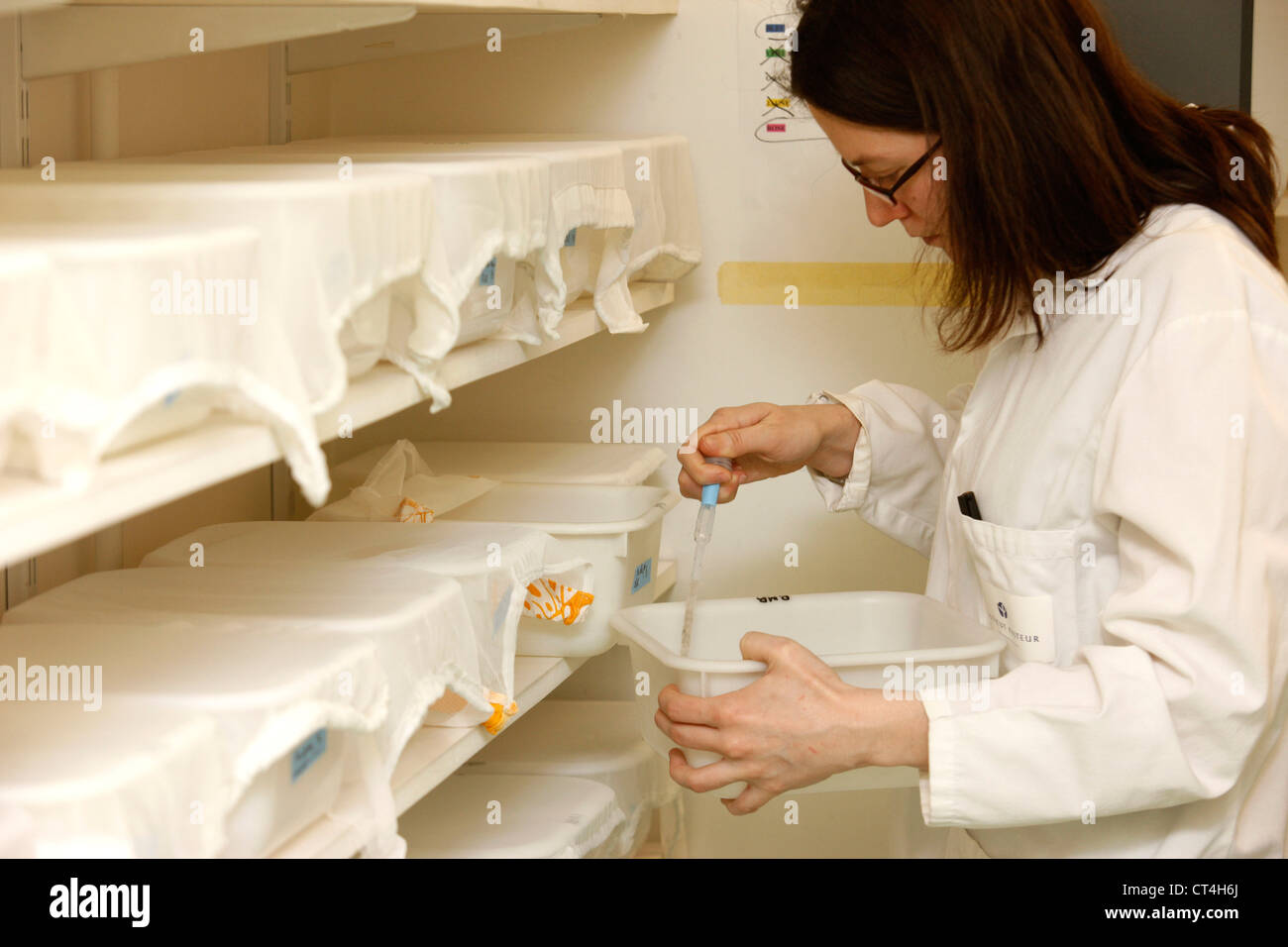 MOSQUITO BREEDING IN LABORATORY Stock Photohttps://www.alamy.com/image-license-details/?v=1https://www.alamy.com/stock-photo-mosquito-breeding-in-laboratory-49273802.html
MOSQUITO BREEDING IN LABORATORY Stock Photohttps://www.alamy.com/image-license-details/?v=1https://www.alamy.com/stock-photo-mosquito-breeding-in-laboratory-49273802.htmlRMCT4H6J–MOSQUITO BREEDING IN LABORATORY
 (Sporormiella vexans) Stock Photohttps://www.alamy.com/image-license-details/?v=1https://www.alamy.com/sporormiella-vexans-image627902212.html
(Sporormiella vexans) Stock Photohttps://www.alamy.com/image-license-details/?v=1https://www.alamy.com/sporormiella-vexans-image627902212.htmlRM2YDFBK0–(Sporormiella vexans)
 20 July 2020, Brandenburg, Frankfurt (Oder): Two mosquitoes of the species Aedes vexans can be seen on a leaf of a plant in the alluvial forest of the city. Biologist Doreen Werner from the Leibniz Centre for Agricultural Landscape Research (ZALF) at the Institute of Land Use Systems AG Medical Entomology is currently conducting research into mosquitoes in the floodplain forests of the city's alluvial forest. Due to the slight flooding of the German-Polish border river Oder, large parts of the alluvial forest and the adjacent meadows have been flooded in recent weeks. The consequence is a high Stock Photohttps://www.alamy.com/image-license-details/?v=1https://www.alamy.com/20-july-2020-brandenburg-frankfurt-oder-two-mosquitoes-of-the-species-aedes-vexans-can-be-seen-on-a-leaf-of-a-plant-in-the-alluvial-forest-of-the-city-biologist-doreen-werner-from-the-leibniz-centre-for-agricultural-landscape-research-zalf-at-the-institute-of-land-use-systems-ag-medical-entomology-is-currently-conducting-research-into-mosquitoes-in-the-floodplain-forests-of-the-citys-alluvial-forest-due-to-the-slight-flooding-of-the-german-polish-border-river-oder-large-parts-of-the-alluvial-forest-and-the-adjacent-meadows-have-been-flooded-in-recent-weeks-the-consequence-is-a-high-image366342605.html
20 July 2020, Brandenburg, Frankfurt (Oder): Two mosquitoes of the species Aedes vexans can be seen on a leaf of a plant in the alluvial forest of the city. Biologist Doreen Werner from the Leibniz Centre for Agricultural Landscape Research (ZALF) at the Institute of Land Use Systems AG Medical Entomology is currently conducting research into mosquitoes in the floodplain forests of the city's alluvial forest. Due to the slight flooding of the German-Polish border river Oder, large parts of the alluvial forest and the adjacent meadows have been flooded in recent weeks. The consequence is a high Stock Photohttps://www.alamy.com/image-license-details/?v=1https://www.alamy.com/20-july-2020-brandenburg-frankfurt-oder-two-mosquitoes-of-the-species-aedes-vexans-can-be-seen-on-a-leaf-of-a-plant-in-the-alluvial-forest-of-the-city-biologist-doreen-werner-from-the-leibniz-centre-for-agricultural-landscape-research-zalf-at-the-institute-of-land-use-systems-ag-medical-entomology-is-currently-conducting-research-into-mosquitoes-in-the-floodplain-forests-of-the-citys-alluvial-forest-due-to-the-slight-flooding-of-the-german-polish-border-river-oder-large-parts-of-the-alluvial-forest-and-the-adjacent-meadows-have-been-flooded-in-recent-weeks-the-consequence-is-a-high-image366342605.htmlRM2C809MD–20 July 2020, Brandenburg, Frankfurt (Oder): Two mosquitoes of the species Aedes vexans can be seen on a leaf of a plant in the alluvial forest of the city. Biologist Doreen Werner from the Leibniz Centre for Agricultural Landscape Research (ZALF) at the Institute of Land Use Systems AG Medical Entomology is currently conducting research into mosquitoes in the floodplain forests of the city's alluvial forest. Due to the slight flooding of the German-Polish border river Oder, large parts of the alluvial forest and the adjacent meadows have been flooded in recent weeks. The consequence is a high
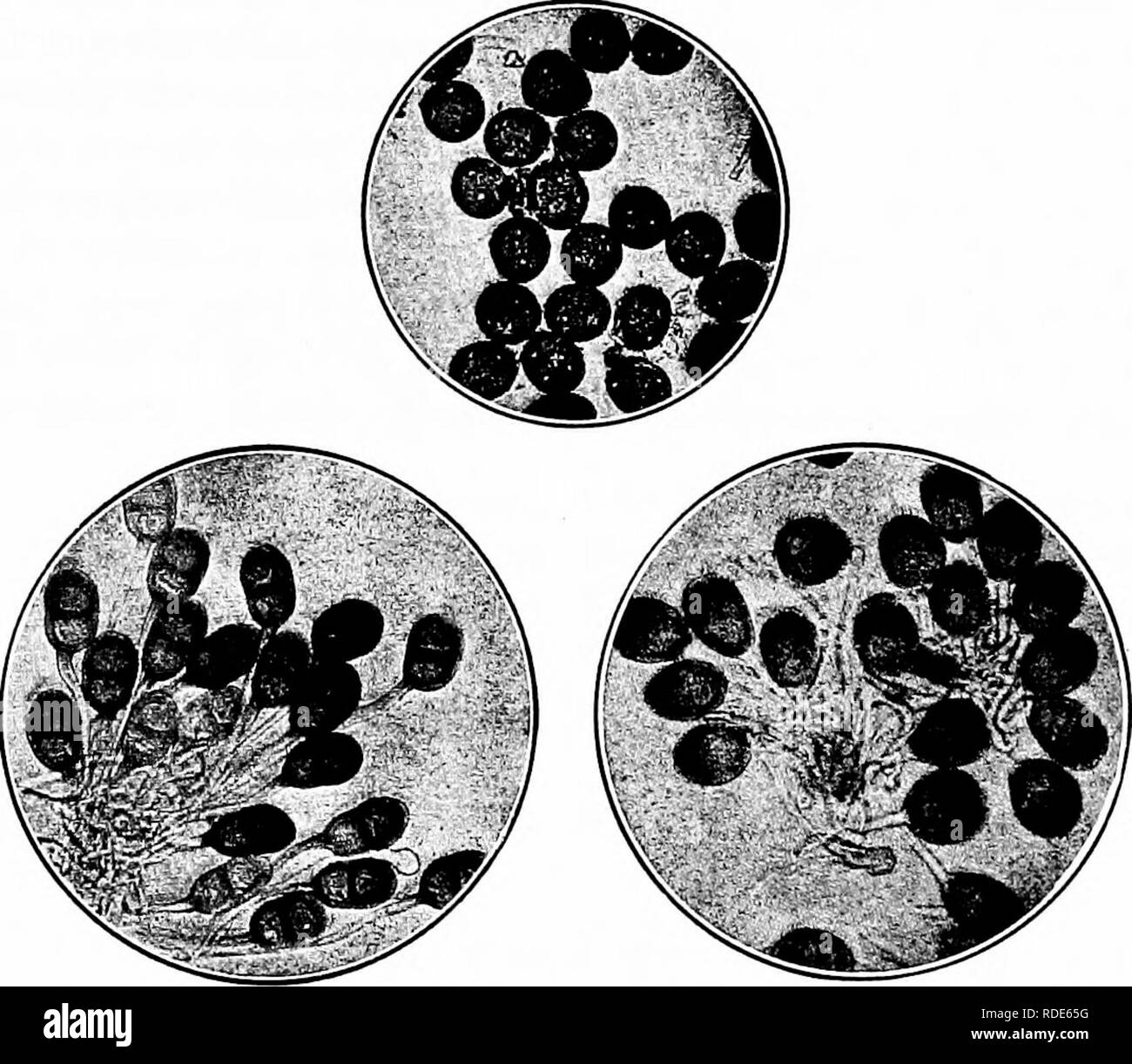 . The fungi which cause plant disease . Plant diseases; Fungi. THE FUNGI WHICH CAUSE PLANT DISEASE 327 O. Pycnia or pycnial stage I. .Ecia or tecial stage II. Uredinia or uredinia stage III. Telia or telial stage The spores in all cases, except those of the basidiospores and. Fig. 241.—Amphispores, urediuiospores and teliospores of Puccinia vexans. After Holway. pycniospores arise by direct conversion of a mycelial cell into a spore, i. e., they are chlamydospores. Mesospore is a term applied to occasional unicellular forms of teliospores found in Puccinia and related genera which do not usual Stock Photohttps://www.alamy.com/image-license-details/?v=1https://www.alamy.com/the-fungi-which-cause-plant-disease-plant-diseases-fungi-the-fungi-which-cause-plant-disease-327-o-pycnia-or-pycnial-stage-i-ecia-or-tecial-stage-ii-uredinia-or-uredinia-stage-iii-telia-or-telial-stage-the-spores-in-all-cases-except-those-of-the-basidiospores-and-fig-241amphispores-urediuiospores-and-teliospores-of-puccinia-vexans-after-holway-pycniospores-arise-by-direct-conversion-of-a-mycelial-cell-into-a-spore-i-e-they-are-chlamydospores-mesospore-is-a-term-applied-to-occasional-unicellular-forms-of-teliospores-found-in-puccinia-and-related-genera-which-do-not-usual-image232037500.html
. The fungi which cause plant disease . Plant diseases; Fungi. THE FUNGI WHICH CAUSE PLANT DISEASE 327 O. Pycnia or pycnial stage I. .Ecia or tecial stage II. Uredinia or uredinia stage III. Telia or telial stage The spores in all cases, except those of the basidiospores and. Fig. 241.—Amphispores, urediuiospores and teliospores of Puccinia vexans. After Holway. pycniospores arise by direct conversion of a mycelial cell into a spore, i. e., they are chlamydospores. Mesospore is a term applied to occasional unicellular forms of teliospores found in Puccinia and related genera which do not usual Stock Photohttps://www.alamy.com/image-license-details/?v=1https://www.alamy.com/the-fungi-which-cause-plant-disease-plant-diseases-fungi-the-fungi-which-cause-plant-disease-327-o-pycnia-or-pycnial-stage-i-ecia-or-tecial-stage-ii-uredinia-or-uredinia-stage-iii-telia-or-telial-stage-the-spores-in-all-cases-except-those-of-the-basidiospores-and-fig-241amphispores-urediuiospores-and-teliospores-of-puccinia-vexans-after-holway-pycniospores-arise-by-direct-conversion-of-a-mycelial-cell-into-a-spore-i-e-they-are-chlamydospores-mesospore-is-a-term-applied-to-occasional-unicellular-forms-of-teliospores-found-in-puccinia-and-related-genera-which-do-not-usual-image232037500.htmlRMRDE65G–. The fungi which cause plant disease . Plant diseases; Fungi. THE FUNGI WHICH CAUSE PLANT DISEASE 327 O. Pycnia or pycnial stage I. .Ecia or tecial stage II. Uredinia or uredinia stage III. Telia or telial stage The spores in all cases, except those of the basidiospores and. Fig. 241.—Amphispores, urediuiospores and teliospores of Puccinia vexans. After Holway. pycniospores arise by direct conversion of a mycelial cell into a spore, i. e., they are chlamydospores. Mesospore is a term applied to occasional unicellular forms of teliospores found in Puccinia and related genera which do not usual
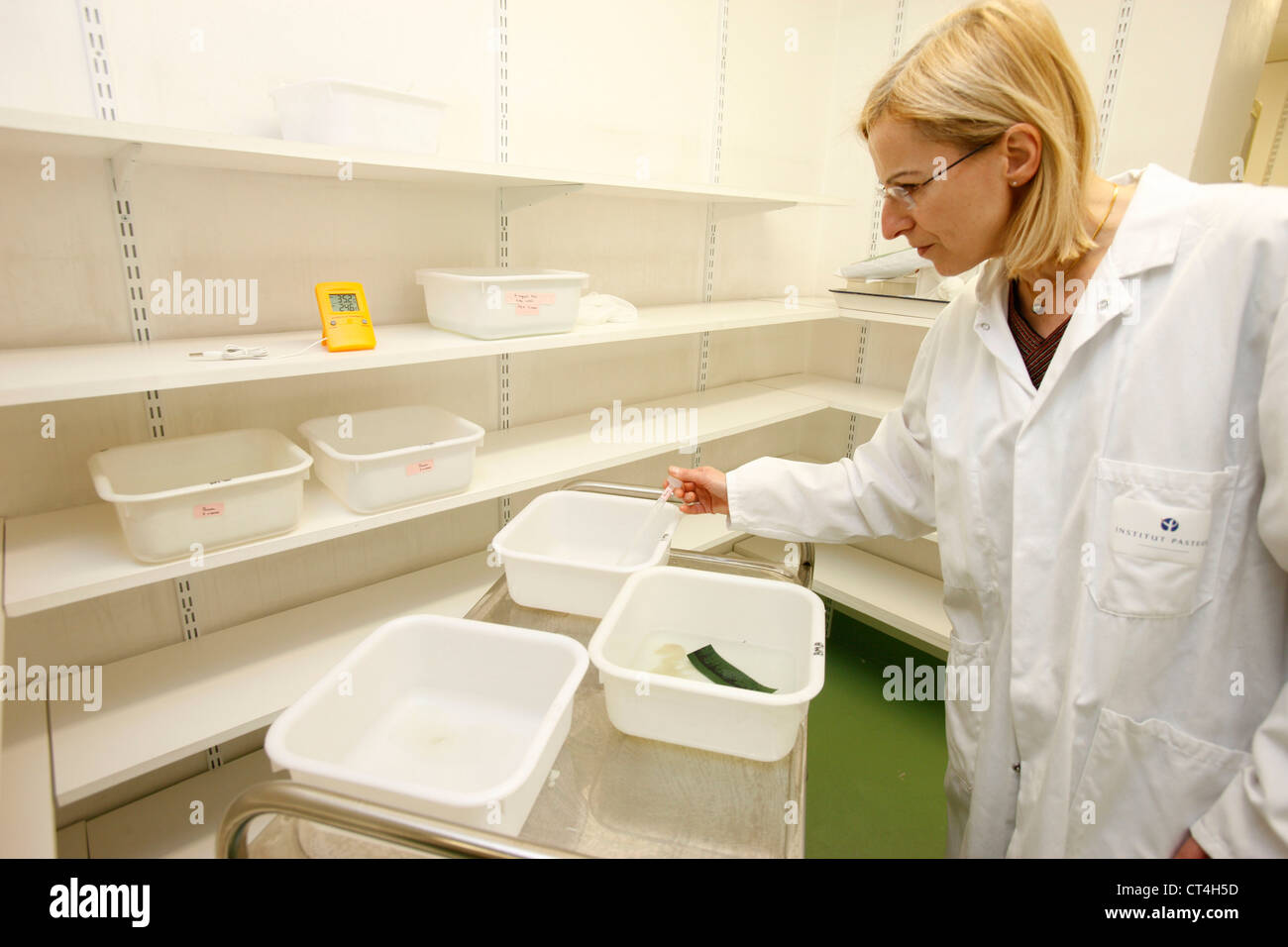 MOSQUITO BREEDING IN LABORATORY Stock Photohttps://www.alamy.com/image-license-details/?v=1https://www.alamy.com/stock-photo-mosquito-breeding-in-laboratory-49273769.html
MOSQUITO BREEDING IN LABORATORY Stock Photohttps://www.alamy.com/image-license-details/?v=1https://www.alamy.com/stock-photo-mosquito-breeding-in-laboratory-49273769.htmlRMCT4H5D–MOSQUITO BREEDING IN LABORATORY
 (Sporormiella vexans) Stock Photohttps://www.alamy.com/image-license-details/?v=1https://www.alamy.com/sporormiella-vexans-image627905349.html
(Sporormiella vexans) Stock Photohttps://www.alamy.com/image-license-details/?v=1https://www.alamy.com/sporormiella-vexans-image627905349.htmlRM2YDFFK1–(Sporormiella vexans)
 20 July 2020, Brandenburg, Frankfurt (Oder): Several mosquitoes of the species Aedes vexans can be seen on the arm of the biologist Doreen Werner standing in the alluvial forest of the city. Doreen Werner from the Leibniz-Centre for Agricultural Landscape Research (ZALF) at the Institute of Land Use Systems AG Medical Entomology is currently researching mosquitoes in the floodplain forest. Due to the slight flooding of the German-Polish border river Oder, large parts of the alluvial forest and the adjacent meadows have been flooded in recent weeks. The consequence is a high increase in the mo Stock Photohttps://www.alamy.com/image-license-details/?v=1https://www.alamy.com/20-july-2020-brandenburg-frankfurt-oder-several-mosquitoes-of-the-species-aedes-vexans-can-be-seen-on-the-arm-of-the-biologist-doreen-werner-standing-in-the-alluvial-forest-of-the-city-doreen-werner-from-the-leibniz-centre-for-agricultural-landscape-research-zalf-at-the-institute-of-land-use-systems-ag-medical-entomology-is-currently-researching-mosquitoes-in-the-floodplain-forest-due-to-the-slight-flooding-of-the-german-polish-border-river-oder-large-parts-of-the-alluvial-forest-and-the-adjacent-meadows-have-been-flooded-in-recent-weeks-the-consequence-is-a-high-increase-in-the-mo-image366342591.html
20 July 2020, Brandenburg, Frankfurt (Oder): Several mosquitoes of the species Aedes vexans can be seen on the arm of the biologist Doreen Werner standing in the alluvial forest of the city. Doreen Werner from the Leibniz-Centre for Agricultural Landscape Research (ZALF) at the Institute of Land Use Systems AG Medical Entomology is currently researching mosquitoes in the floodplain forest. Due to the slight flooding of the German-Polish border river Oder, large parts of the alluvial forest and the adjacent meadows have been flooded in recent weeks. The consequence is a high increase in the mo Stock Photohttps://www.alamy.com/image-license-details/?v=1https://www.alamy.com/20-july-2020-brandenburg-frankfurt-oder-several-mosquitoes-of-the-species-aedes-vexans-can-be-seen-on-the-arm-of-the-biologist-doreen-werner-standing-in-the-alluvial-forest-of-the-city-doreen-werner-from-the-leibniz-centre-for-agricultural-landscape-research-zalf-at-the-institute-of-land-use-systems-ag-medical-entomology-is-currently-researching-mosquitoes-in-the-floodplain-forest-due-to-the-slight-flooding-of-the-german-polish-border-river-oder-large-parts-of-the-alluvial-forest-and-the-adjacent-meadows-have-been-flooded-in-recent-weeks-the-consequence-is-a-high-increase-in-the-mo-image366342591.htmlRM2C809KY–20 July 2020, Brandenburg, Frankfurt (Oder): Several mosquitoes of the species Aedes vexans can be seen on the arm of the biologist Doreen Werner standing in the alluvial forest of the city. Doreen Werner from the Leibniz-Centre for Agricultural Landscape Research (ZALF) at the Institute of Land Use Systems AG Medical Entomology is currently researching mosquitoes in the floodplain forest. Due to the slight flooding of the German-Polish border river Oder, large parts of the alluvial forest and the adjacent meadows have been flooded in recent weeks. The consequence is a high increase in the mo
 . Bulletin of the Natural History Museum Entomology. . Figs 20-25 20, A. dives, forewing, ?; 21, A dives, venation enlarged, $; 22, A vexans, forewing, $; 23, /I. vejraw, venation enlarged, $; 24, A phenacocci, forewing, $; 25, /I. phenacocci, venation enlarged, $'.. Please note that these images are extracted from scanned page images that may have been digitally enhanced for readability - coloration and appearance of these illustrations may not perfectly resemble the original work.. Natural History Museum (London). Andover : Intercept Stock Photohttps://www.alamy.com/image-license-details/?v=1https://www.alamy.com/bulletin-of-the-natural-history-museum-entomology-figs-20-25-20-a-dives-forewing-21-a-dives-venation-enlarged-22-a-vexans-forewing-23-i-vejraw-venation-enlarged-24-a-phenacocci-forewing-25-i-phenacocci-venation-enlarged-please-note-that-these-images-are-extracted-from-scanned-page-images-that-may-have-been-digitally-enhanced-for-readability-coloration-and-appearance-of-these-illustrations-may-not-perfectly-resemble-the-original-work-natural-history-museum-london-andover-intercept-image233859220.html
. Bulletin of the Natural History Museum Entomology. . Figs 20-25 20, A. dives, forewing, ?; 21, A dives, venation enlarged, $; 22, A vexans, forewing, $; 23, /I. vejraw, venation enlarged, $; 24, A phenacocci, forewing, $; 25, /I. phenacocci, venation enlarged, $'.. Please note that these images are extracted from scanned page images that may have been digitally enhanced for readability - coloration and appearance of these illustrations may not perfectly resemble the original work.. Natural History Museum (London). Andover : Intercept Stock Photohttps://www.alamy.com/image-license-details/?v=1https://www.alamy.com/bulletin-of-the-natural-history-museum-entomology-figs-20-25-20-a-dives-forewing-21-a-dives-venation-enlarged-22-a-vexans-forewing-23-i-vejraw-venation-enlarged-24-a-phenacocci-forewing-25-i-phenacocci-venation-enlarged-please-note-that-these-images-are-extracted-from-scanned-page-images-that-may-have-been-digitally-enhanced-for-readability-coloration-and-appearance-of-these-illustrations-may-not-perfectly-resemble-the-original-work-natural-history-museum-london-andover-intercept-image233859220.htmlRMRGD5R0–. Bulletin of the Natural History Museum Entomology. . Figs 20-25 20, A. dives, forewing, ?; 21, A dives, venation enlarged, $; 22, A vexans, forewing, $; 23, /I. vejraw, venation enlarged, $; 24, A phenacocci, forewing, $; 25, /I. phenacocci, venation enlarged, $'.. Please note that these images are extracted from scanned page images that may have been digitally enhanced for readability - coloration and appearance of these illustrations may not perfectly resemble the original work.. Natural History Museum (London). Andover : Intercept
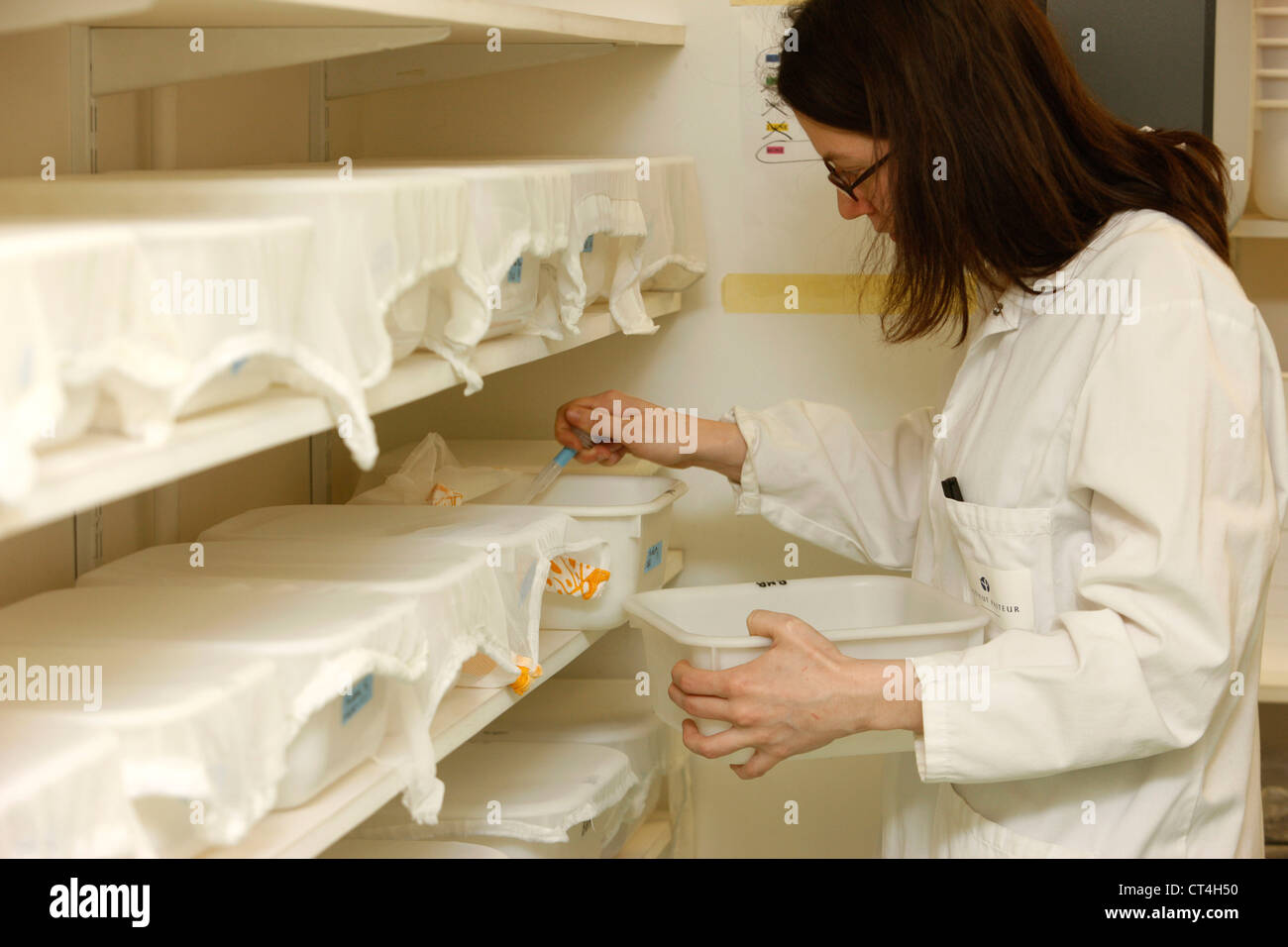 MOSQUITO BREEDING IN LABORATORY Stock Photohttps://www.alamy.com/image-license-details/?v=1https://www.alamy.com/stock-photo-mosquito-breeding-in-laboratory-49273756.html
MOSQUITO BREEDING IN LABORATORY Stock Photohttps://www.alamy.com/image-license-details/?v=1https://www.alamy.com/stock-photo-mosquito-breeding-in-laboratory-49273756.htmlRMCT4H50–MOSQUITO BREEDING IN LABORATORY
 (Sporormiella vexans) Stock Photohttps://www.alamy.com/image-license-details/?v=1https://www.alamy.com/sporormiella-vexans-image629131238.html
(Sporormiella vexans) Stock Photohttps://www.alamy.com/image-license-details/?v=1https://www.alamy.com/sporormiella-vexans-image629131238.htmlRM2YFFB8P–(Sporormiella vexans)
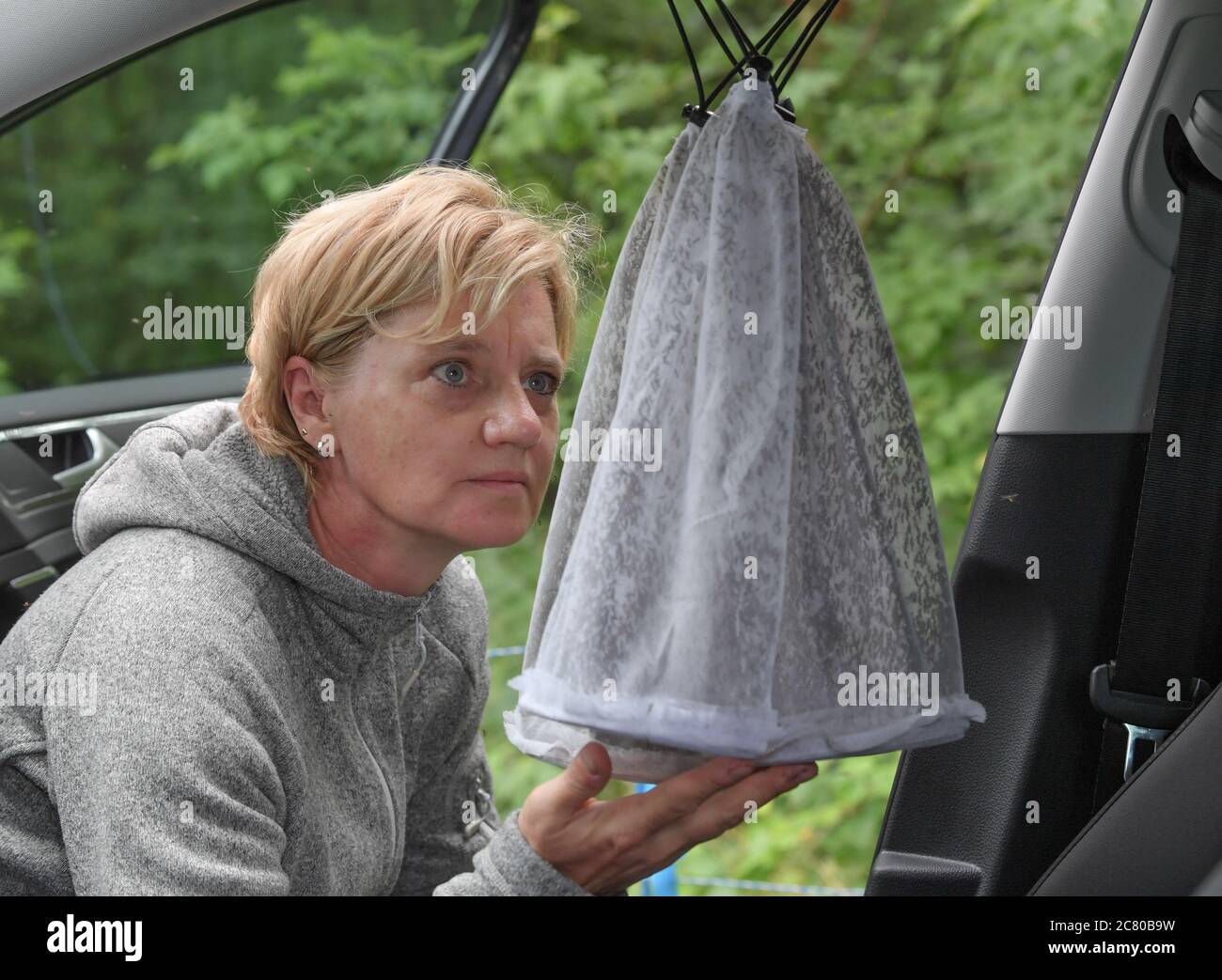 20 July 2020, Brandenburg, Frankfurt (Oder): Doreen Werner, a biologist from the Leibniz Centre for Agricultural Landscape Research (ZALF) at the Institute of Land Use Systems AG Medical Entomology, looks at nets full of mosquitoes of the species Aedes vexans hanging in her car, which is parked in the city's alluvial forest. Due to the slight flooding of the German-Polish border river Oder, large parts of the alluvial forest and adjacent meadows have been flooded in recent weeks. The consequence is a high increase in the mosquito population in these areas. In a test conducted by the researcher Stock Photohttps://www.alamy.com/image-license-details/?v=1https://www.alamy.com/20-july-2020-brandenburg-frankfurt-oder-doreen-werner-a-biologist-from-the-leibniz-centre-for-agricultural-landscape-research-zalf-at-the-institute-of-land-use-systems-ag-medical-entomology-looks-at-nets-full-of-mosquitoes-of-the-species-aedes-vexans-hanging-in-her-car-which-is-parked-in-the-citys-alluvial-forest-due-to-the-slight-flooding-of-the-german-polish-border-river-oder-large-parts-of-the-alluvial-forest-and-adjacent-meadows-have-been-flooded-in-recent-weeks-the-consequence-is-a-high-increase-in-the-mosquito-population-in-these-areas-in-a-test-conducted-by-the-researcher-image366343877.html
20 July 2020, Brandenburg, Frankfurt (Oder): Doreen Werner, a biologist from the Leibniz Centre for Agricultural Landscape Research (ZALF) at the Institute of Land Use Systems AG Medical Entomology, looks at nets full of mosquitoes of the species Aedes vexans hanging in her car, which is parked in the city's alluvial forest. Due to the slight flooding of the German-Polish border river Oder, large parts of the alluvial forest and adjacent meadows have been flooded in recent weeks. The consequence is a high increase in the mosquito population in these areas. In a test conducted by the researcher Stock Photohttps://www.alamy.com/image-license-details/?v=1https://www.alamy.com/20-july-2020-brandenburg-frankfurt-oder-doreen-werner-a-biologist-from-the-leibniz-centre-for-agricultural-landscape-research-zalf-at-the-institute-of-land-use-systems-ag-medical-entomology-looks-at-nets-full-of-mosquitoes-of-the-species-aedes-vexans-hanging-in-her-car-which-is-parked-in-the-citys-alluvial-forest-due-to-the-slight-flooding-of-the-german-polish-border-river-oder-large-parts-of-the-alluvial-forest-and-adjacent-meadows-have-been-flooded-in-recent-weeks-the-consequence-is-a-high-increase-in-the-mosquito-population-in-these-areas-in-a-test-conducted-by-the-researcher-image366343877.htmlRM2C80B9W–20 July 2020, Brandenburg, Frankfurt (Oder): Doreen Werner, a biologist from the Leibniz Centre for Agricultural Landscape Research (ZALF) at the Institute of Land Use Systems AG Medical Entomology, looks at nets full of mosquitoes of the species Aedes vexans hanging in her car, which is parked in the city's alluvial forest. Due to the slight flooding of the German-Polish border river Oder, large parts of the alluvial forest and adjacent meadows have been flooded in recent weeks. The consequence is a high increase in the mosquito population in these areas. In a test conducted by the researcher
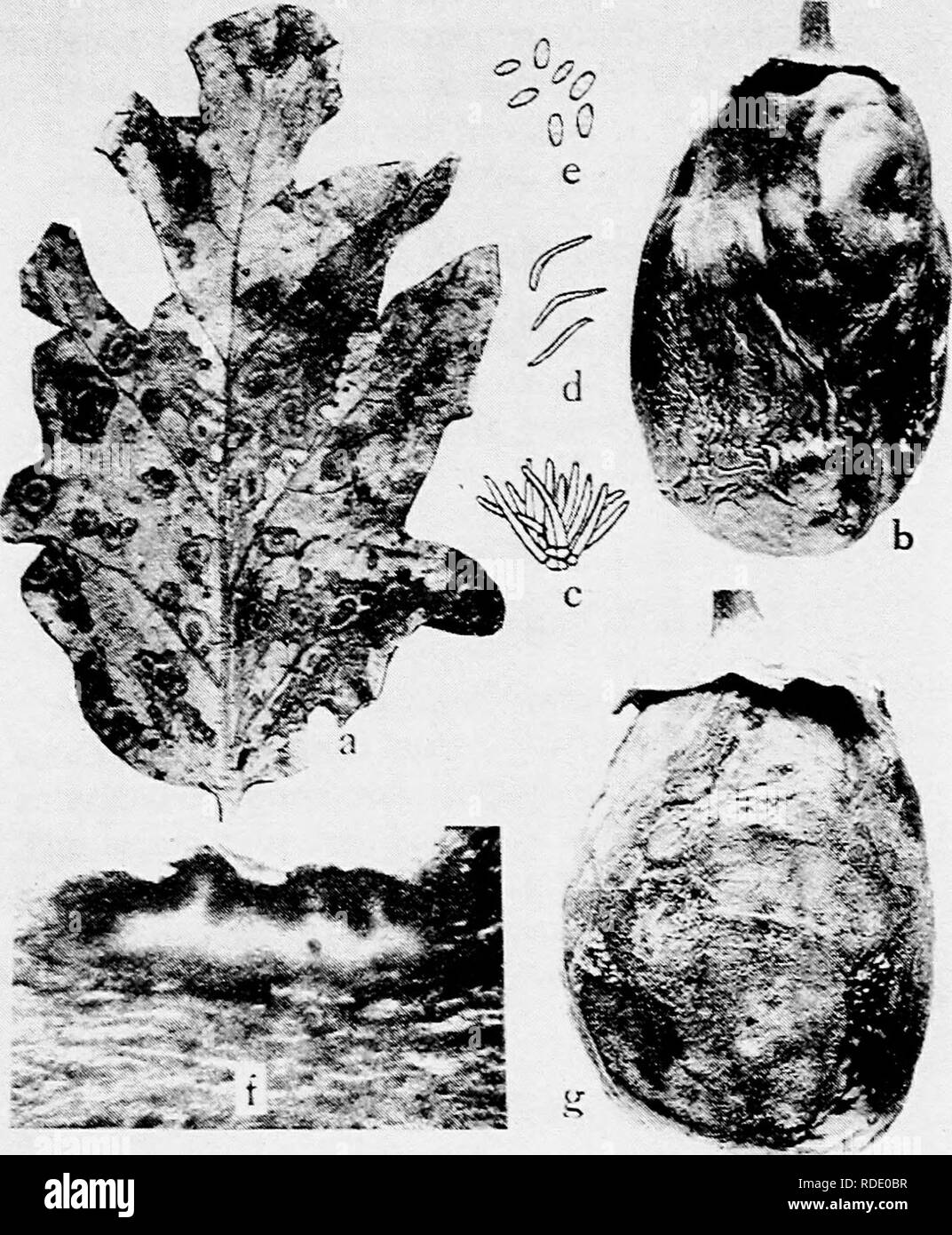 . Diseases of truck crops and their control . Vegetables. Fig. 56. Egg-Plant Diseases. a. Phomopsis of leaf, 6. Phomopsis on fruit, c. cohidiophores, d, stylospores, e. pycnospores of Phomopsis vexans, f. photomicrograph of a cross section through an infected calyx of an egg plant showing pycnidia of P. vexans {c. to /. ^ter Harter), R. anthracnose on egg-plant fruit.. Please note that these images are extracted from scanned page images that may have been digitally enhanced for readability - coloration and appearance of these illustrations may not perfectly resemble the original work.. Taubenh Stock Photohttps://www.alamy.com/image-license-details/?v=1https://www.alamy.com/diseases-of-truck-crops-and-their-control-vegetables-fig-56-egg-plant-diseases-a-phomopsis-of-leaf-6-phomopsis-on-fruit-c-cohidiophores-d-stylospores-e-pycnospores-of-phomopsis-vexans-f-photomicrograph-of-a-cross-section-through-an-infected-calyx-of-an-egg-plant-showing-pycnidia-of-p-vexans-c-to-ter-harter-r-anthracnose-on-egg-plant-fruit-please-note-that-these-images-are-extracted-from-scanned-page-images-that-may-have-been-digitally-enhanced-for-readability-coloration-and-appearance-of-these-illustrations-may-not-perfectly-resemble-the-original-work-taubenh-image232032971.html
. Diseases of truck crops and their control . Vegetables. Fig. 56. Egg-Plant Diseases. a. Phomopsis of leaf, 6. Phomopsis on fruit, c. cohidiophores, d, stylospores, e. pycnospores of Phomopsis vexans, f. photomicrograph of a cross section through an infected calyx of an egg plant showing pycnidia of P. vexans {c. to /. ^ter Harter), R. anthracnose on egg-plant fruit.. Please note that these images are extracted from scanned page images that may have been digitally enhanced for readability - coloration and appearance of these illustrations may not perfectly resemble the original work.. Taubenh Stock Photohttps://www.alamy.com/image-license-details/?v=1https://www.alamy.com/diseases-of-truck-crops-and-their-control-vegetables-fig-56-egg-plant-diseases-a-phomopsis-of-leaf-6-phomopsis-on-fruit-c-cohidiophores-d-stylospores-e-pycnospores-of-phomopsis-vexans-f-photomicrograph-of-a-cross-section-through-an-infected-calyx-of-an-egg-plant-showing-pycnidia-of-p-vexans-c-to-ter-harter-r-anthracnose-on-egg-plant-fruit-please-note-that-these-images-are-extracted-from-scanned-page-images-that-may-have-been-digitally-enhanced-for-readability-coloration-and-appearance-of-these-illustrations-may-not-perfectly-resemble-the-original-work-taubenh-image232032971.htmlRMRDE0BR–. Diseases of truck crops and their control . Vegetables. Fig. 56. Egg-Plant Diseases. a. Phomopsis of leaf, 6. Phomopsis on fruit, c. cohidiophores, d, stylospores, e. pycnospores of Phomopsis vexans, f. photomicrograph of a cross section through an infected calyx of an egg plant showing pycnidia of P. vexans {c. to /. ^ter Harter), R. anthracnose on egg-plant fruit.. Please note that these images are extracted from scanned page images that may have been digitally enhanced for readability - coloration and appearance of these illustrations may not perfectly resemble the original work.. Taubenh
 (Sporormiella vexans) Stock Photohttps://www.alamy.com/image-license-details/?v=1https://www.alamy.com/sporormiella-vexans-image629067766.html
(Sporormiella vexans) Stock Photohttps://www.alamy.com/image-license-details/?v=1https://www.alamy.com/sporormiella-vexans-image629067766.htmlRM2YFCE9X–(Sporormiella vexans)
 20 July 2020, Brandenburg, Frankfurt (Oder): A mosquito of the species Aedes vexans sucks blood on the arm of biologist Doreen Werner, who is standing in the alluvial forest of the city. Doreen Werner from the Leibniz Centre for Agricultural Landscape Research (ZALF) at the Institute of Land Use Systems AG Medical Entomology is currently conducting research into mosquitoes in the floodplain forests. Due to the slight flooding of the German-Polish border river Oder, large parts of the alluvial forest and the adjacent meadows have been flooded in recent weeks. The consequence is a high increase Stock Photohttps://www.alamy.com/image-license-details/?v=1https://www.alamy.com/20-july-2020-brandenburg-frankfurt-oder-a-mosquito-of-the-species-aedes-vexans-sucks-blood-on-the-arm-of-biologist-doreen-werner-who-is-standing-in-the-alluvial-forest-of-the-city-doreen-werner-from-the-leibniz-centre-for-agricultural-landscape-research-zalf-at-the-institute-of-land-use-systems-ag-medical-entomology-is-currently-conducting-research-into-mosquitoes-in-the-floodplain-forests-due-to-the-slight-flooding-of-the-german-polish-border-river-oder-large-parts-of-the-alluvial-forest-and-the-adjacent-meadows-have-been-flooded-in-recent-weeks-the-consequence-is-a-high-increase-image366342609.html
20 July 2020, Brandenburg, Frankfurt (Oder): A mosquito of the species Aedes vexans sucks blood on the arm of biologist Doreen Werner, who is standing in the alluvial forest of the city. Doreen Werner from the Leibniz Centre for Agricultural Landscape Research (ZALF) at the Institute of Land Use Systems AG Medical Entomology is currently conducting research into mosquitoes in the floodplain forests. Due to the slight flooding of the German-Polish border river Oder, large parts of the alluvial forest and the adjacent meadows have been flooded in recent weeks. The consequence is a high increase Stock Photohttps://www.alamy.com/image-license-details/?v=1https://www.alamy.com/20-july-2020-brandenburg-frankfurt-oder-a-mosquito-of-the-species-aedes-vexans-sucks-blood-on-the-arm-of-biologist-doreen-werner-who-is-standing-in-the-alluvial-forest-of-the-city-doreen-werner-from-the-leibniz-centre-for-agricultural-landscape-research-zalf-at-the-institute-of-land-use-systems-ag-medical-entomology-is-currently-conducting-research-into-mosquitoes-in-the-floodplain-forests-due-to-the-slight-flooding-of-the-german-polish-border-river-oder-large-parts-of-the-alluvial-forest-and-the-adjacent-meadows-have-been-flooded-in-recent-weeks-the-consequence-is-a-high-increase-image366342609.htmlRM2C809MH–20 July 2020, Brandenburg, Frankfurt (Oder): A mosquito of the species Aedes vexans sucks blood on the arm of biologist Doreen Werner, who is standing in the alluvial forest of the city. Doreen Werner from the Leibniz Centre for Agricultural Landscape Research (ZALF) at the Institute of Land Use Systems AG Medical Entomology is currently conducting research into mosquitoes in the floodplain forests. Due to the slight flooding of the German-Polish border river Oder, large parts of the alluvial forest and the adjacent meadows have been flooded in recent weeks. The consequence is a high increase
 . Canadian journal of agricultural science. Agricultural Institute of Canada; Agriculture. .y.ii^iyyMiMyi. l'l(iM,lpil lioihim lands—Tlio cliiof smiv Fiasei- Valley. B.C. fif mri.«!riii!fneq. I'ld.iil.ii lui-aduw—The breetling- place of Aedes vexans. The Entomological Brancli of the Dominion Depart- ment of Agriculture, in resjionse to a request from the residents of the district, has for the last two years un- dertaken an investigation of the problem. During the first year a faunal survey was made, and, by means of an automobile over two thousand S(|uare miles of terri- tory were scouted for Stock Photohttps://www.alamy.com/image-license-details/?v=1https://www.alamy.com/canadian-journal-of-agricultural-science-agricultural-institute-of-canada-agriculture-yiiiyymimyi-llimlpil-lioihim-landstlio-cliiof-smiv-fiasei-valley-bc-fif-mri!riii!fneq-ildiilii-lui-aduwthe-breetling-place-of-aedes-vexans-the-entomological-brancli-of-the-dominion-depart-ment-of-agriculture-in-resjionse-to-a-request-from-the-residents-of-the-district-has-for-the-last-two-years-un-dertaken-an-investigation-of-the-problem-during-the-first-year-a-faunal-survey-was-made-and-by-means-of-an-automobile-over-two-thousand-suare-miles-of-terri-tory-were-scouted-for-image233534288.html
. Canadian journal of agricultural science. Agricultural Institute of Canada; Agriculture. .y.ii^iyyMiMyi. l'l(iM,lpil lioihim lands—Tlio cliiof smiv Fiasei- Valley. B.C. fif mri.«!riii!fneq. I'ld.iil.ii lui-aduw—The breetling- place of Aedes vexans. The Entomological Brancli of the Dominion Depart- ment of Agriculture, in resjionse to a request from the residents of the district, has for the last two years un- dertaken an investigation of the problem. During the first year a faunal survey was made, and, by means of an automobile over two thousand S(|uare miles of terri- tory were scouted for Stock Photohttps://www.alamy.com/image-license-details/?v=1https://www.alamy.com/canadian-journal-of-agricultural-science-agricultural-institute-of-canada-agriculture-yiiiyymimyi-llimlpil-lioihim-landstlio-cliiof-smiv-fiasei-valley-bc-fif-mri!riii!fneq-ildiilii-lui-aduwthe-breetling-place-of-aedes-vexans-the-entomological-brancli-of-the-dominion-depart-ment-of-agriculture-in-resjionse-to-a-request-from-the-residents-of-the-district-has-for-the-last-two-years-un-dertaken-an-investigation-of-the-problem-during-the-first-year-a-faunal-survey-was-made-and-by-means-of-an-automobile-over-two-thousand-suare-miles-of-terri-tory-were-scouted-for-image233534288.htmlRMRFXBA8–. Canadian journal of agricultural science. Agricultural Institute of Canada; Agriculture. .y.ii^iyyMiMyi. l'l(iM,lpil lioihim lands—Tlio cliiof smiv Fiasei- Valley. B.C. fif mri.«!riii!fneq. I'ld.iil.ii lui-aduw—The breetling- place of Aedes vexans. The Entomological Brancli of the Dominion Depart- ment of Agriculture, in resjionse to a request from the residents of the district, has for the last two years un- dertaken an investigation of the problem. During the first year a faunal survey was made, and, by means of an automobile over two thousand S(|uare miles of terri- tory were scouted for
 19 July 2020, Brandenburg, Frankfurt (Oder): Doreen Werner, biologist from the Leibniz Centre for Agricultural Landscape Research (ZALF) at the Institute of Land Use Systems AG Medical Entomology, catches mosquitoes of the species Aedes vexans in the city's alluvial forest with a landing net. Due to the slight flooding of the German-Polish border river Oder, large parts of the alluvial forest and the adjacent meadows have been flooded in recent weeks. The consequence is a high increase in the mosquito population in these areas. In a test conducted by the researcher, around 60 mosquitoes were c Stock Photohttps://www.alamy.com/image-license-details/?v=1https://www.alamy.com/19-july-2020-brandenburg-frankfurt-oder-doreen-werner-biologist-from-the-leibniz-centre-for-agricultural-landscape-research-zalf-at-the-institute-of-land-use-systems-ag-medical-entomology-catches-mosquitoes-of-the-species-aedes-vexans-in-the-citys-alluvial-forest-with-a-landing-net-due-to-the-slight-flooding-of-the-german-polish-border-river-oder-large-parts-of-the-alluvial-forest-and-the-adjacent-meadows-have-been-flooded-in-recent-weeks-the-consequence-is-a-high-increase-in-the-mosquito-population-in-these-areas-in-a-test-conducted-by-the-researcher-around-60-mosquitoes-were-c-image366348186.html
19 July 2020, Brandenburg, Frankfurt (Oder): Doreen Werner, biologist from the Leibniz Centre for Agricultural Landscape Research (ZALF) at the Institute of Land Use Systems AG Medical Entomology, catches mosquitoes of the species Aedes vexans in the city's alluvial forest with a landing net. Due to the slight flooding of the German-Polish border river Oder, large parts of the alluvial forest and the adjacent meadows have been flooded in recent weeks. The consequence is a high increase in the mosquito population in these areas. In a test conducted by the researcher, around 60 mosquitoes were c Stock Photohttps://www.alamy.com/image-license-details/?v=1https://www.alamy.com/19-july-2020-brandenburg-frankfurt-oder-doreen-werner-biologist-from-the-leibniz-centre-for-agricultural-landscape-research-zalf-at-the-institute-of-land-use-systems-ag-medical-entomology-catches-mosquitoes-of-the-species-aedes-vexans-in-the-citys-alluvial-forest-with-a-landing-net-due-to-the-slight-flooding-of-the-german-polish-border-river-oder-large-parts-of-the-alluvial-forest-and-the-adjacent-meadows-have-been-flooded-in-recent-weeks-the-consequence-is-a-high-increase-in-the-mosquito-population-in-these-areas-in-a-test-conducted-by-the-researcher-around-60-mosquitoes-were-c-image366348186.htmlRM2C80GRP–19 July 2020, Brandenburg, Frankfurt (Oder): Doreen Werner, biologist from the Leibniz Centre for Agricultural Landscape Research (ZALF) at the Institute of Land Use Systems AG Medical Entomology, catches mosquitoes of the species Aedes vexans in the city's alluvial forest with a landing net. Due to the slight flooding of the German-Polish border river Oder, large parts of the alluvial forest and the adjacent meadows have been flooded in recent weeks. The consequence is a high increase in the mosquito population in these areas. In a test conducted by the researcher, around 60 mosquitoes were c
 (Sporormiella vexans) Stock Photohttps://www.alamy.com/image-license-details/?v=1https://www.alamy.com/sporormiella-vexans-image629105079.html
(Sporormiella vexans) Stock Photohttps://www.alamy.com/image-license-details/?v=1https://www.alamy.com/sporormiella-vexans-image629105079.htmlRM2YFE5XF–(Sporormiella vexans)
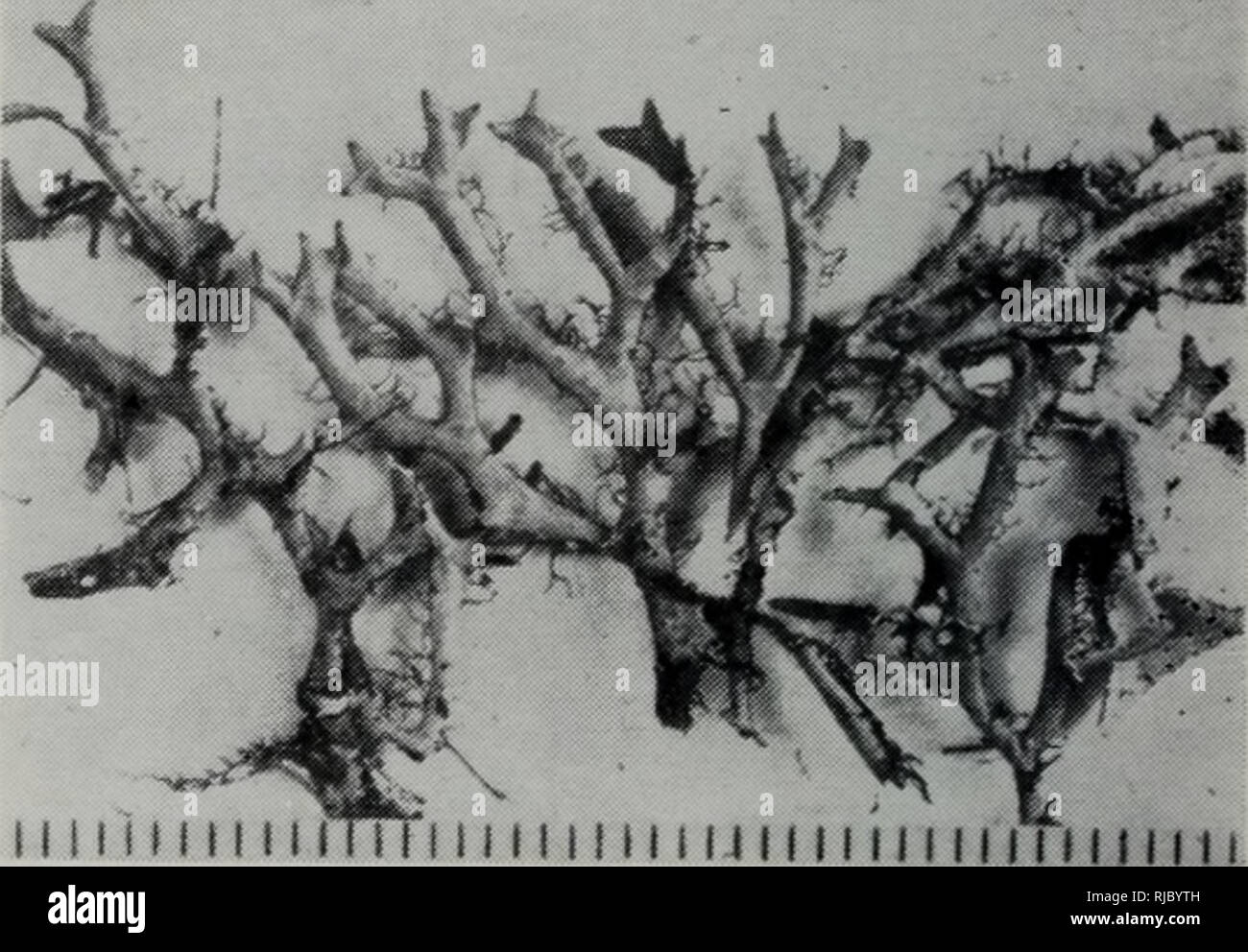 . chang jiang san jiao zhou ji lin jin di qu bao zi zhi wu zhi ???????????????. botany. m m m m t m m m m m m 1 m? 162. Cetrariastrum vexans 157. Cetrelia collata •?. 161. Cetrariastrum cirrhatum. Please note that these images are extracted from scanned page images that may have been digitally enhanced for readability - coloration and appearance of these illustrations may not perfectly resemble the original work.. shang hai zi ran bo wu guan bian zhu?????????. shang hai ke xue ji shu chu ban she????????? Stock Photohttps://www.alamy.com/image-license-details/?v=1https://www.alamy.com/chang-jiang-san-jiao-zhou-ji-lin-jin-di-qu-bao-zi-zhi-wu-zhi-botany-m-m-m-m-t-m-m-m-m-m-m-1-m-162-cetrariastrum-vexans-157-cetrelia-collata-161-cetrariastrum-cirrhatum-please-note-that-these-images-are-extracted-from-scanned-page-images-that-may-have-been-digitally-enhanced-for-readability-coloration-and-appearance-of-these-illustrations-may-not-perfectly-resemble-the-original-work-shang-hai-zi-ran-bo-wu-guan-bian-zhu-shang-hai-ke-xue-ji-shu-chu-ban-she-image235061921.html
. chang jiang san jiao zhou ji lin jin di qu bao zi zhi wu zhi ???????????????. botany. m m m m t m m m m m m 1 m? 162. Cetrariastrum vexans 157. Cetrelia collata •?. 161. Cetrariastrum cirrhatum. Please note that these images are extracted from scanned page images that may have been digitally enhanced for readability - coloration and appearance of these illustrations may not perfectly resemble the original work.. shang hai zi ran bo wu guan bian zhu?????????. shang hai ke xue ji shu chu ban she????????? Stock Photohttps://www.alamy.com/image-license-details/?v=1https://www.alamy.com/chang-jiang-san-jiao-zhou-ji-lin-jin-di-qu-bao-zi-zhi-wu-zhi-botany-m-m-m-m-t-m-m-m-m-m-m-1-m-162-cetrariastrum-vexans-157-cetrelia-collata-161-cetrariastrum-cirrhatum-please-note-that-these-images-are-extracted-from-scanned-page-images-that-may-have-been-digitally-enhanced-for-readability-coloration-and-appearance-of-these-illustrations-may-not-perfectly-resemble-the-original-work-shang-hai-zi-ran-bo-wu-guan-bian-zhu-shang-hai-ke-xue-ji-shu-chu-ban-she-image235061921.htmlRMRJBYTH–. chang jiang san jiao zhou ji lin jin di qu bao zi zhi wu zhi ???????????????. botany. m m m m t m m m m m m 1 m? 162. Cetrariastrum vexans 157. Cetrelia collata •?. 161. Cetrariastrum cirrhatum. Please note that these images are extracted from scanned page images that may have been digitally enhanced for readability - coloration and appearance of these illustrations may not perfectly resemble the original work.. shang hai zi ran bo wu guan bian zhu?????????. shang hai ke xue ji shu chu ban she?????????
 19 July 2020, Brandenburg, Frankfurt (Oder): Doreen Werner, biologist from the Leibniz Centre for Agricultural Landscape Research (ZALF) at the Institute of Land Use Systems AG Medical Entomology, has caught many mosquitoes of the species Aedes vexans in a landing net in the city's alluvial forest. Due to the slight flooding of the German-Polish border river Oder, large parts of the alluvial forest and the adjacent meadows have been flooded in recent weeks. The consequence is a high increase in the mosquito population in these areas. In a test conducted by the researcher, around 60 mosquitoes Stock Photohttps://www.alamy.com/image-license-details/?v=1https://www.alamy.com/19-july-2020-brandenburg-frankfurt-oder-doreen-werner-biologist-from-the-leibniz-centre-for-agricultural-landscape-research-zalf-at-the-institute-of-land-use-systems-ag-medical-entomology-has-caught-many-mosquitoes-of-the-species-aedes-vexans-in-a-landing-net-in-the-citys-alluvial-forest-due-to-the-slight-flooding-of-the-german-polish-border-river-oder-large-parts-of-the-alluvial-forest-and-the-adjacent-meadows-have-been-flooded-in-recent-weeks-the-consequence-is-a-high-increase-in-the-mosquito-population-in-these-areas-in-a-test-conducted-by-the-researcher-around-60-mosquitoes-image366348188.html
19 July 2020, Brandenburg, Frankfurt (Oder): Doreen Werner, biologist from the Leibniz Centre for Agricultural Landscape Research (ZALF) at the Institute of Land Use Systems AG Medical Entomology, has caught many mosquitoes of the species Aedes vexans in a landing net in the city's alluvial forest. Due to the slight flooding of the German-Polish border river Oder, large parts of the alluvial forest and the adjacent meadows have been flooded in recent weeks. The consequence is a high increase in the mosquito population in these areas. In a test conducted by the researcher, around 60 mosquitoes Stock Photohttps://www.alamy.com/image-license-details/?v=1https://www.alamy.com/19-july-2020-brandenburg-frankfurt-oder-doreen-werner-biologist-from-the-leibniz-centre-for-agricultural-landscape-research-zalf-at-the-institute-of-land-use-systems-ag-medical-entomology-has-caught-many-mosquitoes-of-the-species-aedes-vexans-in-a-landing-net-in-the-citys-alluvial-forest-due-to-the-slight-flooding-of-the-german-polish-border-river-oder-large-parts-of-the-alluvial-forest-and-the-adjacent-meadows-have-been-flooded-in-recent-weeks-the-consequence-is-a-high-increase-in-the-mosquito-population-in-these-areas-in-a-test-conducted-by-the-researcher-around-60-mosquitoes-image366348188.htmlRM2C80GRT–19 July 2020, Brandenburg, Frankfurt (Oder): Doreen Werner, biologist from the Leibniz Centre for Agricultural Landscape Research (ZALF) at the Institute of Land Use Systems AG Medical Entomology, has caught many mosquitoes of the species Aedes vexans in a landing net in the city's alluvial forest. Due to the slight flooding of the German-Polish border river Oder, large parts of the alluvial forest and the adjacent meadows have been flooded in recent weeks. The consequence is a high increase in the mosquito population in these areas. In a test conducted by the researcher, around 60 mosquitoes
 (Sporormiella vexans) Stock Photohttps://www.alamy.com/image-license-details/?v=1https://www.alamy.com/sporormiella-vexans-image627908419.html
(Sporormiella vexans) Stock Photohttps://www.alamy.com/image-license-details/?v=1https://www.alamy.com/sporormiella-vexans-image627908419.htmlRM2YDFKGK–(Sporormiella vexans)
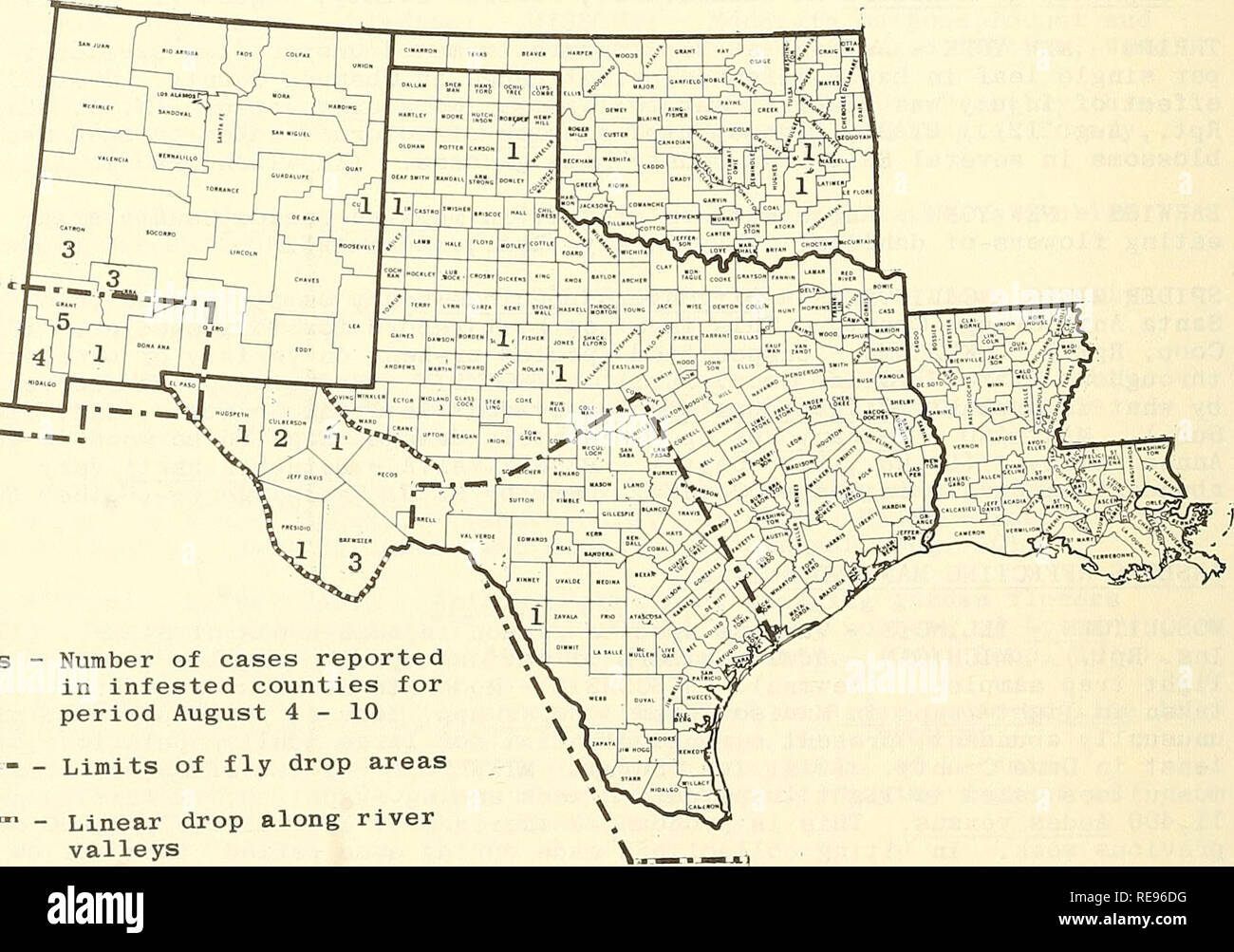 . Cooperative economic insect report. Beneficial insects; Insect pests. - 996 - now show an additional decline in numbers. (Minn. Ins. Rpt.). NORTH DAKOTA - Survey of sewerage lagoons showed mosquito populations not high. Aedes dorsalis present, but Aedes nigromaculis and Aedes vexans account for most complaints. Culex tarsalis increasing in numbers, and 80 percent of larvae in first and second stages. Egg masses of latter species reached 3 per dip at some locations. (Noetzel). NEVADA - Aedes spp. and Culex tarsalis adult populations heavy in Reno-Sparks area, Washoe County. (Coop. Rpt.). OKLA Stock Photohttps://www.alamy.com/image-license-details/?v=1https://www.alamy.com/cooperative-economic-insect-report-beneficial-insects-insect-pests-996-now-show-an-additional-decline-in-numbers-minn-ins-rpt-north-dakota-survey-of-sewerage-lagoons-showed-mosquito-populations-not-high-aedes-dorsalis-present-but-aedes-nigromaculis-and-aedes-vexans-account-for-most-complaints-culex-tarsalis-increasing-in-numbers-and-80-percent-of-larvae-in-first-and-second-stages-egg-masses-of-latter-species-reached-3-per-dip-at-some-locations-noetzel-nevada-aedes-spp-and-culex-tarsalis-adult-populations-heavy-in-reno-sparks-area-washoe-county-coop-rpt-okla-image232542620.html
. Cooperative economic insect report. Beneficial insects; Insect pests. - 996 - now show an additional decline in numbers. (Minn. Ins. Rpt.). NORTH DAKOTA - Survey of sewerage lagoons showed mosquito populations not high. Aedes dorsalis present, but Aedes nigromaculis and Aedes vexans account for most complaints. Culex tarsalis increasing in numbers, and 80 percent of larvae in first and second stages. Egg masses of latter species reached 3 per dip at some locations. (Noetzel). NEVADA - Aedes spp. and Culex tarsalis adult populations heavy in Reno-Sparks area, Washoe County. (Coop. Rpt.). OKLA Stock Photohttps://www.alamy.com/image-license-details/?v=1https://www.alamy.com/cooperative-economic-insect-report-beneficial-insects-insect-pests-996-now-show-an-additional-decline-in-numbers-minn-ins-rpt-north-dakota-survey-of-sewerage-lagoons-showed-mosquito-populations-not-high-aedes-dorsalis-present-but-aedes-nigromaculis-and-aedes-vexans-account-for-most-complaints-culex-tarsalis-increasing-in-numbers-and-80-percent-of-larvae-in-first-and-second-stages-egg-masses-of-latter-species-reached-3-per-dip-at-some-locations-noetzel-nevada-aedes-spp-and-culex-tarsalis-adult-populations-heavy-in-reno-sparks-area-washoe-county-coop-rpt-okla-image232542620.htmlRMRE96DG–. Cooperative economic insect report. Beneficial insects; Insect pests. - 996 - now show an additional decline in numbers. (Minn. Ins. Rpt.). NORTH DAKOTA - Survey of sewerage lagoons showed mosquito populations not high. Aedes dorsalis present, but Aedes nigromaculis and Aedes vexans account for most complaints. Culex tarsalis increasing in numbers, and 80 percent of larvae in first and second stages. Egg masses of latter species reached 3 per dip at some locations. (Noetzel). NEVADA - Aedes spp. and Culex tarsalis adult populations heavy in Reno-Sparks area, Washoe County. (Coop. Rpt.). OKLA
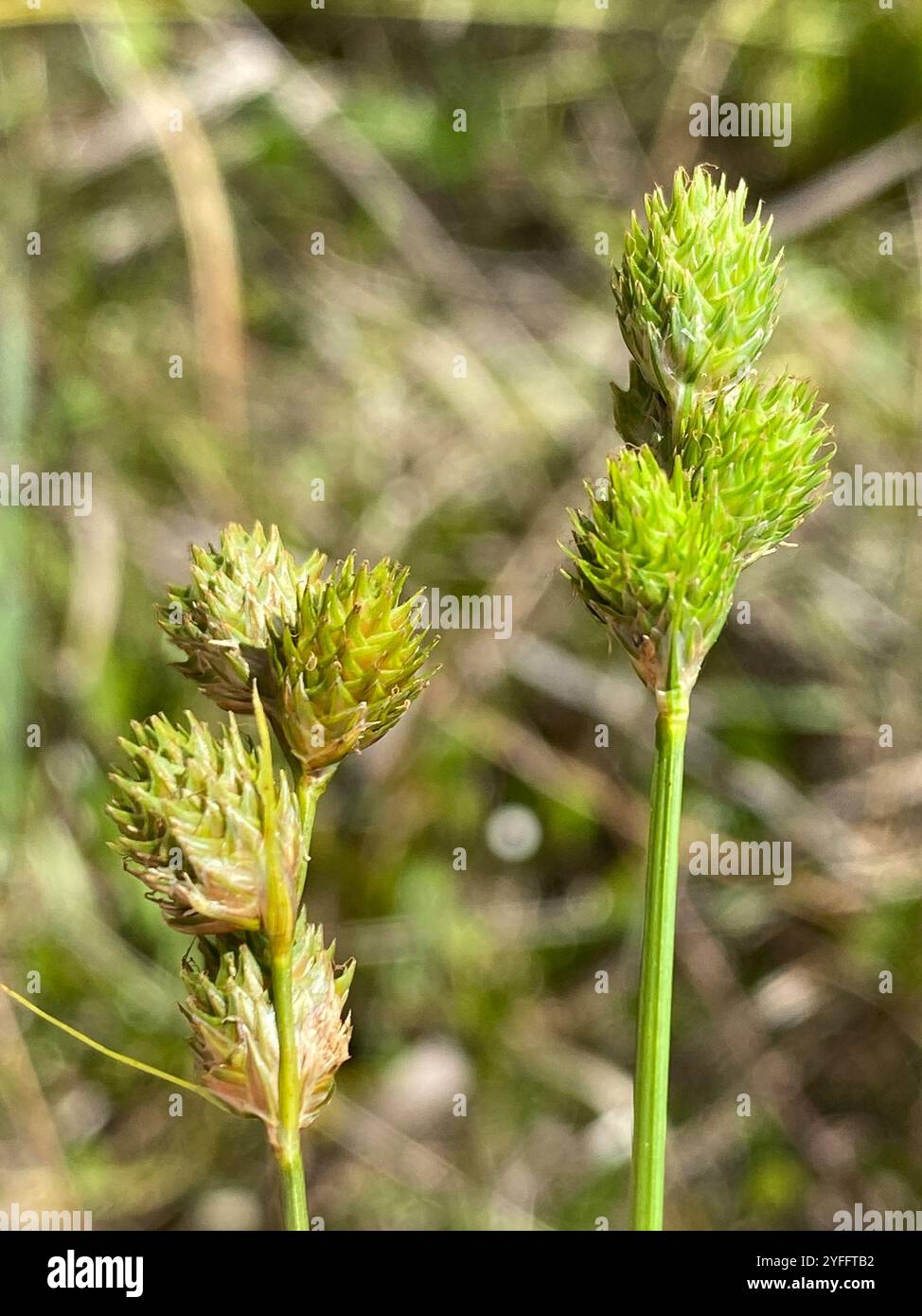 Florida Hammock Sedge (Carex vexans) Stock Photohttps://www.alamy.com/image-license-details/?v=1https://www.alamy.com/florida-hammock-sedge-carex-vexans-image629141494.html
Florida Hammock Sedge (Carex vexans) Stock Photohttps://www.alamy.com/image-license-details/?v=1https://www.alamy.com/florida-hammock-sedge-carex-vexans-image629141494.htmlRM2YFFTB2–Florida Hammock Sedge (Carex vexans)
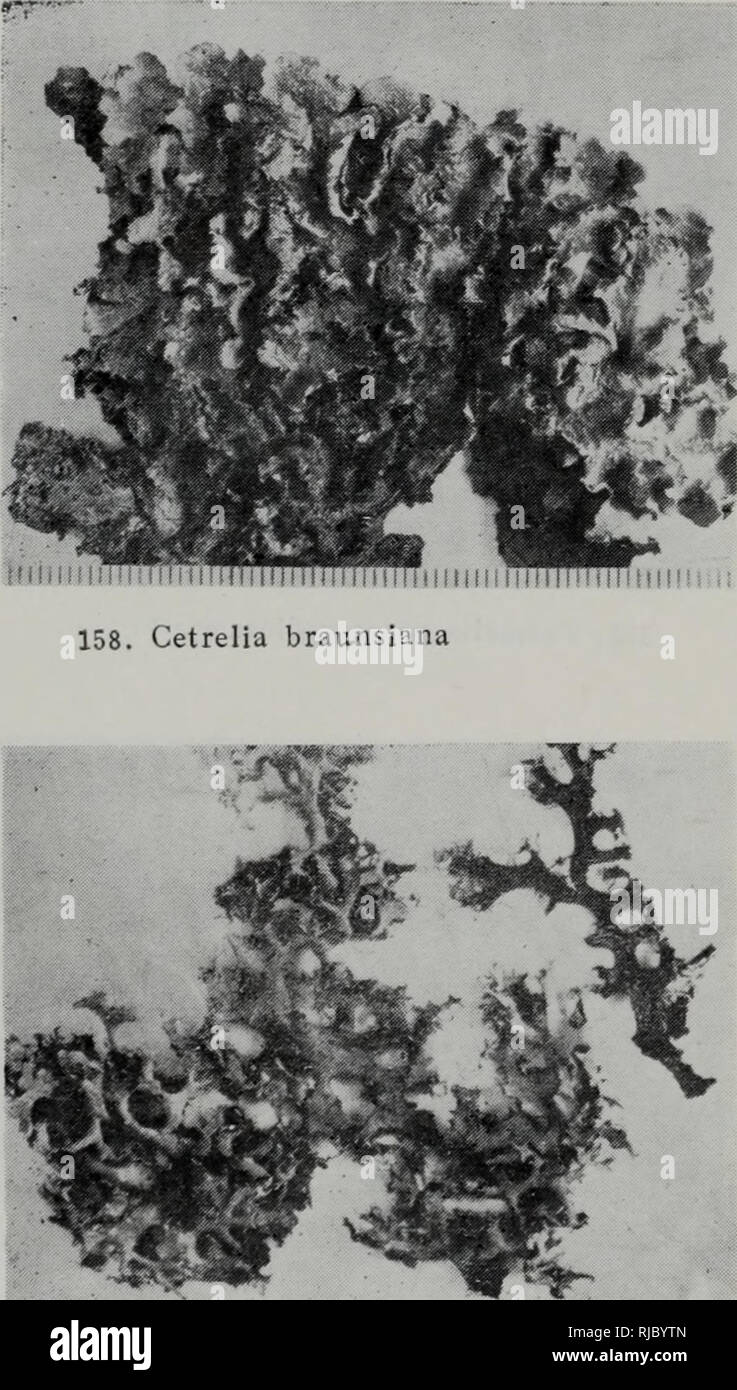 . chang jiang san jiao zhou ji lin jin di qu bao zi zhi wu zhi ???????????????. botany. 155. Cetraria pallescens. m m m m t m m m m m m 1 m? 162. Cetrariastrum vexans 157. Cetrelia collata •?. Please note that these images are extracted from scanned page images that may have been digitally enhanced for readability - coloration and appearance of these illustrations may not perfectly resemble the original work.. shang hai zi ran bo wu guan bian zhu?????????. shang hai ke xue ji shu chu ban she????????? Stock Photohttps://www.alamy.com/image-license-details/?v=1https://www.alamy.com/chang-jiang-san-jiao-zhou-ji-lin-jin-di-qu-bao-zi-zhi-wu-zhi-botany-155-cetraria-pallescens-m-m-m-m-t-m-m-m-m-m-m-1-m-162-cetrariastrum-vexans-157-cetrelia-collata-please-note-that-these-images-are-extracted-from-scanned-page-images-that-may-have-been-digitally-enhanced-for-readability-coloration-and-appearance-of-these-illustrations-may-not-perfectly-resemble-the-original-work-shang-hai-zi-ran-bo-wu-guan-bian-zhu-shang-hai-ke-xue-ji-shu-chu-ban-she-image235061925.html
. chang jiang san jiao zhou ji lin jin di qu bao zi zhi wu zhi ???????????????. botany. 155. Cetraria pallescens. m m m m t m m m m m m 1 m? 162. Cetrariastrum vexans 157. Cetrelia collata •?. Please note that these images are extracted from scanned page images that may have been digitally enhanced for readability - coloration and appearance of these illustrations may not perfectly resemble the original work.. shang hai zi ran bo wu guan bian zhu?????????. shang hai ke xue ji shu chu ban she????????? Stock Photohttps://www.alamy.com/image-license-details/?v=1https://www.alamy.com/chang-jiang-san-jiao-zhou-ji-lin-jin-di-qu-bao-zi-zhi-wu-zhi-botany-155-cetraria-pallescens-m-m-m-m-t-m-m-m-m-m-m-1-m-162-cetrariastrum-vexans-157-cetrelia-collata-please-note-that-these-images-are-extracted-from-scanned-page-images-that-may-have-been-digitally-enhanced-for-readability-coloration-and-appearance-of-these-illustrations-may-not-perfectly-resemble-the-original-work-shang-hai-zi-ran-bo-wu-guan-bian-zhu-shang-hai-ke-xue-ji-shu-chu-ban-she-image235061925.htmlRMRJBYTN–. chang jiang san jiao zhou ji lin jin di qu bao zi zhi wu zhi ???????????????. botany. 155. Cetraria pallescens. m m m m t m m m m m m 1 m? 162. Cetrariastrum vexans 157. Cetrelia collata •?. Please note that these images are extracted from scanned page images that may have been digitally enhanced for readability - coloration and appearance of these illustrations may not perfectly resemble the original work.. shang hai zi ran bo wu guan bian zhu?????????. shang hai ke xue ji shu chu ban she?????????
 Inland Floodwater Mosquito (Aedes vexans) Stock Photohttps://www.alamy.com/image-license-details/?v=1https://www.alamy.com/inland-floodwater-mosquito-aedes-vexans-image631989829.html
Inland Floodwater Mosquito (Aedes vexans) Stock Photohttps://www.alamy.com/image-license-details/?v=1https://www.alamy.com/inland-floodwater-mosquito-aedes-vexans-image631989829.htmlRM2YM5HD9–Inland Floodwater Mosquito (Aedes vexans)
 . Cooperative economic insect report. Beneficial insects; Insect pests. - 774 - 12, Culiseta inornata in 65, Anopheles punctipennis in 5. Rain during period June 29-July 2 ranged 1.5-3.25 inches in 6 counties composing Minneapolis-St. Paul area; this produced heavy brood of Aedes spp., principally A. vexans â which were mainly third and fourth instars as of July 6, Emergence will begin July 9 and additional annoyance can be expected by July 15. (Minn. Ins, Rpt.). WISCONSIN - Little change in mosquito situation noted since last report. (Wis. Ins. Sur.). RHODE ISLAND - Little activity reported d Stock Photohttps://www.alamy.com/image-license-details/?v=1https://www.alamy.com/cooperative-economic-insect-report-beneficial-insects-insect-pests-774-12-culiseta-inornata-in-65-anopheles-punctipennis-in-5-rain-during-period-june-29-july-2-ranged-15-325-inches-in-6-counties-composing-minneapolis-st-paul-area-this-produced-heavy-brood-of-aedes-spp-principally-a-vexans-which-were-mainly-third-and-fourth-instars-as-of-july-6-emergence-will-begin-july-9-and-additional-annoyance-can-be-expected-by-july-15-minn-ins-rpt-wisconsin-little-change-in-mosquito-situation-noted-since-last-report-wis-ins-sur-rhode-island-little-activity-reported-d-image232517622.html
. Cooperative economic insect report. Beneficial insects; Insect pests. - 774 - 12, Culiseta inornata in 65, Anopheles punctipennis in 5. Rain during period June 29-July 2 ranged 1.5-3.25 inches in 6 counties composing Minneapolis-St. Paul area; this produced heavy brood of Aedes spp., principally A. vexans â which were mainly third and fourth instars as of July 6, Emergence will begin July 9 and additional annoyance can be expected by July 15. (Minn. Ins, Rpt.). WISCONSIN - Little change in mosquito situation noted since last report. (Wis. Ins. Sur.). RHODE ISLAND - Little activity reported d Stock Photohttps://www.alamy.com/image-license-details/?v=1https://www.alamy.com/cooperative-economic-insect-report-beneficial-insects-insect-pests-774-12-culiseta-inornata-in-65-anopheles-punctipennis-in-5-rain-during-period-june-29-july-2-ranged-15-325-inches-in-6-counties-composing-minneapolis-st-paul-area-this-produced-heavy-brood-of-aedes-spp-principally-a-vexans-which-were-mainly-third-and-fourth-instars-as-of-july-6-emergence-will-begin-july-9-and-additional-annoyance-can-be-expected-by-july-15-minn-ins-rpt-wisconsin-little-change-in-mosquito-situation-noted-since-last-report-wis-ins-sur-rhode-island-little-activity-reported-d-image232517622.htmlRMRE82GP–. Cooperative economic insect report. Beneficial insects; Insect pests. - 774 - 12, Culiseta inornata in 65, Anopheles punctipennis in 5. Rain during period June 29-July 2 ranged 1.5-3.25 inches in 6 counties composing Minneapolis-St. Paul area; this produced heavy brood of Aedes spp., principally A. vexans â which were mainly third and fourth instars as of July 6, Emergence will begin July 9 and additional annoyance can be expected by July 15. (Minn. Ins, Rpt.). WISCONSIN - Little change in mosquito situation noted since last report. (Wis. Ins. Sur.). RHODE ISLAND - Little activity reported d
 Inland Floodwater Mosquito (Aedes vexans) Insecta Stock Photohttps://www.alamy.com/image-license-details/?v=1https://www.alamy.com/inland-floodwater-mosquito-aedes-vexans-insecta-image615310332.html
Inland Floodwater Mosquito (Aedes vexans) Insecta Stock Photohttps://www.alamy.com/image-license-details/?v=1https://www.alamy.com/inland-floodwater-mosquito-aedes-vexans-insecta-image615310332.htmlRM2XN1PH0–Inland Floodwater Mosquito (Aedes vexans) Insecta
 . Cooperative economic insect report. Beneficial insects; Insect pests. - 904 - Culex pipiens in 16 percent, Culex territans in 11 percent, Culex tarsalis in 8 percent, Culiseta inornata in 5 percent of collections. Light trap collections down somewhat; 32 percent of total collection males, 55 percent of total Aedes vexans females. Number of Mansonia per turbans taken in light traps down 50 percent from previous week. In daytime bite collections, 84 percent were Aedes vexans and 4 percent Aedes dorsalis; of total of 2,365 mosquitoes taken, 99 percent were Aedes spp. In evening bite collections Stock Photohttps://www.alamy.com/image-license-details/?v=1https://www.alamy.com/cooperative-economic-insect-report-beneficial-insects-insect-pests-904-culex-pipiens-in-16-percent-culex-territans-in-11-percent-culex-tarsalis-in-8-percent-culiseta-inornata-in-5-percent-of-collections-light-trap-collections-down-somewhat-32-percent-of-total-collection-males-55-percent-of-total-aedes-vexans-females-number-of-mansonia-per-turbans-taken-in-light-traps-down-50-percent-from-previous-week-in-daytime-bite-collections-84-percent-were-aedes-vexans-and-4-percent-aedes-dorsalis-of-total-of-2365-mosquitoes-taken-99-percent-were-aedes-spp-in-evening-bite-collections-image232517576.html
. Cooperative economic insect report. Beneficial insects; Insect pests. - 904 - Culex pipiens in 16 percent, Culex territans in 11 percent, Culex tarsalis in 8 percent, Culiseta inornata in 5 percent of collections. Light trap collections down somewhat; 32 percent of total collection males, 55 percent of total Aedes vexans females. Number of Mansonia per turbans taken in light traps down 50 percent from previous week. In daytime bite collections, 84 percent were Aedes vexans and 4 percent Aedes dorsalis; of total of 2,365 mosquitoes taken, 99 percent were Aedes spp. In evening bite collections Stock Photohttps://www.alamy.com/image-license-details/?v=1https://www.alamy.com/cooperative-economic-insect-report-beneficial-insects-insect-pests-904-culex-pipiens-in-16-percent-culex-territans-in-11-percent-culex-tarsalis-in-8-percent-culiseta-inornata-in-5-percent-of-collections-light-trap-collections-down-somewhat-32-percent-of-total-collection-males-55-percent-of-total-aedes-vexans-females-number-of-mansonia-per-turbans-taken-in-light-traps-down-50-percent-from-previous-week-in-daytime-bite-collections-84-percent-were-aedes-vexans-and-4-percent-aedes-dorsalis-of-total-of-2365-mosquitoes-taken-99-percent-were-aedes-spp-in-evening-bite-collections-image232517576.htmlRMRE82F4–. Cooperative economic insect report. Beneficial insects; Insect pests. - 904 - Culex pipiens in 16 percent, Culex territans in 11 percent, Culex tarsalis in 8 percent, Culiseta inornata in 5 percent of collections. Light trap collections down somewhat; 32 percent of total collection males, 55 percent of total Aedes vexans females. Number of Mansonia per turbans taken in light traps down 50 percent from previous week. In daytime bite collections, 84 percent were Aedes vexans and 4 percent Aedes dorsalis; of total of 2,365 mosquitoes taken, 99 percent were Aedes spp. In evening bite collections